FLATPÅCKED FÖRESTS
IKEA’s illegal timber problem and the flawed green label behind it
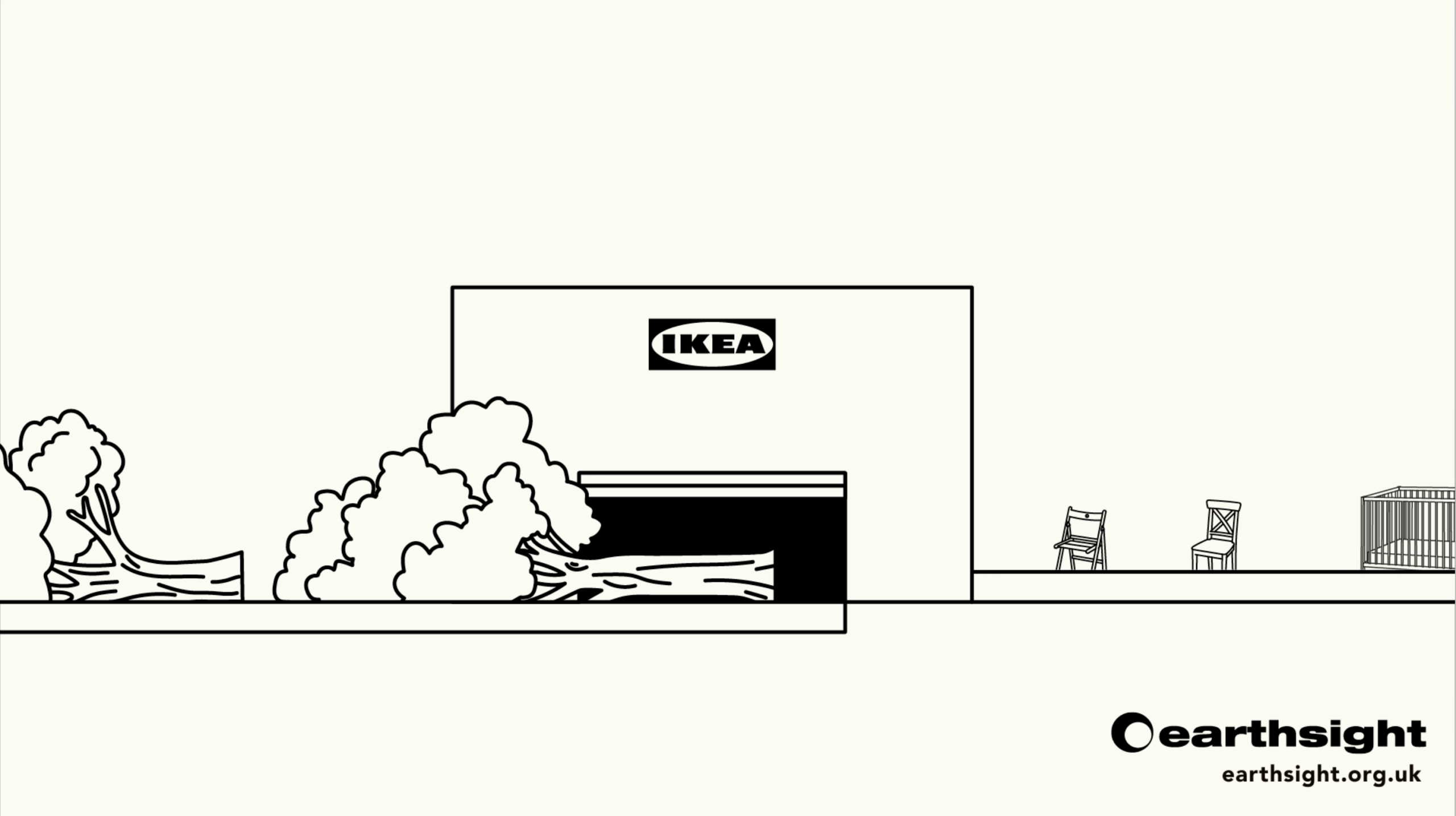
Key Findings
- Earthsight’s 18-month-long investigation has found that Ikea is selling beech chairs made from wood which was illegally felled in the forests of the Ukrainian Carpathians, home to endangered lynx and bear. Illegal wood has been used to make a number of well-known products, including its iconic folding, slatted Terje chair and best-selling Ingolf dining chair. Tens of thousands of chairs made from illegal wood are being sold at Ikea stores across the globe each year, including in the US, UK and Germany.
- This illegal harvesting is being enabled by the corrupt state-owned forestry enterprises which run most of Ukraine’s forests.
- Continued illegal logging to supply Ikea’s beech chairs was even detected by Earthsight during the worldwide Coronavirus (Covid-19) lockdown of April 2020.
- Many of Ikea’s melamine-coated chipboard furniture products are also made from Ukrainian wood of suspect origin. During the reign of the notoriously corrupt President Viktor Yanukovych in 2011-14, millions of dollars in bribes were being paid into offshore accounts of his corrupt cronies by overseas companies to access timber. Earthsight’s investigation shows it is highly likely that wood on which such bribes had been paid subsequently made its way into Ikea products.
- Ikea is the largest consumer of wood in the world. In 2019, 21 million cubic metres of logs were used to make its products. Laid end-to-end, they would stretch seven times around the Earth. Earthsight has calculated that it currently consumes approximately one tree every second.
- Powered by a relentless push for growth, Ikea’s wood consumption has doubled in the last decade. Every year, it has to consume 1.8-2.5 million more trees than it did the year before. To supply these trees and manufacture its goods cheaply, Ikea has become highly reliant on Eastern Europe and Russia. Ikea has a history of scandal in its operations in these countries.
- To prevent illegally and unsustainably harvested wood from entering its supply chains, Ikea mainly relies on the Forest Stewardship Council (FSC), the world’s leading green labelling system for timber. Its tree-tick symbol is to be found on millions of wood and paper products around the world. Yet FSC has conspicuously failed. The illegal wood in Ikea’s beech chairs was FSC-certified, as were many of the logs on which bribes were paid during the Yanukovych era. Ukrainian forester whistle-blowers told Earthsight how cosy FSC’s auditors were with their corrupt bosses, and how easy it was to pull the wool over their eyes.
- FSC’s failures in Ukraine are replicated all over the world. Rampant illegal logging. Clearance of vast tracts of precious rainforest. Beatings and murder of local communities. From Brazil to the Congo, from Peru to Russia, you name it and FSC-certified firms have stood accused of complicity in it. Long-standing structural flaws in FSC systems, including huge conflicts of interest, mean such problems will inevitably continue. While all serious environmentalists advocate a strategy of ‘reduce, re-use, recycle’, FSC recommends consumers buy more virgin wood and paper. By failing to reform, FSC is now actively undermining efforts to protect forests and thereby help rescue humanity from climate breakdown.
- Meanwhile, Ikea’s ‘fast furniture’ business model is contributing to rapidly increasing furniture waste in the countries in which it operates. Earthsight has calculated that Americans, for example, are throwing away 40 per cent more furniture per capita than when Ikea arrived on its shores.
- Ikea has among the best environmental credentials of any large furniture firm. FSC is by far the best label of its kind. But as global leaders, they must do better. To be the truly responsible citizen it claims, Ikea should change its business model, charge more for its products and forego relentless growth. FSC must urgently address its systemic flaws and amend its philosophy to make it fit for the 21st Century. Ikea must be willing to abandon it if it does not. In the meantime, it must act urgently to put in place better systems of its own and use them to clean up its supply chains from Ukraine and elsewhere.
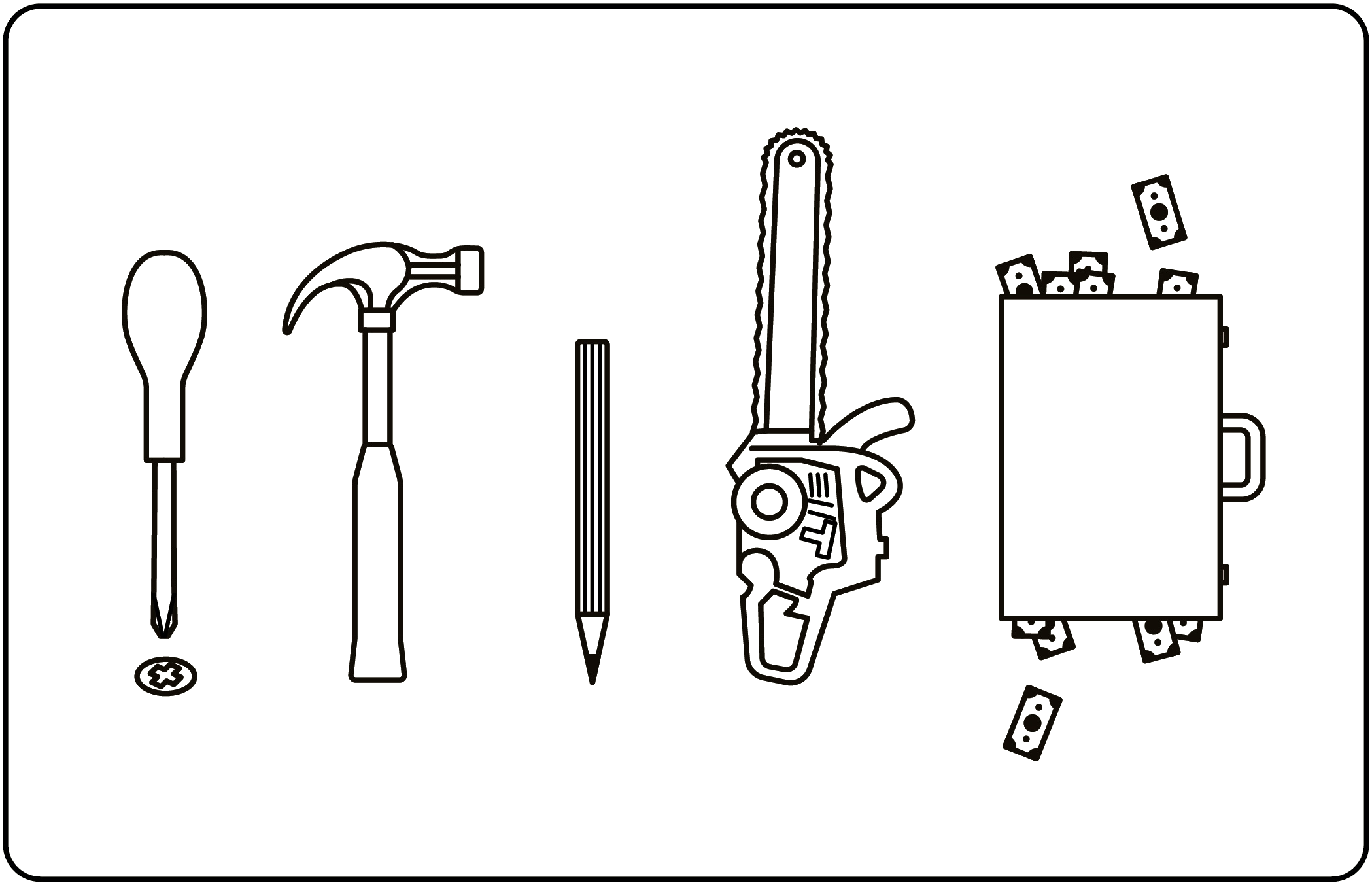
Executive Summary
One tree every second: Feeding Ikea's fast furniture empire
A source of cheap, flat-packed products to suit every taste, Ikea revolutionised the way furniture is made, and forever changed the way we furnish our homes. But the Swedish giant’s ‘fast furniture’ model has long put enormous pressure on forests globally. Ikea is the largest buyer of wood and the largest retailer of wood furniture on the planet. It consumed 21 million cubic metres of wood in 2019, which is a line of logs that would encircle the Earth seven times. Earthsight has calculated that it consumes one tree every second, and that each year it churns through 2 million more trees than the year before.
The company owes its success largely to the exploitation of cheap labour and relatively intact forests in the countries of the former eastern bloc. With this dependence has come a steady stream of scandals. From pay-offs to Romania's brutal communist-era secret police to bribery scandals connected to its Russian operations, Ikea is no stranger to controversy. The company is even currently under investigation by the EU for billion-Euro tax evasion.
Earthsight has discovered that Ikea is the largest consumer of timber from Ukraine, a country whose lush forests are one of the last strongholds for large European mammals like bear, bison, lynx and wolf.
Over 18 months, Earthsight has gone on the trail to investigate Ikea’s Ukrainian timber purchases, tracing some of Ikea’s most iconic products from shelves to their forest source. We travelled hundreds of miles across Ukraine to interview government officials, whistle blowers, timber industry insiders and activists. We scoured thousands of documents and made dozens of freedom of information requests. The story we are able to tell as a result sits uncomfortably with the picture of a Scandinavian utopia Ikea sells to its public.
The environmental destruction behind Ikea furniture
In July 2018, Earthsight released the findings of a previous investigation on illegal logging in Ukraine. We showed that the country’s entirely state-owned forests were suffering from an epidemic of illegality. Forty per cent of the €1 billion of wood being shipped to the EU each year was suspect. At the centre of the problem lay Ukraine’s State Agency of Forest Resources (SAFR). In a troubling conflict of interest, the SAFR is responsible for both protecting Ukraine’s forests and extracting timber from them. We found it was also steeped in corruption.
The report made national headlines and prompted a crackdown on illegal timber by Ukraine’s former Prime Minister, Volodymyr Groysman. Many of Earthsight’s findings were corroborated by subsequent reports, including one conducted by experts from the EU. The momentum created by these events offered a brief, crucial window for meaningful reform. It should have translated into SAFR being restructured, for increased environmental enforcement and for transparency to be drastically scaled up. But while the new administration has made some inroads into increasing transparency, the SAFR top brass remains in deep denial, and their agency unreformed. Our new report shows the old problems have continued, and explores why. What we found has global implications.
We begin our story in Velyky Bychkiv, whose state forestry enterprise (SFE) manages an area ten times the size of Manhattan in the most heavily forested and biodiverse part of the Ukrainian Carpathians. Its beautiful, mountainous terrain is blanketed with natural forests of slow-growing beech trees. The beech tree is an umbrella species, able to support a rich variety of biodiversity in and under its canopy. Unfortunately, it is also sought after for its attractive orange-tinted hardwood.
Our research shows that illegal logging is rife in these forests. Inspections by Ukraine’s State Environmental Inspectorate (SEI) confirmed Velyky Bychkiv SFE had illegally licensed ‘sanitary’ felling on more than a hundred sites from April to June 2018. For several weeks over this period, such logging is banned by Ukrainian wildlife laws because of their importance to breeding animals. Lynx and several endangered bird species have been identified in Velyky Bychkiv’s forests and depend on the relief from logging that the silence period provides to raise their young. Earthsight found that more than half of the saleable wood harvested in the SFE during this time was illegal. Data obtained by Earthsight shows the SFE carried on illegal sanitary logging at the same rate during the silence periods in 2019 and in 2020. And it turns out this is far from the only illegality common in these forests. We uncovered evidence that the SFE had failed to conduct required environmental impact assessments before logging on several sites, and allowed the logging of healthy trees under the pretext they were diseased – a common ruse in Ukraine which has allowed harvests to massively exceed levels determined to be sustainable. Evidence of further breaches of regulations during harvesting was also detected, such as cutting outside prescribed boundaries and polluting streams.
Many of the sites in Velyky Bychkiv where we found illegalities – including ten of the sites listed by the SEI - were logged by a local Ukrainian furniture and timber company named VGSM. We even found VGSM clearing beech forests under illegal permits during the worldwide Coronavirus (Covid-19) lockdown in April 2020. Much of the beech cut by others is also bought by VGSM, which dominates the local industry, buying three-quarters of the commercial beech cut in the SFE’s forests. In a pattern of illegality, Earthsight also uncovered serious problems in 14 of 16 other Ukrainian state-owned firms we found had sold timber to VGSM in recent years.
Earthsight discovered that VGSM is one of the largest Ukrainian suppliers to Ikea. There can be little doubt the illegal wood entering VGSM’s large factory is ending up in its products. At least 96 per cent of the company’s production is ultimately destined for the Swedish giant. Part of VGSM’s production is shipped direct to Ikea, but most takes the form of parts to be completed by Plimob, a firm just across the border in Romania and equally dependent on Ikea as a customer. We were able to confirm that wood from VGSM is to be found in a wide range of popular Ikea products, including its best-selling Ingolf dining chair. Altogether, up to one million chairs containing wood from VGSM are being sold by Ikea each year. That’s enough seats to pack Wembley Stadium in London to the rafters more than 10 times over. These chairs are shipped all over the world, including to Ikea stores in the UK, Germany, US and France.
Ikea’s Ukrainian timber problem isn’t confined to its beech chairs. Most of its wood products – including furniture, shelving and kitchen units – are made from cheap woodchip boards coated with veneer or melamine. The second-largest producer of these panels in the world – and an important supplier to Ikea – is a company called Egger. During 2019 it imported almost $2 million of wood from suppliers in Ukraine which have been the repeated subjects of criminal proceedings regarding illegal logging and illegal timber trading. One, an SFE in Chernivtsi province in the Ukrainian Carpathians, was fined hundreds of thousands of dollars for such activities in 2018.
The illegalities and corruption risks in Ikea’s Ukrainian supply chains which Earthsight documented are almost certainly the tip of the iceberg. One experienced forester we spoke to in late 2019 told us that illegal logging took place as a matter of course in all SFEs in the region. He said the situation with state-sanctioned illegal logging in the country had “never been worse”.
Ikea’s Ukrainian problem also isn’t confined to corruption at a local level. The head of the forest agency in Zakarpattia - the province in which VGSM sources most of its wood – was sacked in January 2020 while under investigation for corruptly allowing illegal logging. In the recent past at least, the corruption involved has gone to the very top. Ukrainian prosecutors allege that during the era of kleptocratic President Viktor Yanukovych in 2011-14, bribes were being paid to his crony at the forest agency for sales of logs to foreign companies. Egger and another Ikea supplier of the time, Holzindustrie Schweighofer (now HS Timber Company) were among the largest log importers during that period. As Earthsight revealed in 2018, a Schweighofer subsidiary has been directly implicated in the multi-million dollar bribery scheme, the formal investigation of which remains open. The subsidiary concerned insists it always acted according to relevant laws and regulations.
Ikea, VGSM, Plimob and Egger all also deny wrongdoing. A full summary of their responses to our draft findings is included at the end of this report.
How the world’s largest green label for wood is failing its forests
Ikea has failed to prevent illegal, unsustainable wood being used for its products. Behind this failure is the Forest Stewardship Council (FSC), the world’s largest green label for wood. Ikea has come to rely to a great extent on FSC’s audits to ensure its wood is good. It has committed to source 100 per cent of its fresh wood from sources certified by FSC by August 2020.
With the support of Ikea and other large wood product retailers, FSC has become the go-to label used by companies to signal to their customers that they are protecting forests. A quarter of the world’s timber production is now FSC certified, and its well-known green tree-tick symbol can be found on everything from toilet roll to printing paper, milk cartons, furniture and even clothing. Created by green groups and progressively minded companies in 1993, FSC certification is meant to guarantee that wood products are friendly to the environment, workers and forest peoples, as well as legal. But it is failing.
All of Ikea’s Ukrainian wood is FSC-certified. Velyky Bychkiv, as well as almost all the other state-owned logging firms and companies we investigated for this report like VGSM, Plimob and Egger, carry FSC’s stamp of approval. Despite the plentiful evidence of wrongdoing we unearthed, successive FSC audits of all these same suppliers mysteriously failed to detect a single one of these problems - not even the large-scale illegality confirmed by government inspectors in Velyky Bychkiv in 2018.
Though FSC’s failings in Ukraine were already dramatically demonstrated in Earthsight’s 2018 report, we found little has changed as a result. That is because FSC refuses to address the fundamental flaws in its systems which are driving its failures in Ukraine and elsewhere. FSC auditing bodies are competing entities, vying for business from the logging companies which pay them. That serves to create a ‘race to the bottom’, driving down the quality of inspections. They are supposed to act as unbiased independent observers. But Ukrainian NGOs told Earthsight they behave more like advocates for the state-owned logging firms. FSC has even been lobbying the Ukrainian government to roll back the very environmental regulations we found being systematically flouted in certified forests.
In October 2019, an experienced forester from an FSC-certified Carpathian enterprise told Earthsight of just how cosy the relationship between FSC auditors and senior officials of the state logging companies they inspect can be. He said once the formalities of the “dog and pony show” inspection were completed, the auditors and SFE leadership would retire to a summerhouse in the woods to party on alcohol, meat skewers and spicy ‘bogracz’ stew. Even where auditors are intent on doing their job, the same whistleblower confirmed how easily SFE officials can hoodwink them.
FSC’s failures in Ukraine are happening because of deep-rooted problems in the organisation which have remained unaddressed for many years. As Part V of this report documents, there have been numerous scandals involving FSC-certified companies. From the Amazon and South-East Asia to the Congo Basin and Russia, FSC has been repeatedly linked to illegal logging, destruction of intact forests, violations of community rights, high-level corruption and human rights abuses. Almost all such examples have been exposed by activists, not FSC’s own checks. And while it has thrown some companies out, FSC has failed to address the underlying flaws in its systems which keep allowing these cases to happen.
In addition to failing to remove the fundamental conflict of interest described above, FSC continues to allow companies to associate themselves with FSC while selling no FSC-certified wood. It refuses to implement systems for tracking wood from forest to shelf, despite evidence of widespread laundering of uncertified wood into its supply chains. It repeatedly gives companies the benefit of the doubt, even in highly corrupt countries. It is not pro-active in searching for wrongdoing, and does not use a precautionary approach. According to its current rules, even if the ‘preponderance of evidence’ is that an FSC-certified company is guilty of heinous crimes like massive illegal logging and rights abuses, they cannot and will not throw them out.
Even FSC’s fundamental philosophy is flawed. It is wedded to a perverse neoliberal logic that to save trees, you must cut them down. As a result, while all serious environmentalists advocate a strategy of ‘reduce, re-use, recycle’, Earthsight found FSC’s leaders recommending consumers buy more virgin wood and paper.
FSC isn’t just failing to protect forests in Ukraine and elsewhere; it is actively undermining efforts to do so. By greenwashing wood from SAFR forests in Ukraine, for example, it removes pressure on it to reform. By promoting virgin FSC paper, it undermines sales of recycled paper. By greenwashing illegal wood as legal, it undermines laws in the US and EU meant to block trade in stolen timber. By providing false reassurance to conscientious consumers, it makes them less likely to take the correct action.
Many of the green groups who once backed FSC have left. Greenpeace finally walked in 2017, saying it had become a “tool for timber extraction”. But FSC continues to grow, because it has the vocal support of the world’s largest wood buyer, along with that of the world’s largest conservation organisation, WWF. The silence of these behemoths on FSC’s flaws is having real consequences.
A moment of reckoning for the era of ‘fast furniture’, and for FSC
Ikea and FSC’s failures matter, and not only for forests or for Ukraine. The timber industry remains a major driver of deforestation and forest degradation worldwide, which is in turn responsible for 10 per cent of climate-changing emissions. If we are to rescue humanity from climate breakdown, we must leave trees standing and allow forests to recover and regrow.
Incredibly – given this report’s findings – Ikea and FSC are the good guys. Ikea has among the best environmental credentials of any large furniture firm. It has funded nature protection projects, including in Ukraine. FSC is by far the best of its kind. But as global leaders, they must do better. Where they go, others follow. Where they don’t, others won’t.
While FSC’s failure to reform is increasingly undermining other efforts to protect forests, at the root of Ikea’s problem is its ‘fast furniture’ business model. It has been said that Ikea’s true genius has been to make furniture disposable. Earthsight has calculated that Americans, for example, are throwing away 40 per cent more furniture per capita than when Ikea arrived on its shores. Though Ikea has been piloting schemes like furniture rental and return to address this problem, they have had little impact. Meanwhile its new CEO has declared an intention to pursue cheapness like never before.
The relentless pressure on prices which Ikea shifts on to its competing suppliers has other consequences. The companies making Ikea’s beech chairs are almost entirely dependent on it and are in no position to negotiate. As VGSM’s boss has said, “the money [Ikea] manages is an amount far greater than the budget of Ukraine. When [they] offer a [price], you either agree or you don’t.” Companies like VGSM must accept Ikea’s prices or face bankruptcy. It is no wonder many choose to cut corners on the environment instead.
To be a truly good citizen, Ikea would need to change its business model, increase its prices, and sacrifice profits and growth in order to do so. But short of that, there is already a lot more it could and should do.
For Ikea or FSC to single out only the suppliers named in this report or its purchases in Ukraine for scrutiny would be to miss the point spectacularly. Velyky Bychkiv and VGSM are not bad apples in an otherwise good bunch. They are fairly typical of SFEs and timber companies in Ukraine. In fact, most are probably worse. Ikea buys much more wood from other countries like Russia where illegality and corruption are rife, relying on the same flawed FSC systems to ensure those purchases are legitimate. The only reason similar issues have not been exposed in other Ikea supply chains is because no one has really looked. Ikea also cannot solve its problem by moving to another green label. FSC’s competitors are far worse.
Aside from pursuing the use of recycled wood much more vigorously, Ikea must instead use its huge influence to change FSC into an organisation fit for the 21st Century. Ikea – and FSC’s other key supporter, WWF – must set a timetable for change, and be willing to walk away if there is no real progress. In the meantime, Ikea must act urgently to put in place better systems of its own and use them to clean up its supply chains from Ukraine and elsewhere.
Addressing the impact of consumption on forests will also require more action by governments, both in forest countries and consumer countries like the EU. The future of the world’s forests lies in their hands, and there are lessons for them here too.
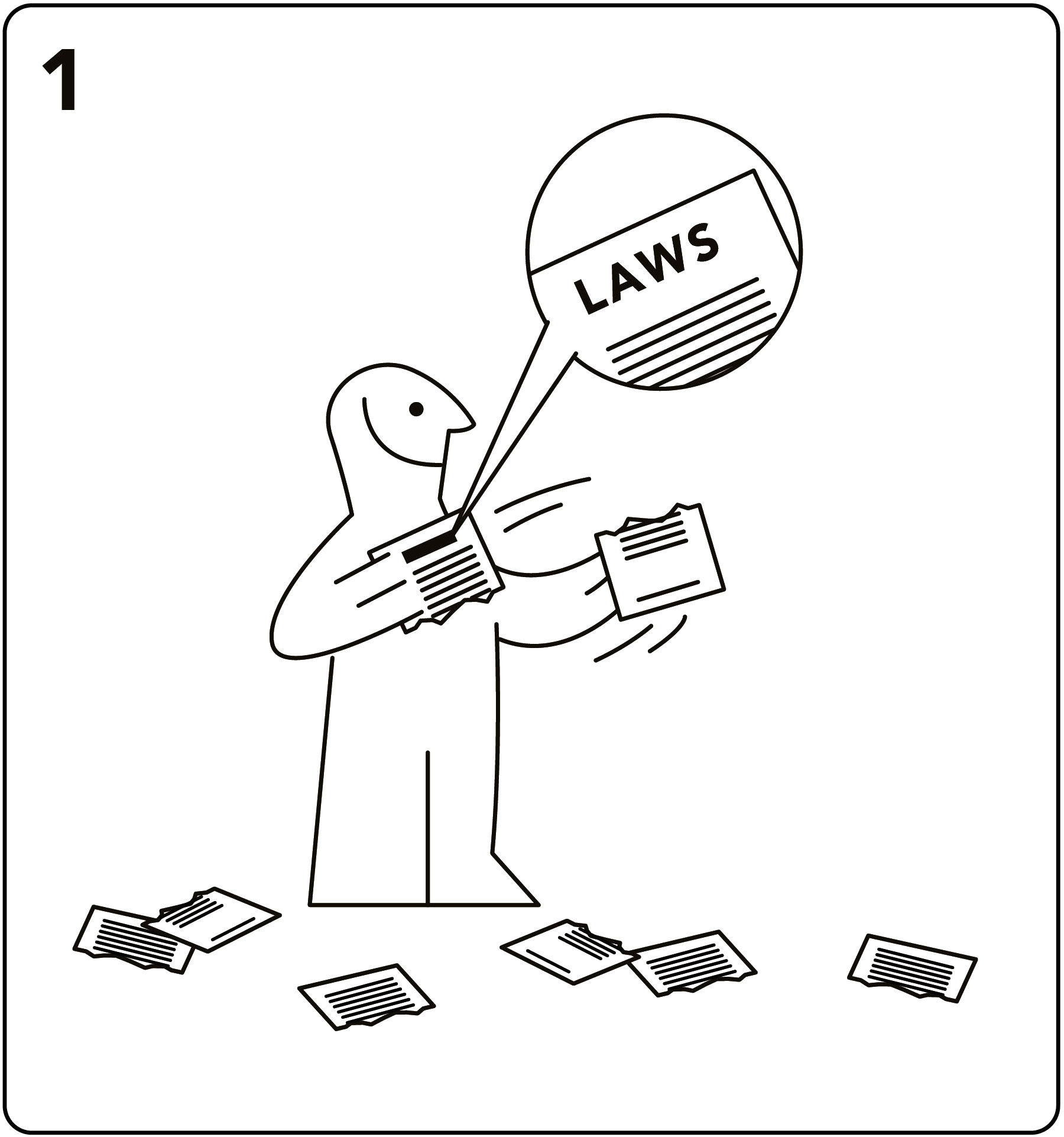
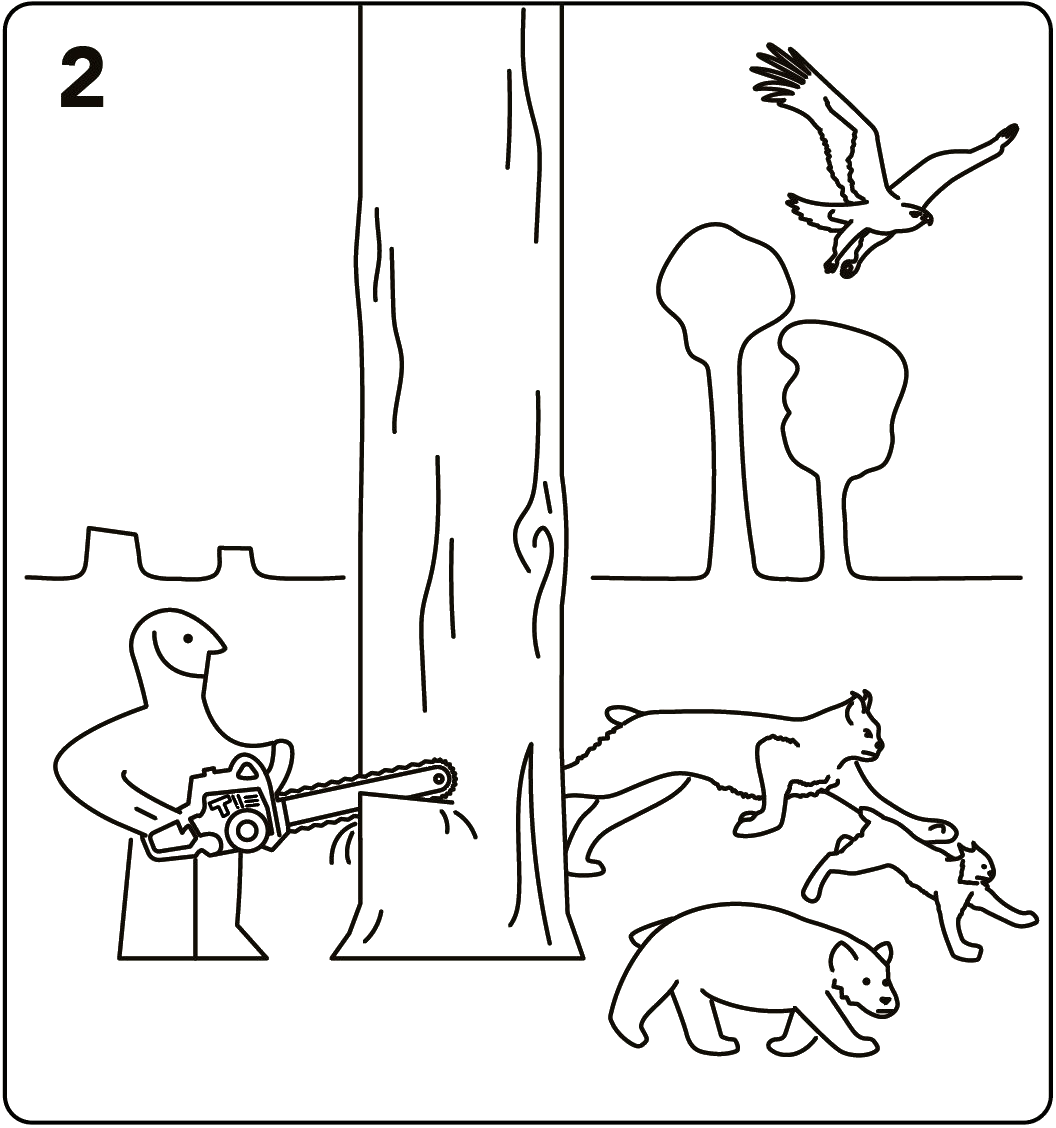

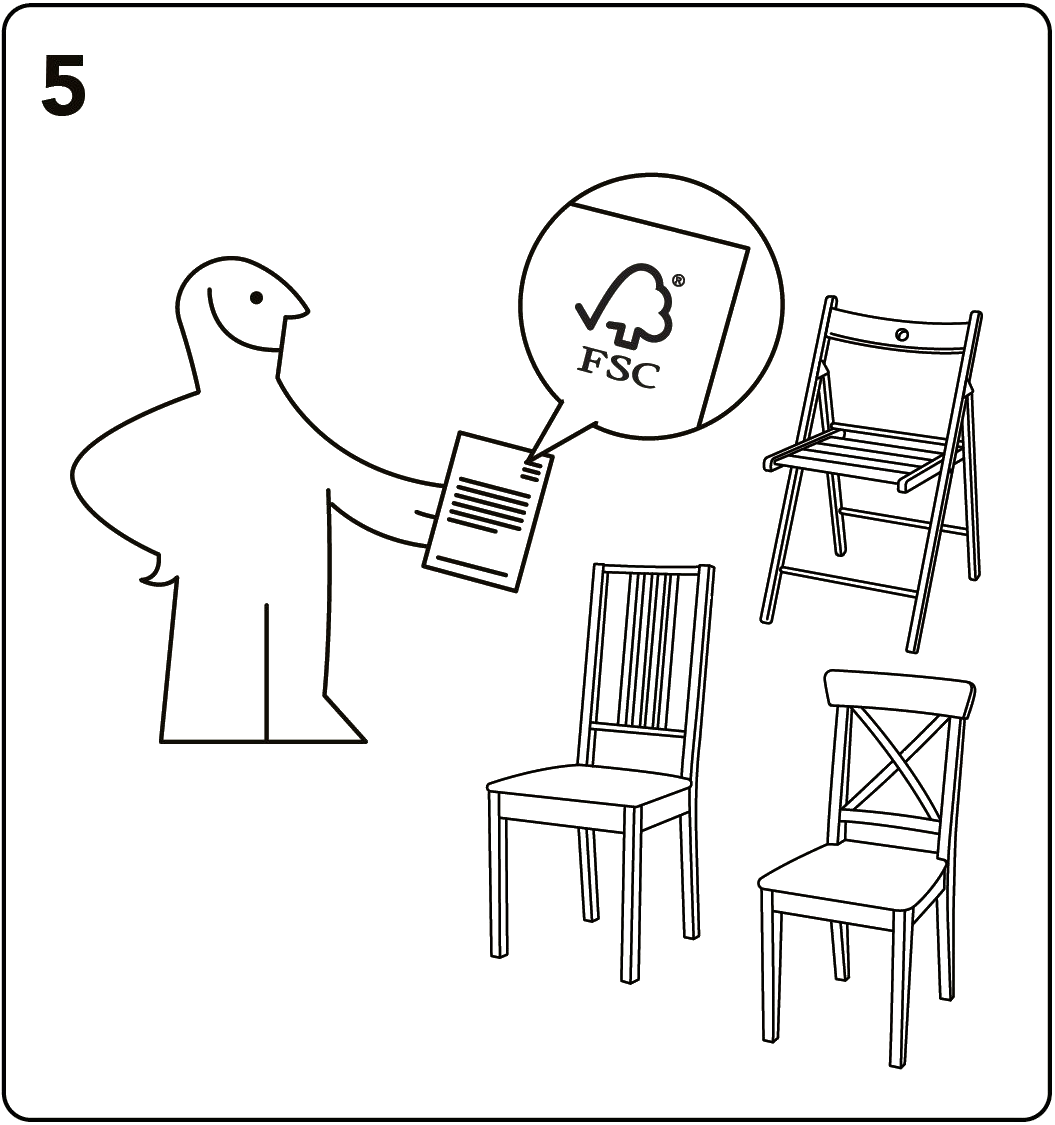
Part I: The illegality and corruption plaguing Ukraine’s forests
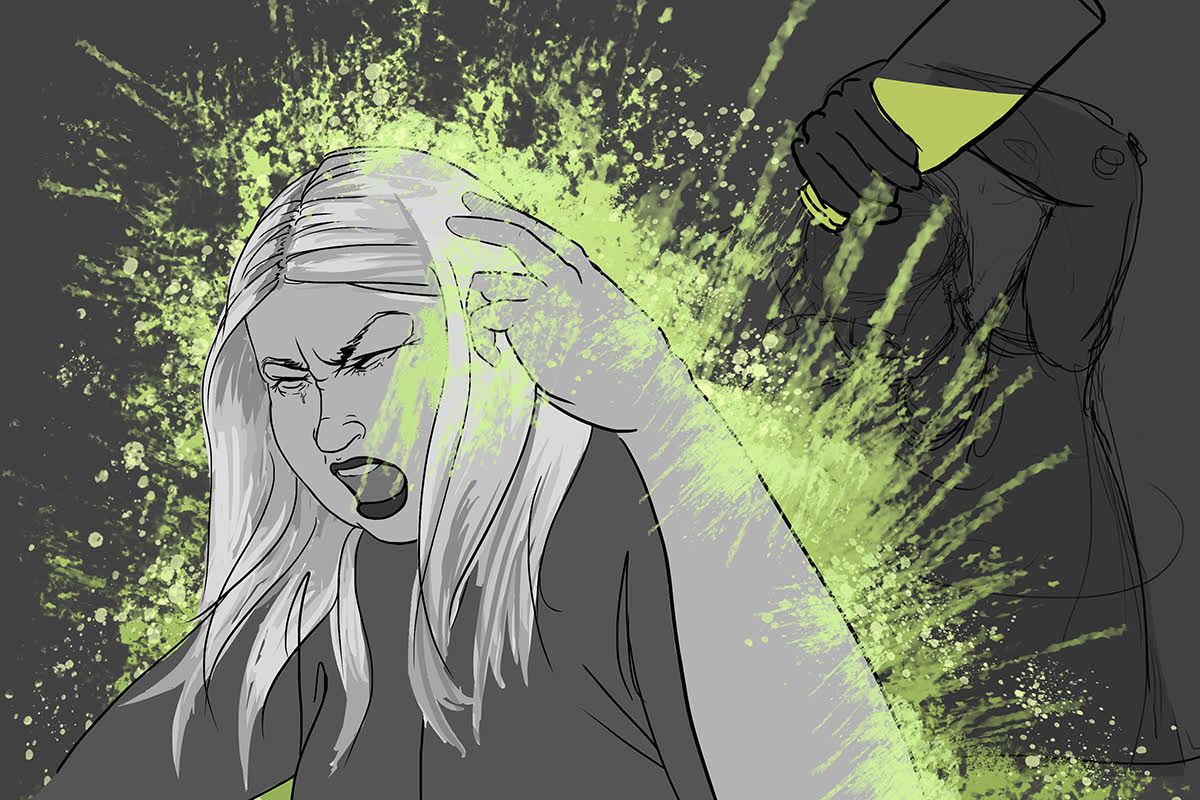
An acid attack
On a bright summer's morning in July 2018, a young anti-corruption activist left her flat in the southern Ukrainian city of Kherson and walked to her car.(1a)(1b) It is a routine followed by millions of commuters heading to their workplaces across the world. For this young woman, that particular morning would not be routine.
As she walked over, a man dressed in dark clothing, with a hat pulled low over his face, hurried up to her and poured almost the entire contents of a glass bottle containing a litre of battery acid over her head and upper body.
The young woman was rushed to hospital, where she was to undergo 14 operations over the course of the next five months, until finally succumbing to organ failure caused by the attack. Her name was Kateryna Gandziuk, a civic activist and advisor to the Mayor of Kherson Province’s eponymous capital city. She was 33.
The brutal attack on Gandziuk led to a national outcry, although it was far from the first time an activist or journalist had been attacked or killed in the country. In the investigations that followed, Gandziuk’s efforts to expose illegal logging networks in forests controlled by the State Agency of Forestry Resources (SAFR) in the province of Kherson were cited by government sources and friends as the likely reason she was murdered.(2)
Almost two years on, the man in the cap, identified as Nikita Grabchuk, is serving a six-year sentence in prison, while several others involved received diminutive sentences.(3) The senior officials who prosecutors suspect masterminded the attack are still free however, much to the anger and despair of the campaigners trying to bring them to justice.(4) One of them is a Provincial council head who Gandziuk had accused of profiting from illegal timber sales at a public gathering held outside his offices in Kherson, just days before she was attacked.(5) All of those accused in the Ukrainian media have denied involvement in the attack.
Two and a half weeks before the acid attack, Earthsight released the findings of a major two-year investigation on illegal logging in Ukraine. Although it did not cover Kherson, it showed that the kinds of problems Gandziuk was trying to expose extended far beyond her home province, in a tapestry of corruption and illegality involving many actors, framing billion-dollar EU firms, and going right to the heart of the Ukrainian government.
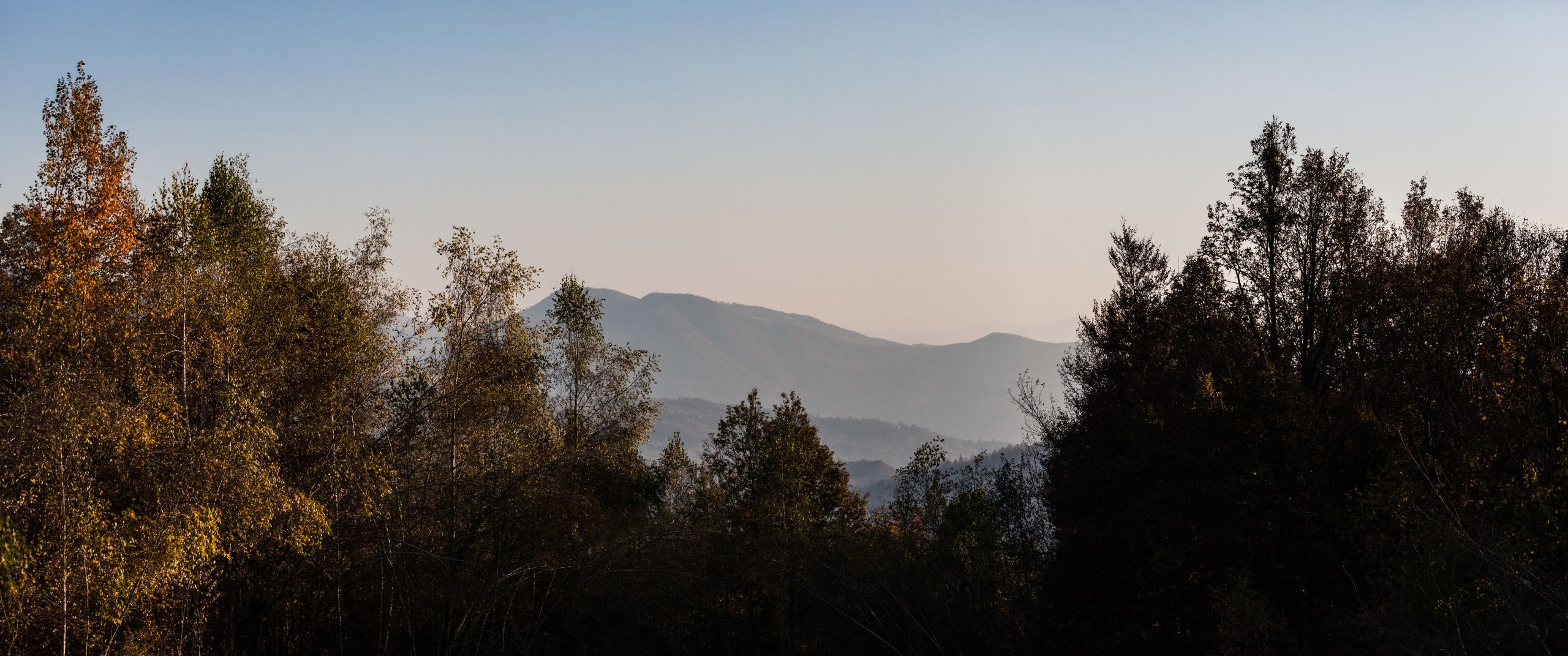
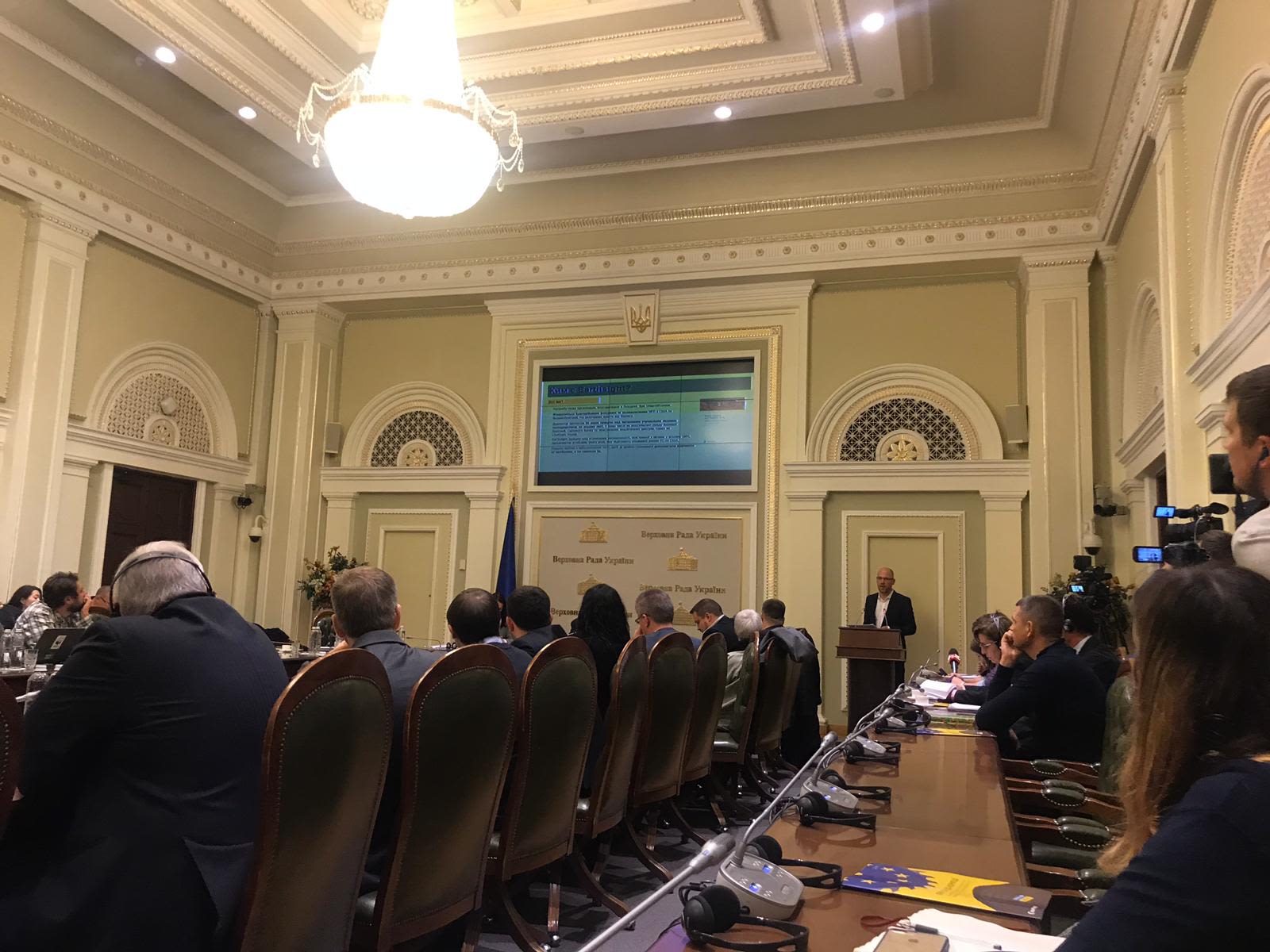
Earthsight was invited to present its findings at a roundtable meeting at the Ukrainian Parliament, but the Ukrainian forest agency's only response was a smear campaign
Earthsight was invited to present its findings at a roundtable meeting at the Ukrainian Parliament, but the Ukrainian forest agency's only response was a smear campaign

Alexander Bilous of the Ukrainian Audit Agency, whose buried report confirmed that the government had a deeprooted illegal logging problem
Alexander Bilous of the Ukrainian Audit Agency, whose buried report confirmed that the government had a deeprooted illegal logging problem

Viktor Yanukovych © Review News/Shutterstock
Viktor Yanukovych © Review News/Shutterstock
Illegality on an industrial scale
Most of Ukraine’s forests are under the control of SAFR, an entity that Earthsight’s July 2018 report findings showed to be plagued by a long history of corruption scandals and mismanagement.(6) The SAFR directly sells and profits from the sale of timber from forests it controls but is also responsible for detecting illegal logging in these forests and protecting valuable habitats within them, in a gross conflict of interest that lies at the core of a corruption epidemic.
We uncovered how for years, Viktor Sivets, a former head of the agency (and tennis buddy to the notoriously corrupt then-President Viktor Yanukovych) demanded and received bribes from foreign companies in return for access to timber. Earthsight showed that top forestry officials in Ukraine's largest timber-producing provinces were caught up in major criminal investigations, involving systematic illegal logging and timber export operations that had continued since Sivets’ reign. We showed how one of the main tricks being used by SFEs was illegal sanitary felling – cutting healthy trees under the pretext they were diseased or dying out. Overall, the report concluded, 40 per cent of timber entering the EU from Ukraine was likely illegal.
We detailed how the log yards and factories of billion-dollar EU companies – a startling number of them Austrian-owned – were the main recipients of this wood, which they used to make everything from buildings, clothing and paper, to flooring and cheap furniture. This meant, the report argued, the importing firms were likely in breach of EU laws regarding illegal timber. We showed how these imports were also flouting the Ukrainian log export ban, a law passed in 2015 that remains a sore sticking point with the EU timber industry, which would like to see it overturned so it can regain access to cheap Ukrainian raw material.
The report also showed how most of the high-risk timber coming to the EU from Ukraine was accompanied by suspect ‘green’ credentials issued by the Forest Stewardship Council (FSC), an international membership organisation that claims to guarantee that all forests it certifies have been legally and sustainably managed. Earthsight’s report cited sources who explained how easy FSC’s checks were to circumvent, and showed that systematic illegal logging, including illegal sanitary felling, corruption and bribery were rampant in State Forestry Enterprises under the control of the SAFR – problems FSC was completely failing to detect or mitigate.
Earthsight’s investigation made headlines in Ukraine and led some big European buyers to change their purchasing practices. The EU is currently preparing Ukraine-specific guidelines to inform laws regulating the import of illegal timber, that will require all EU companies to be more diligent about which Ukrainian suppliers they buy wood from. Triggered by the report, the former Ukrainian Prime Minister Volodymyr Groysman ordered a country-wide crackdown on illegal timber. This led the volumes of illegal exports to the EU to drop off a cliff.
Not long after, a top official at the Ministry of Agrarian Policy and Food under whose control SAFR used to be, in a meeting with Earthsight investigators, told us that our findings about corruption in the forest agency were only “the tip of the iceberg.”
Four months after Earthsight’s report was published, the EU publicly released the results of its own assessment of Ukrainian forestry enterprises under control of the SAFR.(7) It found that illegal logging “with papers” was a big problem in Ukraine and that the structure of the SAFR “contains an inherent conflict of interest and is extensively prone to corruption.” The EU’s report called for “the economic and enforcement functions of the forestry agency to be separated from each other to reduce corruption” – a recommendation echoed by national and international NGOs at a major roundtable on forestry reform held in Kyiv on 5 November 2018, the day after Gandziuk died.(8)
A buried report
One of the results of Groysman’s crackdown was a report written by Ukraine’s State Audit Agency in October 2018, with the collaboration of several other government bodies like the national police, state environmental inspectorate and customs service. Although not as damning as the EU’s report or Earthsight’s findings, it corroborated them to a great extent. It provided further confirmation that the government had a deep-rooted illegal logging problem. The report identified a number of cases of illegal logging and illegal timber exports in enterprises controlled by SAFR, as a result of which, it said, the country had been losing millions of dollars. Its recommendations included widespread personnel changes in the senior management of the SAFR and increased interagency cooperation and enforcement to detect and reduce illegal logging and illegal timber exports.
In late 2019, Earthsight spoke to Alexander Bilous, who leads the environmental department at the Audit Agency. He confirmed that their audit of state enterprises had found that illegal logging “takes place regularly.”
When asked for the reason he thought the SAFR suffered from such problems he stated: “Well, the answer is obvious – total corruption and desire to get excessive profit.”
He also told Earthsight that far from welcoming the report’s calls for change, the SAFR had been trying to bury it, and had even initiated legal proceedings against the audit agency in the wake of its preparation. The report has still not been widely released, as it typically would have been, to this day. Earthsight was able to see a copy through a Freedom of Information request put in by a member of the Ukrainian Parliament.
This doesn’t come as a surprise to Dmytro Karabchuk, who has also seen the report. An experienced local environmentalist, Karabchuk has battled illegal logging and led a team of volunteers tasked with detecting illegal logging in Ukraine’s forests for years. “The audit agency’s report being hidden – for me, that’s a classic sign of the power of the forestry mafia within the government,” he told Earthsight in late 2019.
And there are other sources from within government, such as Sergei Komarchuk, a senior official at Ukraine’s State Environmental Inspectorate, an entity that monitors State Forestry Enterprises (SFEs) for violations of forest laws, who also agree Ukraine’s forests are plagued with illegal logging. Speaking to Earthsight in 2019, Komarchuk placed some of the blame at the door of the SAFR and stated that illegal sanitary felling was one of the main ruses used. He said that while it was true that a small proportion of illegal logging may be carried out by locals or villagers, the bigger problem was more systemic.
“It’s impossible to log without a tractor or a truck. Everyone will hear it. ‘We saw nothing, we know nothing’ – it simply doesn’t happen. It simply doesn’t happen without an organisation.”
Even though Earthsight’s 2018 report was immediately welcomed by the EU and progressive elements within Ukraine’s government, and many of its findings later backed up by other reports, the response of the SAFR at the time was quite different.(9) Far from acknowledging it had a problem with illegal logging, top officials at the agency launched a smear campaign against Earthsight, issuing public statements denying there was any truth in the findings, and even hinting it could be in the pay of mysterious oligarchs.
Oleksandra Hubytska, from the Lviv branch of one of Ukraine’s most respected anti-corruption media organisations, Nashi Groshi, said: “We are often told that the best defence is an attack. Following the publication of the report, Earthsight faced an unprecedented scale of aggression from the SAFR. There were both public statements and threats to condemn and pouring of mud via social networks when the pages of forestries on Facebook across the country republished the same statements that the report was fake.
“I have been helping Earthsight gather information since 2017. Some of the information published in the report was collected by me personally from open sources and through requests for public information. However, even these data were questioned by forestry workers. Personally, as a journalist, I often encounter criticism after the publication of materials, but what happened in 2018 was more like persecution. As a result, no-one went to court, just the head of the agency was changed.”
Yehor Hrynyk, from Kyiv-based NGO Ukrainian Nature Conservation Group (UNCG), said: “I don’t agree with some extrapolations Earthsight made, but in general the report seems to reflect the true situation – total corruption, non-transparency and unsustainability within the forest sector in Ukraine. Therefore, one can hardly name it ‘fake’. Nothing hurts like the truth!”
Conflicting interests
A lot has happened in the two years since Earthsight’s report was published. For the first time, protection of Ukrainian forests made it into the top priorities of a presidential race, with Volodymyr Zelensky vowing to end illegal deforestation in his manifesto.(10) Ukraine has had a new administration since 2019, and the SAFR has a new head, Andriy Zablotsky, who formerly worked at an EU-funded think tank focussed on improving the business climate in Ukraine.
The SAFR’s new leader as well as the country’s former Prime Minister Oleksiy Honcharuk, vowing to stamp out forestry corruption and illegal logging, recently ordered sweeping audits of forestry enterprises in Western Ukraine, whose results are awaited. Two heads of regional SAFR forestry boards who had repeatedly been accused of corruption were removed from office earlier this year, in the Provinces of Zakarpattia and Kharkiv. The government has made an effort to increase transparency in timber sales and has made more maps of Ukraine’s forests and logging areas public.
However, while attempts are being made to reform other bodies like Ukraine’s State Environmental Inspectorate, the new government has so far remained completely silent about the reform of the SAFR called for by the EU and others. Although the SAFR has a new head, competitions to fill other senior positions at the agency in Kyiv have mysteriously dragged on for months, with some fearing this may indicate undue influence being brought to bear on these processes behind the scenes.
The online electronic timber accounting system which is being extended to cover the forests under control of other agencies like Ukraine’s military and community-owned forests may provide transparency but when the forestry agency that is the source of most of the information populating these databases is still suffering from corruption and a severe conflict of interest, it calls the benefits of such transparency, and the reliability of such information, into question. Meanwhile a new analysis this year shows illegal logging “with papers” has continued despite these initiatives.(11)
The SAFR has recently announced plans(12) to increase the country’s forest cover by 20 per cent but existing older, more climate-critical forests and protected areas in Ukraine continue to be illegally destroyed by state actors from SAFR. While new laws purportedly banning clear sanitary cuts in the upper reaches of the Carpathian mountains – where the ill-effects of any logging are especially adverse – were passed, exceptions were made for logging in forests that have seen windfall or outbreak of pests – the very excuses used by officials to illegally log forests under this pretext. The same laws have also, for the first time in history, opened up these high-altitude forests to commercial harvesting, a move decried by environmentalists.(13)
“These new laws were much stronger when first introduced to Parliament, but several amendments were made after that. There are indications that the forest industry managed to intervene and ‘neutralise’ the positive effects of these laws,” Hrynyk of UNCG told Earthsight.
New laws to criminalise illegal logging and increase penalties for it have also been passed since Earthsight’s report was published, but the term ‘illegal logging,’ remains undefined and is rarely applied to state actors. Pending high-level corruption cases in the forestry sector, such as the bribery case against Sivets and his accomplice-wife, continue to languish despite most pertinent details like the identities of the actors and the banks and the bribery amounts involved in the case being well-documented by investigators. In the wake of the report, Ukraine’s anti-corruption bureau, NABU, said that it had opened investigations into the use of UK shell companies named in Earthsight’s report in timber sales by the SAFR, and that it had also opened an investigation into Christina Yushkevich, acting head of the SAFR at the time the report was published. However, there has been no indication that any further action has been taken on these cases. Other serious corruption cases named in Earthsight’s 2018 report also continue to languish in court, despite some of the accused individuals being caught red-handed in illegal acts. Statements by the agency in 2020 indicate an organisation still in deep denial. By ignoring corruptly sanctioned logging and acknowledging only the illicit cutting which happens to get detected, it continues to claim illegal logging accounts for less than one per cent of all timber harvesting.(14) In May 2020 the new head of the agency, far from indicating a significant break from the past, repeated unsubstantiated allegations that information in Earthsight’s report was ‘fake’.(15)
FSC is still certifying problematic SFEs all across Ukraine, and EU companies continue to rely on deeply flawed FSC certificates for compliance with EU illegal timber laws. The EU for its part, after previous lobbying by timber importers, continues to demand that Ukraine overturn its log export ban so its companies can regain access to cheap Ukrainian wood, even initiating arbitration proceedings against Ukraine to force it to do so.
'People leave but schemes stay'
More widely, Ukraine remains the second-most corrupt country in Europe after Russia, and bribery at Ukrainian government institutions has even seen an uptick in recent years.(16) As with the former administration, that was elected on an anti-corruption ticket following the Maidan revolution which toppled the profiteering president Yanukovych’s regime, the new administration has a strong anti-corruption mandate.
In the forestry sector, the new administration has attempted to take several steps in the right direction with a stated focus on “transparency” and “competitiveness”.(17) These are undoubtedly important to ensure the sector, as an important part of Ukraine’s economy and a provider of thousands of jobs, is more efficiently managed. But it must also tackle systemic corruption and conflicts of interest to ensure all the proceeds from the sale of its vital natural resources are coming back to the Ukrainian people and not being pocketed by a few. It must drastically ramp up environmental protections and increase the powers of environmental enforcement officials to ensure any further harvesting in Ukraine’s forests is environmentally sound.
Hrynyk is worried that the government’s efforts are too piecemeal, trying to change the outcome of a few cases while allowing the systemic problems which caused them in the first place to remain untouched. Petro Testov, a forestry expert from NGO Environment, People, Law, thinks that the government’s failure to recognise illegal sanitary logging as an important problem is troubling.
Testov told Earthsight: “One of the main theses of Earthsight’s 2018 report was about sanitary felling. This is not ‘fake’ – I have seen with my own eyes clear "sanitary" cuts of healthy forests. Many foresters – unofficially of course – also agree that illegal sanitary cutting is a big problem in Ukraine. The problem still remains. The unjustified sanitary felling of healthy forests is still our reality.”
Both agree that the new initiatives, while encouraging to a limited extent, seem more focussed on improving the commercial/logging functions and competitiveness of the forestry sector. They say they do not give sufficient weight to environmental issues or acknowledge the wider climate or biodiversity value of the country’s forests – some of Europe’s last intact forest habitats.
Security also remains a major worry for sources from within government, the industry and civil society who have knowledge about illegal logging or corruption by forestry officials or timber companies but are worried about coming forward. The case of Kateryna Gandziuk may be a rare, worst-case scenario. But Earthsight investigators have spoken to dozens of individuals, including honest employees of the forestry agency itself (of whom there are also many), who were scared to tell us what they knew out of fear of their seniors, fear for their families, fear for their physical safety or fear of losing their livelihoods.
Asked in October 2019 whether the situation under the current administration was a big departure from the past, Alexander Bilous from the audit service told Earthsight: “If we look at it on a wider scale, nothing much has changed. For example, I’ve been regularly inspecting the State Agency of Forest Resources and the State Committee of Forest Resources since 2011 or 2012, and the violations remain the same. People leave but schemes stay. I mean, sometimes when some legislative prohibitions come into effect, the offenders just adapt to the new legal requirements and find new schemes allowing them to earn money.”
For the last year, Earthsight has once more gone on the trail in the Ukrainian Carpathians, to uncover and document some of these new schemes. This time, it led us to the door of the largest furniture company in the world.
Part II: One tree every second – feeding Ikea’s ‘fast furniture’ model

Ikea’s growing dependence on corrupt ex-Soviet Europe
Though Ikea’s success is commonly attributed to its funky Swedish design or self-assembly technology, a third factor has probably been more important. This is its ability to turn trees into furniture, more cheaply and consistently, and on a more massive scale, than any company has ever done before. It does this – to an extent few appreciate – by its pioneering exploitation of cheap labour, and plentiful, accessible forests in the former eastern bloc.
Ikea is the largest manufacturer(18), the largest buyer, and the largest retailer of wood furniture on the planet. As a result, it is also the largest consumer of wood the world has ever seen. Ikea consumed 21 million cubic metres of wood in 2019.(19) That is a line of logs which, laid end-to-end, would stretch seven times around the Earth.(20) Sixty per cent of the company’s sales are of wood products.(21) To make them, Earthsight has calculated that its supplier factories currently consume approximately one tree every second.(22) But soon they will demand even more.
In order to sustain its rapid growth, Ikea has had to keep finding new sources of timber. Combing through the company’s published reports, Earthsight was able to establish that its consumption of wood doubled in the last decade. Every year, it has to consume 1.8-2.5 million more trees than it did the year before.(23) Ikea’s impact on the world’s forests is so large that one expert, observing satellite images of massive clear-cuts in Sweden, has said that “you can see Ikea from space.”(24)
At least 60 per cent of Ikea’s total wood supply in 2018 came from Eastern Europe or Russia(25): the ex-communist world. Poland is the largest supplier from the region, followed by Russia. Twenty-one of Ikea’s own twenty-eight furniture factories are also in eastern bloc countries.(26) So are most of its third-party furniture suppliers. The company is especially dependent on forests in these countries to keep up with its growing appetite for wood. In 2014-2018, for example, consumption of Belarussian wood doubled, while the volume of Russian wood used leapt by 40 per cent.(27)
A history of scandal
Even before the iron curtain fell, Ikea was sourcing furniture from behind it, in what have since been revealed to be highly controversial circumstances. In East Germany in the 1980s, Ikea was buying furniture which it was later forced to admit its staff knew was being made by political prisoners.(28) Around the same time, Romania's brutal communist-era secret police received covert six-figure payments from Ikea as part of the Swedish group's deals with a local furniture manufacturer. Documents which emerged in 2014 suggest Ikea was complicit in the arrangement.(29)
Ikea’s toehold in the region prior to its liberation gave the company a head-start when it was opened up in the early 1990s. Scandals regarding Ikea’s operations in Eastern Europe have spread with it.
In early 2010, for example, it admitted that two of its senior executives – including the Swedish-born head of its entire Russian operations – had approved the payment of bribes in order to secure electricity supplies for its St Petersburg stores. Internal Ikea documents obtained by Swedish investigative journalists revealed that the bribes were part of a systematic plan to smear a local businessman and politician. Later that year, the scandal broadened as a number of former Ikea managers went public claiming to have been sacked after trying to fight widespread corruption within the company’s local operation.(30) In 2011, Russian authorities reportedly charged another Ikea executive with extorting a $225,000 bribe from a local businessman, after arresting his accomplice in a sting operation in a Moscow café as he accepted the cash.(31) In 2019, Ikea’s controversial former Russian lawyer and fixer was reported by local media to be on the run, accused of arranging the payment of a $600,000 bribe to officers of the FSB, Russia’s secret service.(32)
Scandals have also plagued Ikea’s efforts to move upstream into the logging industry in Eastern Europe. In 2012, environmentalists denounced the company for cutting high conservation value old-growth forest in the Karelia region in Russia. An audit the following year confirmed some of the allegations and led to the loss of the concession’s sustainability certificate; Ikea later sold it. In 2016 another scandal emerged relating to Ikea’s forestry operations in Romania.(33) In 2015, it had purchased 33,000ha, making it the largest private forest owner in the country. But it soon emerged that much of this forest had been bought up illegally by fraudsters before Ikea took control of it. The company remains embroiled in legal challenges as a result.(34) Journalists investigating the case also revealed how the sale of the land to Ikea involved complex, offshore arrangements, suggestive of tax avoidance, something for which the company is already notorious (see breakout box: Ikea’s billion euro tax avoidance).

Ikea's wood sales have been rising steadily for years. Source: Data collated by Earthsight from archived IKEA annual and sustainability reports. Note that the large jumps in 2010 and 2019 are due in part to changes in measurement methodologies
Ikea's wood sales have been rising steadily for years. Source: Data collated by Earthsight from archived IKEA annual and sustainability reports. Note that the large jumps in 2010 and 2019 are due in part to changes in measurement methodologies
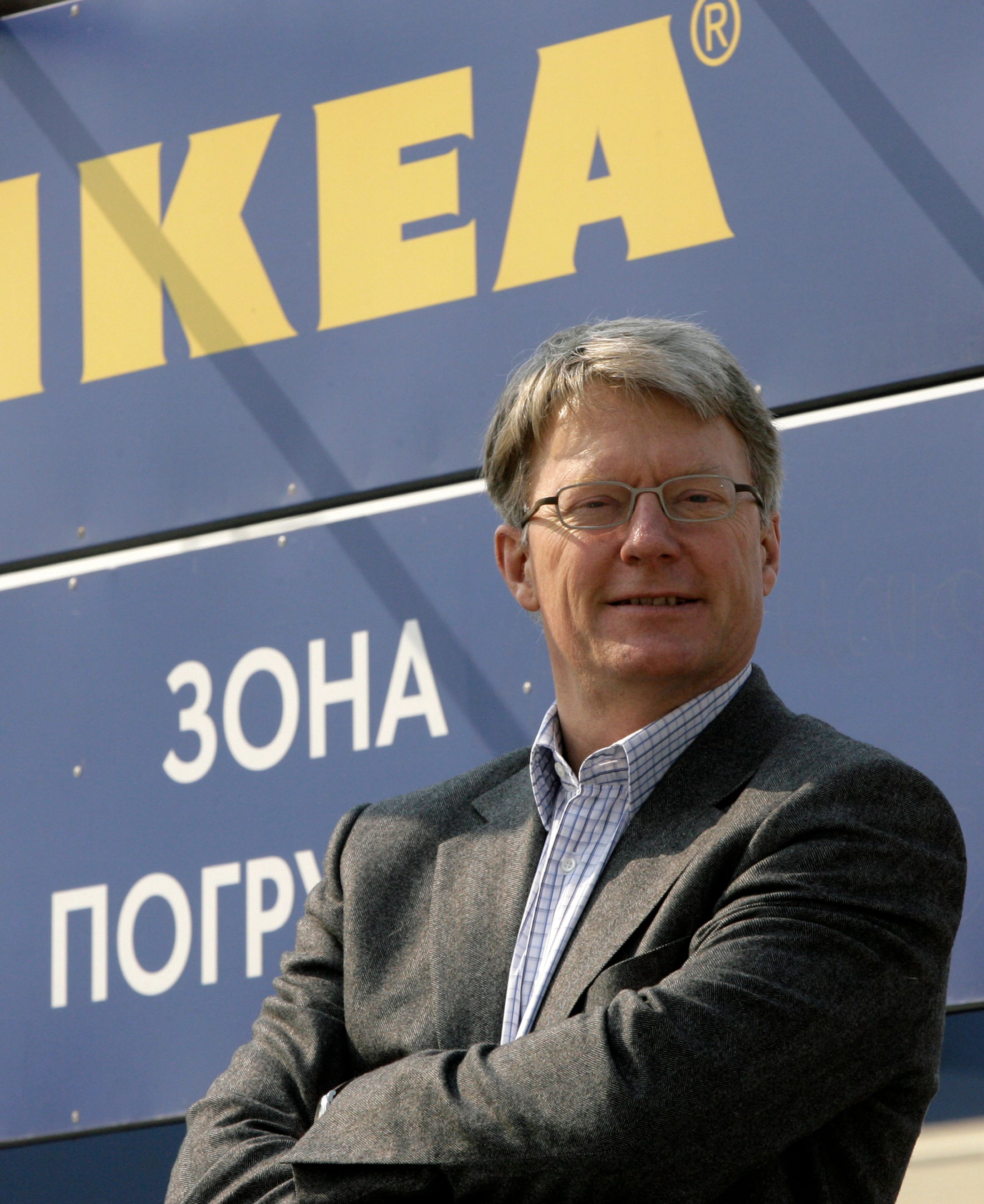
Per Kaufmann, boss of Ikea Russia, who was sacked in 2010 for bribery © Shutterstock
Per Kaufmann, boss of Ikea Russia, who was sacked in 2010 for bribery © Shutterstock
Ikea’s billion-euro tax avoidance
It would come as a surprise to most of its customers that Ikea is not in fact Swedish. Since the early 1980s its parent company has been registered in the Netherlands. Exploiting lax Dutch laws on non-profits, Ikea is technically the world’s largest charity. But it is also one of its least generous.(35) In fact, as numerous reports have alleged, its charitable status is really about enabling it to avoid tax and keep secrets. A European Parliament report in 2016 concluded that “by meticulously setting up a corporate web of organisations, utilising complicated structures, sister companies, monetary transfers and secret beneficiaries, Ikea managed to avoid an estimated sum of €1 billion over the course of six years”.(36) This triggered the EU to launch an in-depth investigation into Ikea’s tax affairs. The results are expected to bring global headlines, with the amounts involved far exceeding those relating to other tax-avoiding pariahs like Starbucks.(37)

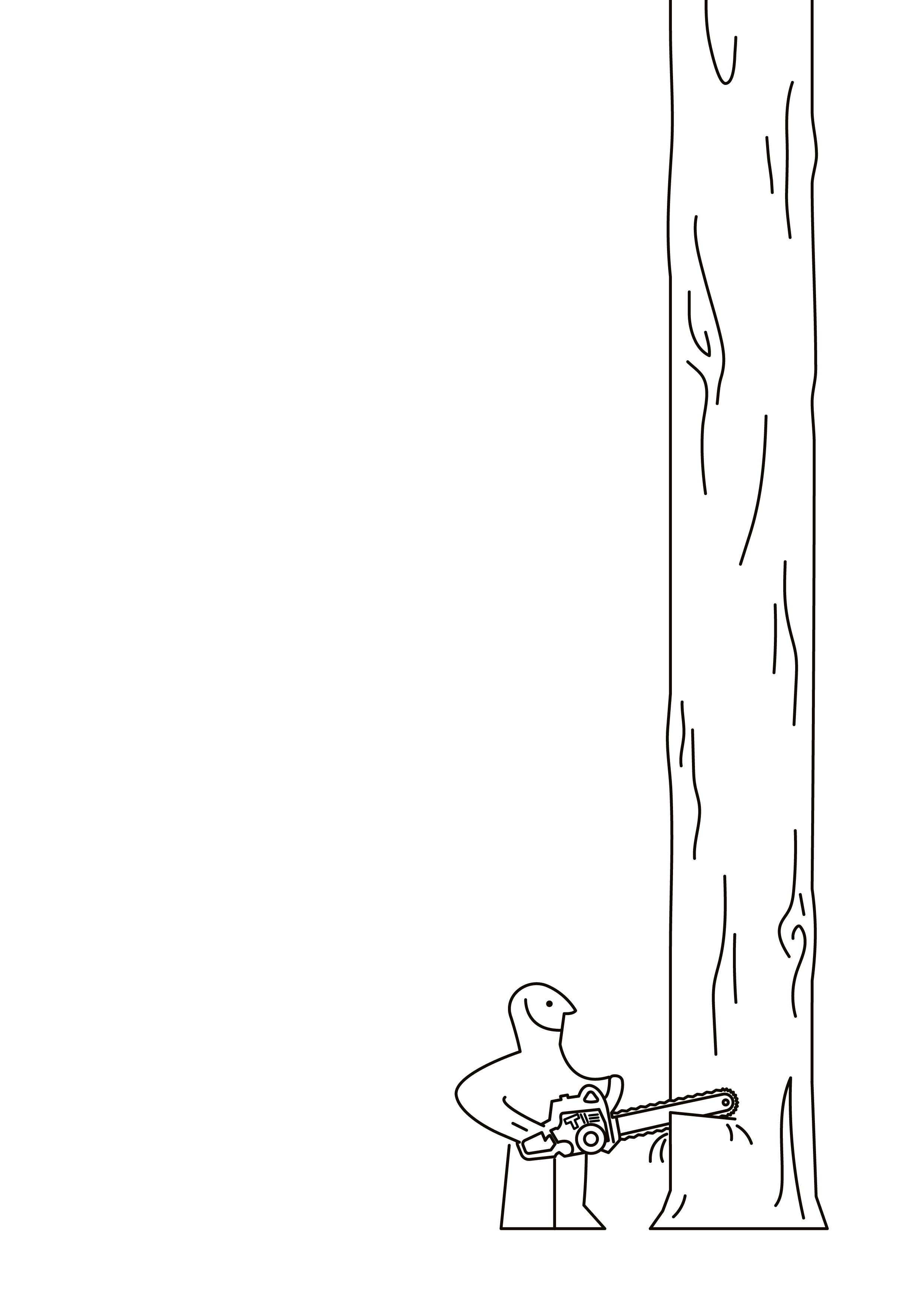
In 2016, Ikea was also tied to illegal logging in Romania. The company admitted to a French TV documentary that it had sourced timber from Schweighofer, a billion-dollar Austrian-owned firm which dominates Romania’s timber industry.(38) Schweighofer, in turn, had been accused in 2015 of being “the single biggest driver of illegal logging in the country”, after its managers were caught on camera offering an undercover investigator bonuses for supplying illegal wood, triggering a government investigation which found that it had received thousands of tonnes of illegal timber.(39)
Ikea’s little-known Ukrainian consumption
For those with a sharp eye, walking round an Ikea store warehouse, it becomes quickly apparent how important Eastern Europe is. By far the most common country of manufacture shown in the small print on product labels is Poland. Lithuania also crops up a lot. A fair few items name Romania. But just one names Ukraine.(40) This serves to hide the truth, which is that Ukrainian wood is flowing in large volumes through Ikea’s hands.
Though dwarfed by its purchases in Poland and Russia, Ikea has also quietly become a big buyer of timber in Ukraine, most of it sourced from the precious forests of the Carpathians, home to some of Europe’s last remaining populations of species such as brown bear and lynx. The company is especially dependent on the country to supplement its supplies of beech – a slow growing species sourced only from natural forest, unlike pine which commonly comes from plantations.
Earthsight’s research reveals that many of Ikea’s most popular and best-known products have been made from Ukrainian wood. Even the iconic 'Poang' armchair has at one time been of Ukrainian origin.(41) The wood used in these products must ultimately be coming from State Forestry Enterprises in the Ukrainian Carpathians or in the forests of the Polissia region in the north of the country.
The only public information on Ikea’s Ukrainian sourcing comes from a map published in 2014, indicating the company consumed the equivalent of at least 100,000 cubic metres of logs that year.(42) In response to Earthsight inquiries in early 2020, Ikea admitted to using about 200,000 cubic metres in 2018 and the same in 2019.(43) That is roughly 4,000 large truckloads of logs per year. Only a small proportion of this wood is imported directly by Ikea. Shipment records obtained by Earthsight reveal that Ikea imports around 1,000 tonnes of timber from Ukraine each year – mostly birch, oak and beech veneer – to its own furniture factories in Slovakia and Hungary. The firm also imports significant quantities of slatted bed bases and Friheten and Klippan sofas directly from two firms in Rivne in Ukraine – around 8,500 tonnes a year. It appears these are sold only in Poland or Eastern Europe.(44)
The vast majority of Ukrainian wood used in Ikea products, however – almost 90 per cent – is imported and processed by third parties inside the EU.(45) That has the added benefit of removing any onus on Ikea under the EU Timber Regulation to ensure the wood is at negligible risk of being of illegal origin. It also makes it particularly hard for outsiders to independently trace.
But through painstaking research, Earthsight was able to track down a couple of its biggest sources. What we found paints a worrying picture.
Part III: The Illegal Ukrainian Wood in Ikea's Products
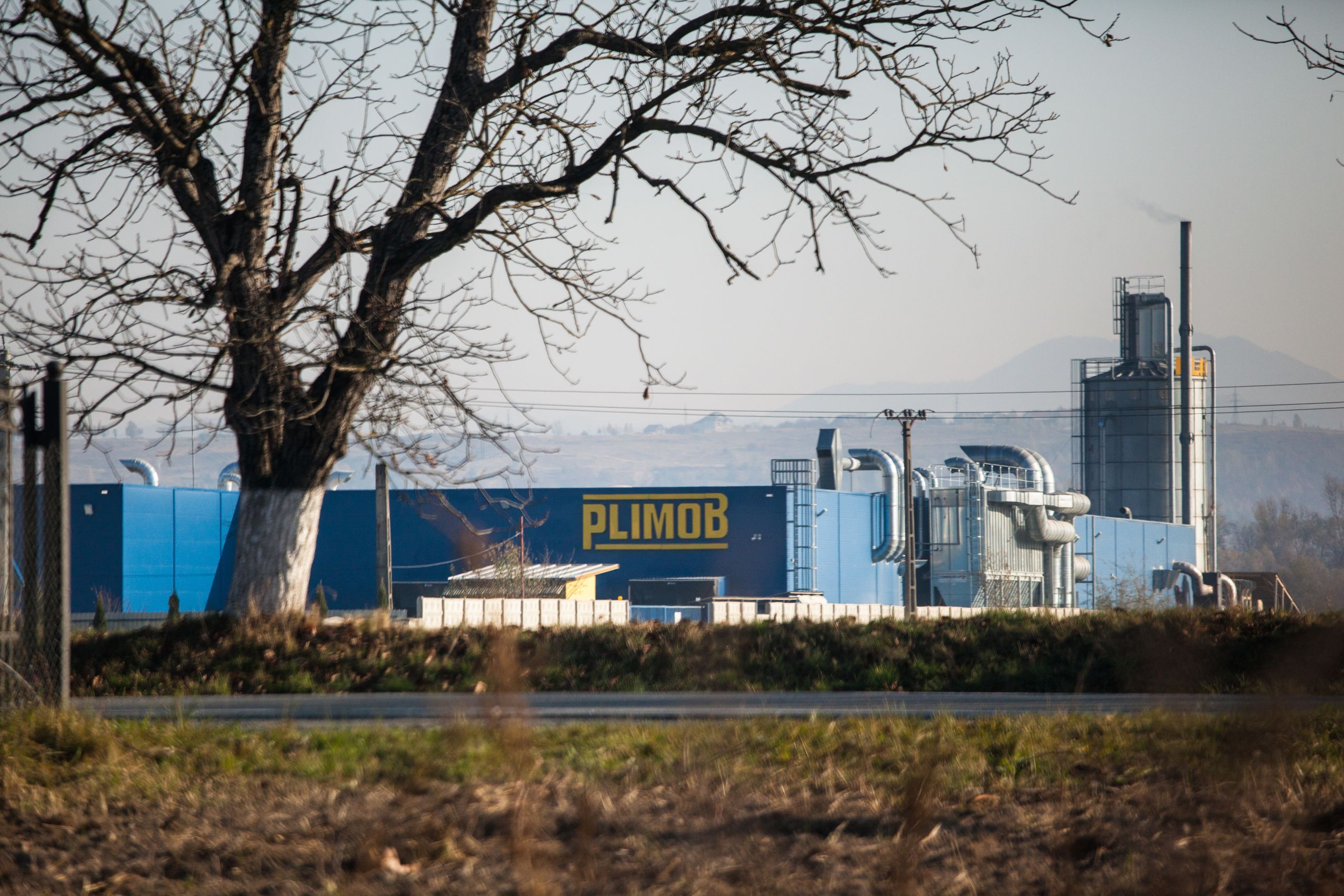
A. The rotten beech in Ikea’s folding chairs
Most of Ikea’s wooden furniture is constructed from woodchip boards coated with paint or veneer. But one of its most iconic and bestselling products is made from solid, orange-hued beech. The instantly recognisable ‘Terje’ slatted, folding chair is an Ikea mainstay, providing space-saving seating in houses and apartments around the world. The company sells more than 1.5 million Terje chairs each year – around three every second.(46) At a recent visit to an Ikea branch in the UK, Earthsight found them specially displayed close to the checkouts, for impulse purchase. Terje chairs are cheap – retailing for just £13 in the UK, €13 in Germany and $25 in the US – and Ikea goes to great efforts to keep them that way. Many other well-known Ikea dining chairs like the Borje, Ingolf and Henriksdal are also made from Ukrainian beech, though they are substantially more expensive.
Over the past year, Earthsight has painstakingly traced these chairs from Ikea shelves back to the forests where they originate. Our journey led us all the way back to the Carpathians in Ukraine, where we found some of Europe’s last intact forests being illegally and systematically stripped to make them.
The Romanian component
Plimob’s smart new factory in the picturesque county of Maramures in Romania’s far north, is branded in the Ikea colours of bright blue and yellow. The company, one of the ten largest furniture exporters in Romania, sells 98 per cent of its goods to the Swedish firm.(47) Plimob claims to be Romania’s oldest furniture manufacturer(48), and has been supplying Ikea for over 30 years.(49) Legend has it that Ikea’s billionaire founder, Ingvar Kamprad, was personally involved in establishing the long-running relationship.(50)
This cosy relationship with the Swedish furniture firm isn’t unusual in the industry in Romania. Many of Plimob’s competitors also sell over 90 per cent of their goods to Ikea. Gilmet, which produces baby cots, is dependent on Ikea for 95 per cent of its business.(51) Ecolor, which produces chipboard furniture, sells to no-one else.(52) Another of the top ten, Sortilemn, is even owned by an ex-head of Ikea’s purchasing operations in the region.(53)
Plimob produces nearly two million chairs a year, including all of the 1.5 million Terje chairs Ikea sells annually.(54) Ikea have repeatedly used this supply chain as a poster child for their efforts to protect forests. In 2017, and again in 2018, Ikea invited teams of journalists from around the world to visit the factory.(55) The journalists were also taken on a tour of a local forest to view the sustainable harvesting of beech to supply the chairs. Though most of the resultant coverage toed the positive line intended by Ikea’s public relations people, one of the journalists did find a crack in the narrative being sold.
When asked, Plimob’s boss admitted that not all the wood he uses comes from local forests of the kind the team toured. He said that increased prices for Romanian beech, combined with Ikea’s stubborn refusal to increase its prices, had eaten into Plimob’s margins and forced the company to look elsewhere for cheaper sources of raw materials. But the only other country he mentioned sourcing beech from was Switzerland.(56) It appears he chose to avoid mentioning a much more important supplier country, though it could be seen from his factory window. As Earthsight discovered, it turns out there may have been good reason for his reticence.
The Ukrainian component
A short walk across some open fields from the Plimob factory gates is the Tisza river, which marks the border with Ukraine. Beyond the river, and clearly visible from that factory window, are the lushly forested mountains of the Carpathians.
The Carpathians are home to the largest European populations of brown bears, wolves, chamois and lynx, as well as a third of all European plant species.(57) They stretch in an arc across four countries, with their lynchpin in South Western Ukraine. The highest and most densely forested part of the Ukrainian Carpathians are the Hutsul Alps of Rakhiv district, across the border from Maramures. This region, named for the Hutsuls, a local indigenous group, contains the highest concentrations of rare, threatened and endangered species in the entire Ukrainian Carpathians.(58)
Located in this region is a small Ukrainian town of about 9,000 inhabitants, called Velyky Bychkiv. Controlled variously by the former Czechoslovakia, Hungary, and the Soviet Empire for short periods in the 20th century, the town and its surrounds were once also the site of a violent and unexpected resistance by the Carpathian Sich just before World War II, as the soldiers from the short-lived state of Carpatho-Ukaine were called. These days, Velyky Bychkiv is a sleepy place nestled in the foot of one of Rakhiv’s many steep valleys, frequently muddied by the floods visited upon it by the river.
We headed out of town in our dusty car, following the Tisza upstream into the mountains, and were soon driving through the territory of the lishosp, or state forestry enterprise, that is responsible for managing the forests in and around Velyky Bychkiv. Named for the closest town or village, as most Ukrainian forestry enterprises are, Velyky Bychkiv SFE is made up of more than 50,000ha of dramatic mountains and forest, and is home to several protected areas, rare animals and plants.
Timber harvesting and processing is the mainstay of the local economy in Velyky Bychkiv. By far the largest employer is a furniture company, VGSM. The company’s processing site, covering an area larger than 13 football fields, dominates the town. In the midst of the factory buildings, there is a huge yard filled with beech logs awaiting processing. Trucks loaded with more logs come rumbling down the access road in a cloud of dust every few hours.
Interviewed by local journalists, VGSM’s director explained that it was set up in 1992, specifically to supply Ikea.(59) Until 2008, it was owned by Ikea subsidiary Swedwood, but in 2008 Ikea closed the company, because of local corruption. The firm was then purchased by an Ikea employee of many years’ standing from Romania, who re-opened it in 2010 to produce beech chairs for the Swedish giant.(60) It is one of the largest timber processors in the country, processing 40,000 cubic metres a year, from which it churns out nearly half a million beech chairs.(61) Nearly all of its production is for export to the EU(62), and 96 per cent is ultimately destined for Ikea.(63)
VGSM purchases beech from State Forestry Enterprises across the Carpathians. Around 90 per cent of its supplies come from the local Velyky Bychkiv SFE.(64) Much of this is harvested by VGSM itself, which acts as a logging contractor for the SFE.(65) Data obtained by Earthsight show that nearly three-quarters (73 per cent) of all the commercial beech harvested in Velyky Bychkiv is sold to VGSM,(66) making it far and away the largest customer for the Enterprise, and placing it in a powerful position to influence its activities.
Shipment records obtained by Earthsight reveal that VGSM produces finished Borje beech chairs and Gerton beech tabletops for direct export to Ikea, and also sells raw beech, oak and ash to Ikea’s own furniture factory in Slovakia. However, we found that the bulk of its exports are semi-finished Ikea furniture parts or beech lumber which are shipped the short distance across the Tisza river to Romania, for completion by Plimob. This includes parts for various Ikea beech chairs, including Ingolf, Ekedalen, Henriksdal and Norrnas dining chairs, but also the iconic Terje.(67) Analysis by Earthsight indicates that of the two million chairs Plimob sends to Ikea each year, as many as half could be made from Ukrainian wood, including many of the iconic Terje chairs. VGSM ships enough wood parts to Plimob to make around 600,000 Ikea chairs a year, plus enough raw beech to make up to 400,000 additional Terjes.(68) Taken together, that’s enough seats to pack Wembley Stadium in London to the rafters more than ten times over.
Assembling the illegalities
Caught in the Act
The sun was starting to set as we walked over the final ridge and onto a small dirt track that led off the main logging road. We were surrounded by tall beech trees and could hear bird song in the canopy overhead. We launched the drone to help place our location, and pointed it north-east, towards our site of interest, following its flightpath on our screen. At first all we could see were large stretches of dense forest, burnished red and gold by autumn. Suddenly, as the drone flew closer to our location of interest, we saw it – a large angry gash on the hillside where a chunk of forest should have been. A couple of seconds later, we picked out another empty patch, mere metres from the first.
The sites we were looking at were among more than 100 patches of forest that Ukraine’s state environmental watchdogs had detected having been illegal logged during just one short period in 2018.(69)
In order to balance the desire to protect forests with the need to provide steady supplies of timber, most countries strictly regulate logging, allowing trees to be cut only in limited numbers and in certain areas. This helps ensure that the number of trees removed is balanced by fresh growth, the overall forest is retained, and the most environmentally damaging logging (such as on steep slopes or close to rivers) is avoided.
In Ukraine, a widely abused loophole in legislation allows forestry enterprises to cut far more trees, and to cut younger trees, than would normally be allowed when following these principles. Under special circumstances, such as when forests have been affected by pests, natural disasters or are dying out from the effects of climate change, forestry officials can issue permits to conduct so-called “sanitary felling” of trees, allowing them to cut the affected trees to maintain the health of the rest of the forest.
The sanitary logging pretext has long been used to illegally fell trees in Ukraine. It has reportedly been the principal means of illegal logging since the late 1990s,(70) and studies have shown the use of selective sanitary cutting unrelated to natural disasters had increased six to seven times in the 15-20 years to 2011.(71) A few years later in 2017, Earthsight-commissioned field studies showed how this loophole was being routinely abused by officials, and that as much as 40 per cent of all timber in Ukraine could be being illegally felled, using the sanitary felling pretext.(72) We also showed how by 2017, SFEs were harvesting more than double the amount of timber via sanitary felling than they were logging under their management plans. As sanitary felling is exempt from many of the controls normally placed on logging, it becomes the perfect way to circumvent environmental regulations, including cutting more trees than would otherwise be permitted.
In response to widespread abuse of this logging category, including in several national parks, the Ukrainian government enacted a new law to regulate where it could be carried out more strictly. This should have led to an overall decline in the amount of timber being produced from Ukrainian forests, but most forestry enterprises either ignored these laws completely or started inventing other pretexts to keep timber production levels high.
Velyky Bychkiv is a case in point. In 2014, Ukraine enacted a Wildlife Law banning sanitary felling in Ukrainian forests from April to 15 June each year(73), months identified as being especially important breeding periods for the unique animals and birds in the region (see breakout box: Why the ban on logging during the silence period matters). But during a routine visit to Velyky Bychkiv SFE in 2018, Ukraine’s State Environmental Inspectorate (SEI) found that the SFE had been unabashedly issuing felling tickets for sanitary felling during this ‘silence period’, allowing great swathes of forest to be illegally cut. The inspectors identified 109 different sites where illegal sanitary felling had been scheduled during the silence period.
More than half the 109 sites were earmarked for destructive clear cuts – which refers to the practice of stripping large areas of forests at once. This included clear cuts in beech forests, where the practice is forbidden during standard logging because of its damaging impact. Sixty per cent of the timber cut on these 109 sites was from beech trees – the same stuff the Terje chair is made from.
Documents obtained by Earthsight show that there is little doubt that much of this illegally harvested beech made its way to VGSM and into Ikea products. Ninety per cent of VGSM’s beech comes from Velyky Bychkiv, and almost all its production goes to Ikea. We found that almost a quarter of the commercial beech harvested on the 109 sites was even directly logged by VGSM as the logging contractor for its own use.(74) Earthsight analysis of auction data from the SFE indicates that more than half the beech being sold during the silence period was coming from these 109 illegal sites.(75) Given that VGSM purchased nearly three-quarters of all the commercial beech cut within Velyky Bychkiv in 2018(76), it is likely that much of the beech cut by other logging contractors on the illegal sites was also sold to them.
Earthsight’s research has found that over the course of that 2018 silence period, VGSM shipped enough beech chair parts for Ikea’s Henriksdal, Norrnas and Ingolf ranges to make approximately a quarter of a million chairs.(77) Barely a week after the silence period ended, on 20 and 22 June 2018, two shipments totalling 38 tonnes of Ikea Terje beech chair parts – enough for over 12,000 chairs – left the VGSM factory bound for Plimob, to be finished there and distributed to Ikea stores across the globe.
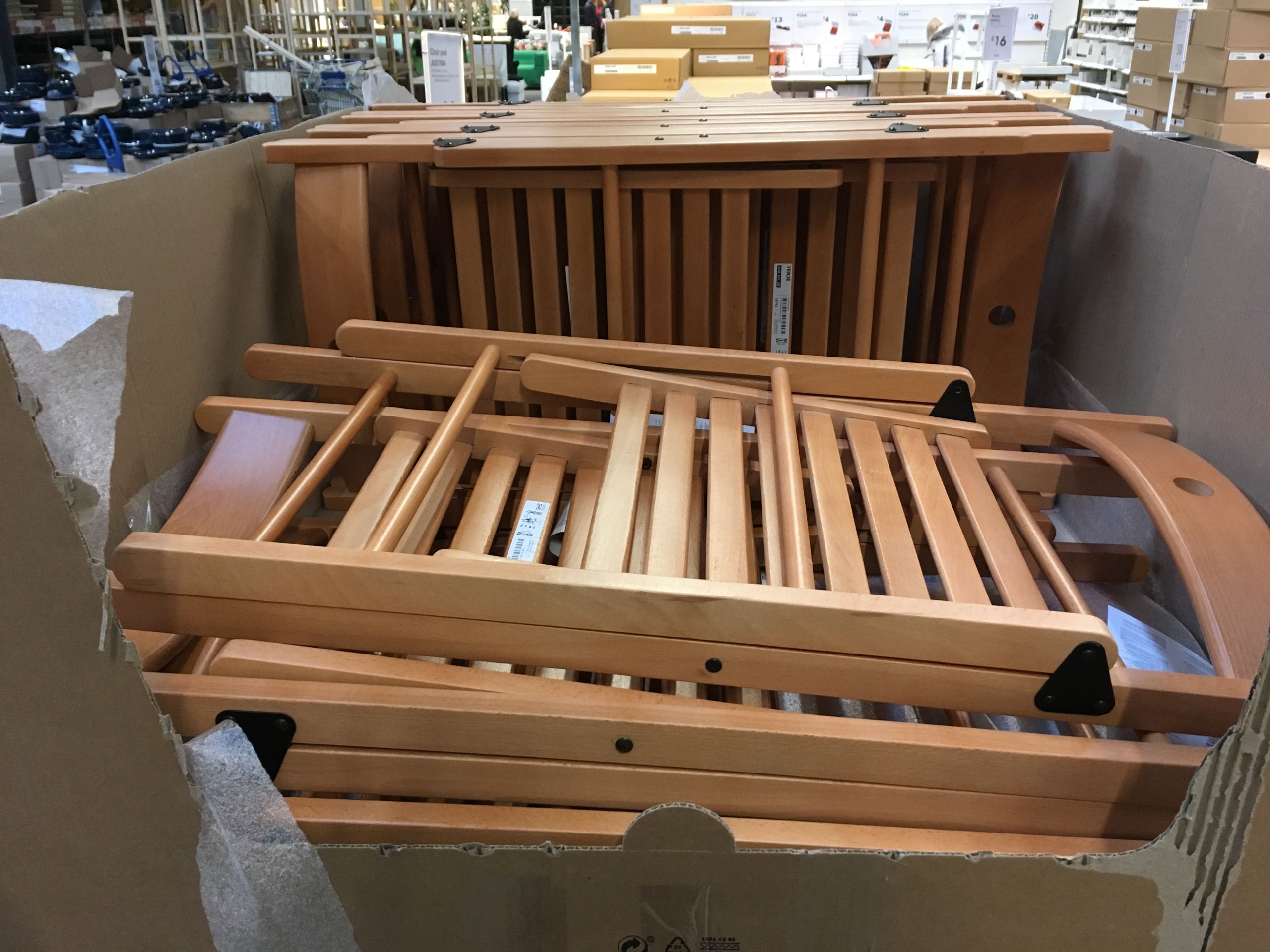
Terje beech chairs displayed for impulse purchase in a UK Ikea store, 2020
Terje beech chairs displayed for impulse purchase in a UK Ikea store, 2020
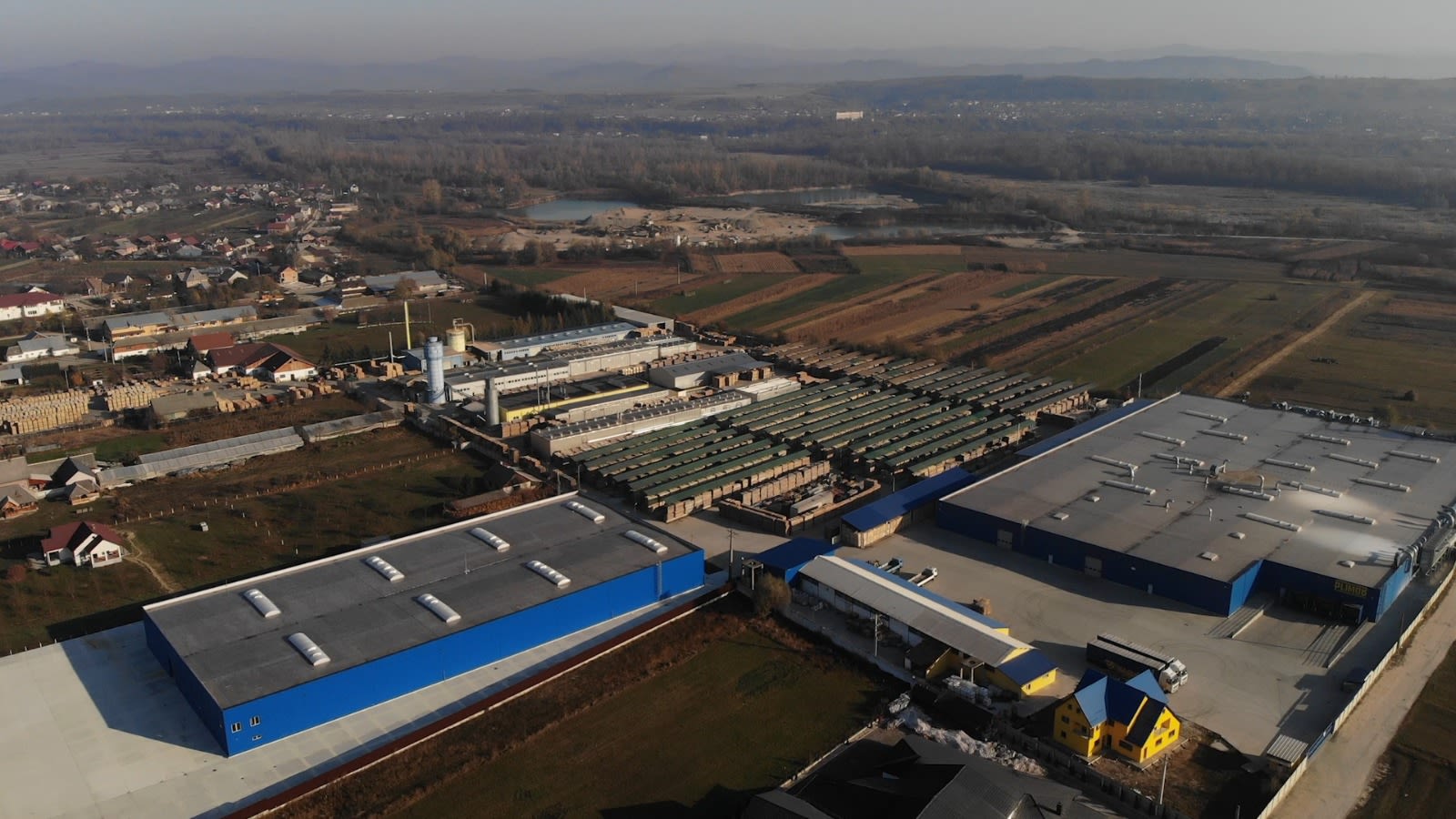
Plimob Aerial view © Earthsight
Plimob Aerial view © Earthsight

Beech logs awaiting processing at VGSM’s mill in Velyky Bychkiv in the Ukrainian Carpathians, October 2019 © Earthsight
Beech logs awaiting processing at VGSM’s mill in Velyky Bychkiv in the Ukrainian Carpathians, October 2019 © Earthsight
Why the ban on logging during the silence period matters
Fighting global biodiversity loss is now recognised as being as urgent to our survival as dealing with the climate crisis.(78) In Europe, the Carpathian forests are the site of a particularly intense battle being fought against declining biodiversity. These vast green swathes of temperate forest are one of the most important strongholds for large European carnivores such as bear, lynx and wolf. Unfortunately, unsustainable forestry practices and rampant illegal logging have been a major threat to biodiversity in the Ukrainian Carpathians for some time. In an attempt to address this, in 2014 Ukrainian lawmakers passed a law banning sanitary logging from 1 April to 15 June each year.(79) These weeks were settled on by biodiversity experts as being especially important breeding periods for animals and birds of various kinds. The most important species of tree present in Velyky Bychkiv SFE’s forests – and also the species valued by Ikea to make its chairs due to its strength and appearance – is beech. The beech tree plays the role of godfather to other living things around it. They are recognised as an “umbrella species”, which means that a healthy beech forest habitat sustains a wide variety of other flora and fauna in and under its canopy.(80) By protecting an “umbrella species” all the other species around it are protected too. Logging in beech forests therefore needs to be conducted with special care, at any time of year. Logging beech and other species in Velyky Bychkiv SFE during the silence season is doubly harmful as it poses an immediate threat to numerous rare animals and bird species during their breeding periods. Woodpeckers – tree cavity-nesting birds, whose numbers are declining in Europe – are one example. Woodpeckers lay and incubate eggs and raise their young inside trees during the silence season. The white-backed woodpecker (Dendrocopos leucotos), the European green woodpecker (Picus viridis) and the three-toed woodpecker (Picoides tridactylus) call the forests controlled by Velyky Bychkiv SFE home.(81) All of these species are listed in the ‘Red List of Ukraine’(82) – a national list of threatened species – while two are also listed as requiring special protection by the Bern Convention, a Europe-wide binding nature protection agreement to which the Ukrainian government is a contracting party.(83) The Eurasian lynx (Lynx lynx), which has also been identified in Velykyi Bychkiv SFE’s forests is another example. All over Europe, including in Ukraine, the lynx population, already small, is in decline, so it has been listed as requiring increased protection by both the Red List of Ukraine(84) and the Bern Convention(85). In May, these magnificent big cats enter one of the most vulnerable stages of their life cycle, giving birth to kittens. The constant stress caused by the presence of people, loud logging machinery and dogs in the forests during this sensitive time greatly disrupts lynx families and could even lead to their deaths.(86) Although the 2014 law prohibits sanitary logging for several weeks over April, May and June, it makes no mention of other types of logging, a bizarre oversight that local environmentalists want urgently remedied. To quote Yehor Hrynyk, from UNCG, “If I would be a bird in the forest, I would not distinguish between sanitary logging and commercial logging. But our legislation bans only sanitary logging.”
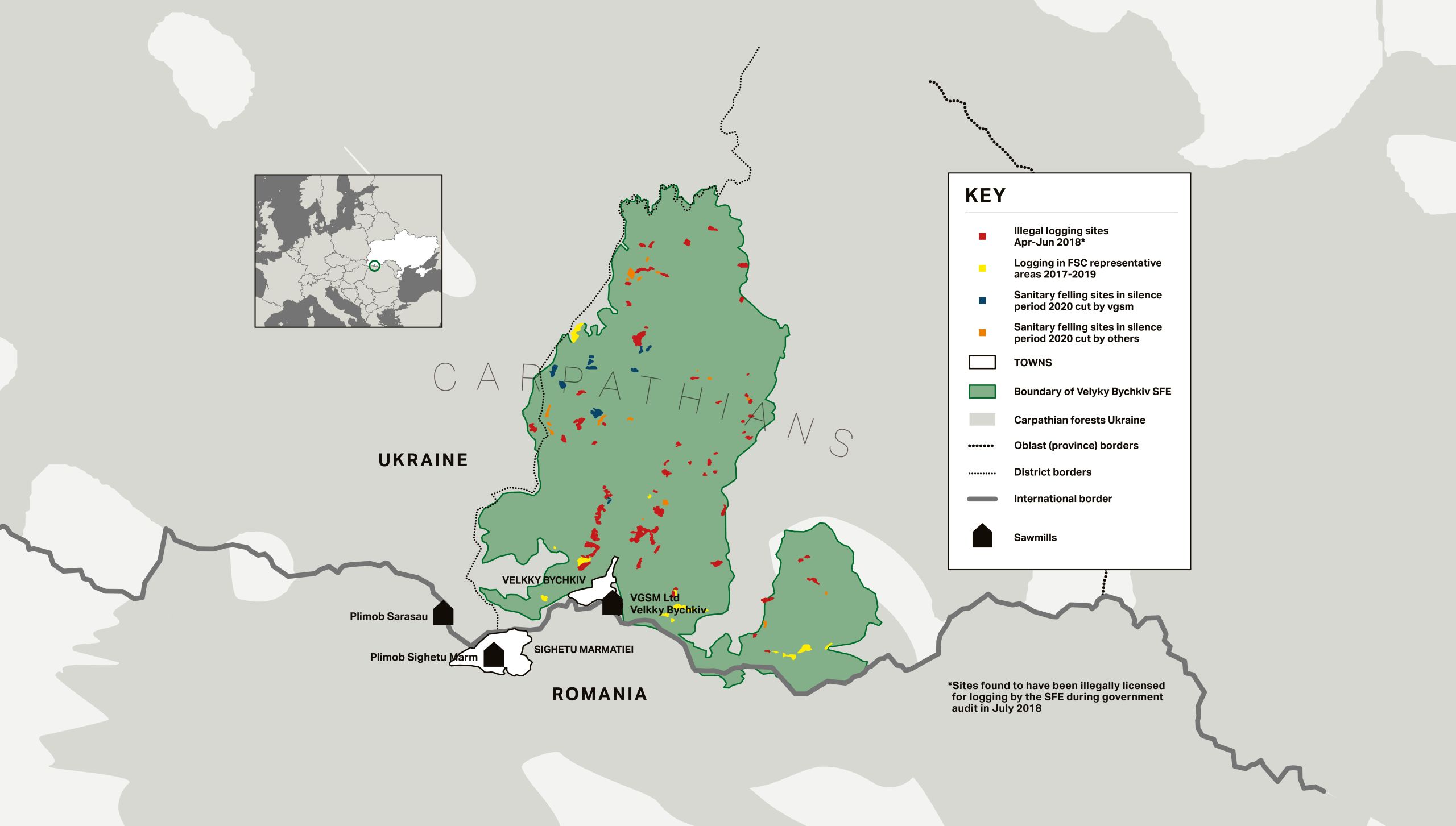
The SEI discovered this illegal harvesting without needing to visit the forests concerned. The SFE’s own documents confirmed what it had done. Harvesting data from the SFE obtained by Earthsight through a Freedom of Information request specifically states that between 14,450 and 17,675 cubic metres of trees were logged under sanitary felling permits during the silence period in 2018. As a result, at least 57 per cent of the saleable wood harvested in the SFE during that time was illegal. More wood was harvested in sanitary sites in May – during the closed period when it was illegal – than during any other month of the year. This means that far from shutting down such logging at that time of year, the SFE actually ramped it up.
Shockingly, that same data reveals illegal harvesting in the silence period also recurred in 2019. Almost exactly as much illegal timber was cut through sanitary felling in April and May that year as the year before. Between 15 and 17 per cent of the saleable wood harvested in the SFE during the whole of 2019 was from illegal sanitary felling in that year’s silence period.
Even a global pandemic and a Covid lockdown have not deterred VGSM from doing whatever it must to keep Ikea supplied. Data seen by Earthsight reveal that logging was underway in no less than 33 different sanitary felling sites in Velyky Bychkiv during April and early May of 2020, in contravention of the silence period. Eleven of these sites were being cut by VGSM.(87a)(87b) Analysis by Earthsight of recent satellite images confirms the illegal felling.
29 March 2020
28 April 2020
Tip of the iceberg
Earthsight’s own research and that of other NGOs suggests that what the SEI found in Velyky Bychkiv is just the tip of the iceberg. Petro Testov told Earthsight: “The Ecological Inspection in Ukraine rarely identifies serious violations in lishosps. The fact that it identified these violations means that the scale is big and there could be many more of them.” The more we dug, the more we found Testov was right.
We began by analysing the 10 sites found to have been illegally logged by VGSM in the 2018 silence period. Comparing satellite imagery with official maps and felling tickets, Earthsight found discrepancies indicative of other offences. The analysis suggests that the company cleared more forest than their felling tickets allowed, and logged areas outside permissible harvesting boundaries. In addition, satellite images revealed that one of the selective sanitary felling sites was an area of empty land that had already been cleared of forest long before, so it remains a mystery as to how VGSM recorded harvesting substantial volumes of beech there. One possibility is that the loggers cut beech illegally nearby and laundered it as having come from the site.
Then in the summer of 2019, a team of experts from local forest NGOs travelled to Velyky Bychkiv to investigate the legality of felling and shared a copy their findings with Earthsight.
The team studied a random sample of planned, active or recent logging sites within the Luzhanske forestry compartment of Velyky Bychkiv forestry enterprise, an area of beech forest close to VGSM. They found evidence of illegalities in six of the ten sites they visited. This included unjustified sanitary clearcutting and clearcutting outside boundaries of licensed areas. The team also detected skidding over riverbeds and obstructing them with logging residuals – highly environmentally damaging practices that have grave knock on effects for local watercourses and ecosystems.
One site studied was a beech clear-cut where a visit just prior to harvest by the experts had confirmed that 75 per cent of the trees were healthy and in no need of harvesting. Ukrainian rules on sanitary felling demand that 90 per cent of trees on a site must be unhealthy to justify sanitary clear cuts. The team also discovered clear-cut sites that did not have Environmental Impact Assessments (EIA), something which is required for all felling sites over one hectare by a law passed in 2017. One of the clear-cut sites lacking an EIA detected by the team was logged by VGSM.
Subsequent analysis by Ukrainian NGO UNCG for Earthsight shows that during 2018 Velyky Bychkiv SFE had logged on at least seven different sites of larger than one hectare without conducting an EIA.(88) When found out, the SFE claimed they had had to conduct emergency sanitary felling on these sites because of a big windthrow that had struck Velyky Bychkiv in 2017, even though windthrow is not prescribed as one of the exceptions for the EIA requirement in Ukrainian law. In total, 3,464 cubic metres of timber had been illegally produced from these sites without proper EIAs.
Hrynyk explained why it was so important for forestry enterprises to complete an EIA: “It is a vital opportunity for scientists, for conservationists to share their data and to point to instances where logging in some particular areas would be extremely dangerous for ecosystems, or for particular species. Without this rare species or rare habitats would be damaged or completely destroyed.”
A pattern of illegality
Though what we found happening in Velyky Bychkiv is shocking, an examination of some of VGSM’s other state-owned suppliers from elsewhere in the Ukrainian Carpathians suggests the situation is similar and may even be worse. Our research reveals that VGSM has purchased timber from at least sixteen other SFEs in Ivano-Frankivsk and Zakarpattia during the last four years. Earthsight is aware of evidence of illegalities in fourteen of them.
The UNCG research revealed violations of EIA laws at four of VGSM’s other suppliers; in 2018-19, the Khust, Perechyn, Bolekhiv and Kolomiya enterprises violated EIA laws on a total of 143 sites, from which 78,000 cubic metres of timber were harvested.(89) Earthsight investigators found that those same SFEs sold at least 2,990 cubic metres of timber to VGSM during that time.(90) At Bolekhiv, an SEI inspector was found guilty in 2018 for seeking a $7,000 bribe from forestry officials to overlook illegal logging.(91) Until 2018, VGSM was also sourcing from Brosturyanske SFE in Zakarpattia, where there is an ongoing investigation alleging corruption and illegal logging by the SFE director.(92) A local sawmill owner Earthsight interviewed in 2019 claims to have personal experience of corruption at the SFE.(93) At Uzhgorod SFE in Zakarpattia, another VGSM supplier, an ongoing case alleges illegal logging and corruption by the SFE head and his boss at the regional RFMB. A suspect was detained by police in 2019 in relation to the case.(94a)(94b) Ukraine Forest Watch field investigations have uncovered complicity by SFE officials in illegal logging in a number of other VGSM suppliers in recent years.(95)
Earthsight also found that VGSM has bought beech from a supplier which has been called out for illegal logging in national parks, although Earthsight hasn’t been able to trace these particular practices to Ikea’s door.(96) In Spring 2019, the former Deputy Minister of Environment Vasyl Polujko issued a strongly worded statement appealing to the SAFR and local police to take action against employees of Kutsky forestry enterprise, which he said had been illegally cutting trees in Hutsulschyna National Park (the SFE denies this).(97) Earthsight spoke to Serhiy Komarchuk, at the State Environmental Inspectorate, who said it was a black-and-white case of ‘theft’ by forestry officials.(98) He also described how guards trying to protect the park had faced violence and intimidation (see section: An atmosphere of fear). Timber auction data obtained by Earthsight show VGSM purchased 605 cubic metres of logs from Kutsky during 2016-2018, and a further 168 cubic metres during the first half of 2019, while the scandal was at its height.
Earthsight shared its findings with Ikea, VGSM and Plimob in advance of publication. VGSM did not deny that wood from sanitary felling during the silence period had been used in Ikea products. It claimed that its activities and that of Velyky Bychkiv SFE did not constitute ‘illegal logging’ but were the result of ambiguities and inconsistencies in forestry laws and regulations. Regarding other SFEs, it said that these purchases either did not take place, or if they did the wood was not used for Ikea products. Plimob said all its own and its suppliers’ actions were legal. Ikea stated that they do not accept illegally logged wood in their products, and claimed that the silence period regulations only apply to confirmed animal breeding sites. For more information and Earthsight's commentary on the replies, see Company Responses.
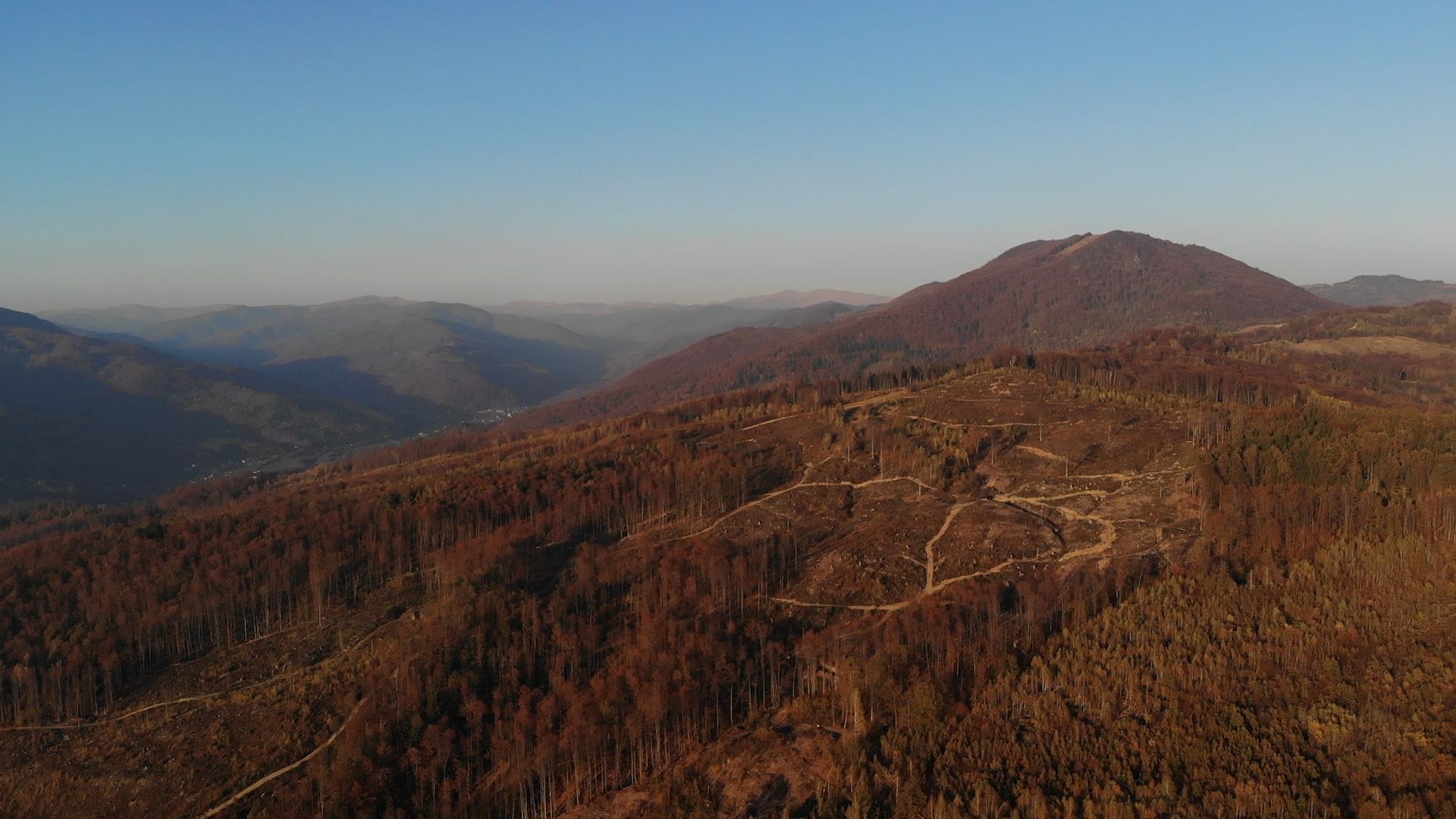
Some of the more than 100 sites of illegal sanitary cutting in Velyky Bychkiv ©Earthsight
Some of the more than 100 sites of illegal sanitary cutting in Velyky Bychkiv ©Earthsight
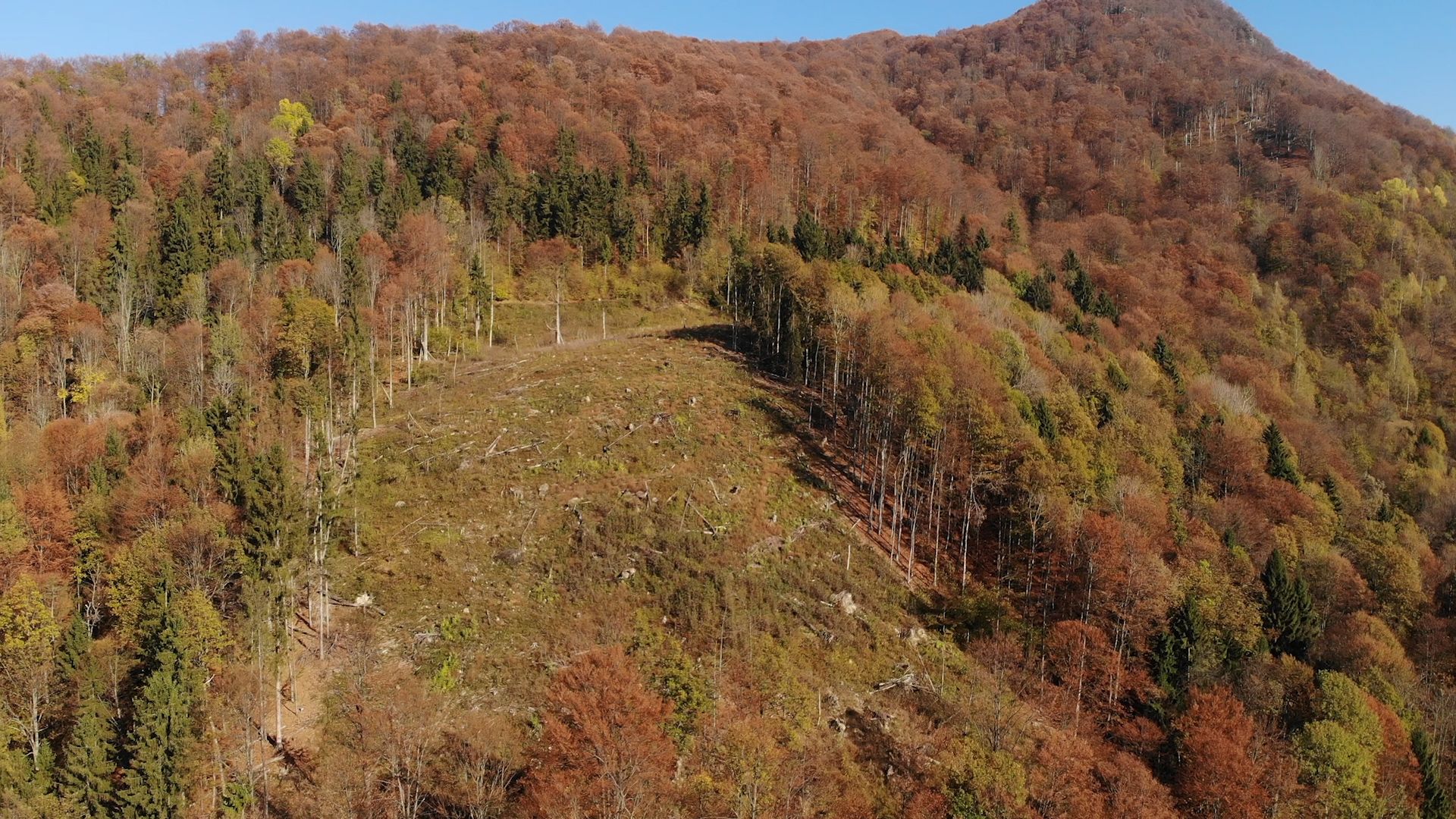
Another site of illegal sanitary cutting detected during the SEI 2018 inspection ©Earthsight
Another site of illegal sanitary cutting detected during the SEI 2018 inspection ©Earthsight

An atmosphere of fear: the dangers faced by those opposing the State Agency of Forestry Resources in Ukraine
The director of the Hutsulschyna National Park in the Ukrainian Carpathians, which officials say is being illegally cut by the local forestry enterprise, claimed forestry officials had threatened the “lives and health” of park employees. Earthsight spoke to Serhiy Komarchuk, head of the Department of Ecological Control at the State Environmental Inspectorate, who described how environmental inspectors had also been hampered in their efforts to report illegal logging when they visited.
“When we came in for inspection, our inspectors were held hostage by foresters, and the police didn’t protect us but instead helped them to detain us.,” Komarchuk grumbled. “We lodged a complaint with the police, but it mysteriously disappeared, and no one is looking into it. We wrote another complaint from the State Environmental Inspectorate of Ukraine to the State Bureau of Investigations asking them to investigate why police officers bow down to people who interfere with our work – not only did they get in the way of public officials, but also violated two articles of the Criminal Code. Moreover, one of the park guards simply got beaten up.”
The case illustrates well how difficult it is to take action against illegal logging by forestry officials of the SAFR in Ukraine, and the violence and intimidation tactics they use to silence critics – even when the ones denouncing them are environmental inspectors, national park and ministry officials.
The threat to local villagers and activists is even greater. Physical attacks are a worry. But there are other, more insidious consequences. The state forestry enterprise is an enormously powerful, omnipresent entity at the village level in the Ukrainian Carpathians, providing raw material, firewood and jobs. Speaking out against it can lead to all kinds of fallout.
Petro Testov, from Environment, People, Law, told Earthsight: “I knew a case of an activist who combats illegal logging, who was offered a bribe and then threatened. He is a strong guy, a Donbas war veteran, so he refused to stop exposing these issues. But other people in such cases would probably agree to be silenced, because they live in nearby villages, and their houses could be burnt. They may no longer have access to firewood. Or there could be other possibilities – your children could be bullied in school. Because in villages, the lishosp provides fuelwood to the school, helps the local police, helps to build the church. If you stand against the lishosp, you can face social ostracism. It is dangerous both physically and mentally.”
A whistleblower talks
In late 2019, Earthsight investigators were approached by a forester from a state forestry enterprise located in the Carpathians. His statements are vital to understanding how illegal timber in Ukraine is legalised by SFEs in Ukraine, how weak enforcement is, and how Ikea’s illegal timber problem could extend far beyond VGSM and folding chairs. This was testimony about illegal logging being offered to us straight from a person holding the chainsaw.
The source, who has requested to remain anonymous to guarantee his safety, described an atmosphere of constant pressure from his seniors to cut more than legally allowed. “I worked at XYZ(99) forestry enterprise as a logger for 10 years,” he told Earthsight. “I saw many things there. Like our dear forest wardens expanding logging areas in A, B, C(100), sub-compartments for their own needs. For example, if we officially log 200 cubic metres of wood, we’ll cut another 100 metres, moving the boundaries of the logging areas.”
According to the source, these practices are routinely carried out on every logging area within an enterprise.
“We mark the logging area with red paint. Say, the standard logging area would be up to a hectare, one hectare or one and a half. Then, at our discretion, we would step another five metres from the boundary and go around it once again, marking the boundaries with paint. [That way] if an area is around 300 cubic metres, we’d log another 150-100 cubic metres.”
He also confirmed to Earthsight that bribery of enforcement officials to turn a blind eye to illegal logging, such as the Bolekhiv case previously mentioned, was the norm rather than the exception.
“If inspectors come, they see that everything is good and the trees are marked with paint. But the logging area had been increased. No-one reacts to such violations. If there are inspectors visiting, they would be spotted on the way to the forestry. Our dear foresters would meet them and pay them off, so they turn back and go away.”
He confirmed to Earthsight how common the practice of illegal sanitary felling was. He said foresters could claim that forests have suffered from windfall for example and use this excuse to cut healthy standing forests. He also described how foresters regularly inflated the price of contractor services, or manufactured fictitious contracts for services, and pocketed the extra cash themselves.
Claiming these tactics were used by foresters in every nearby forestry enterprise, he also described a curious new scheme to Earthsight: using ghost employees on paperwork relating to illegal activities. “There are people at the forestry enterprise who don’t work there in reality and there are those who have died. All the ‘off-the-books’ jobs are registered under their names. There are at least five such ‘people’ at every enterprise.”
He said that foresters were usually too scared to speak up, for good reason. On the occasions where they had, he said, they were immediately ‘brought under control.’ “All [logging] crews get together, and each crew is told separately that everyone should keep quiet and do what they are told. You understand, one needs to continue working, feeding your family, moving on.”
Asked why he had decided to speak to Earthsight, he said: “Because I can’t stand this injustice anymore. They’re so greedy, they can never get enough. They’re trying to rake up as much as they can. It is just horrible. It has never been worse.”
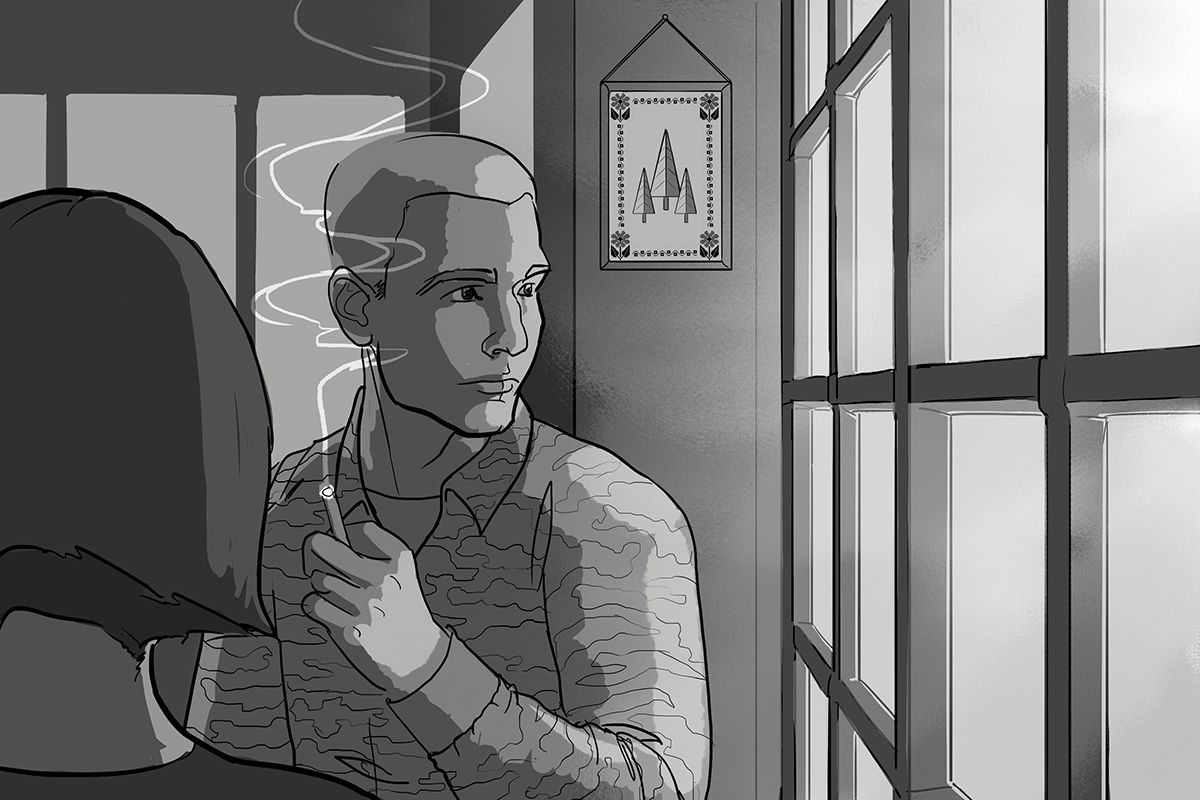
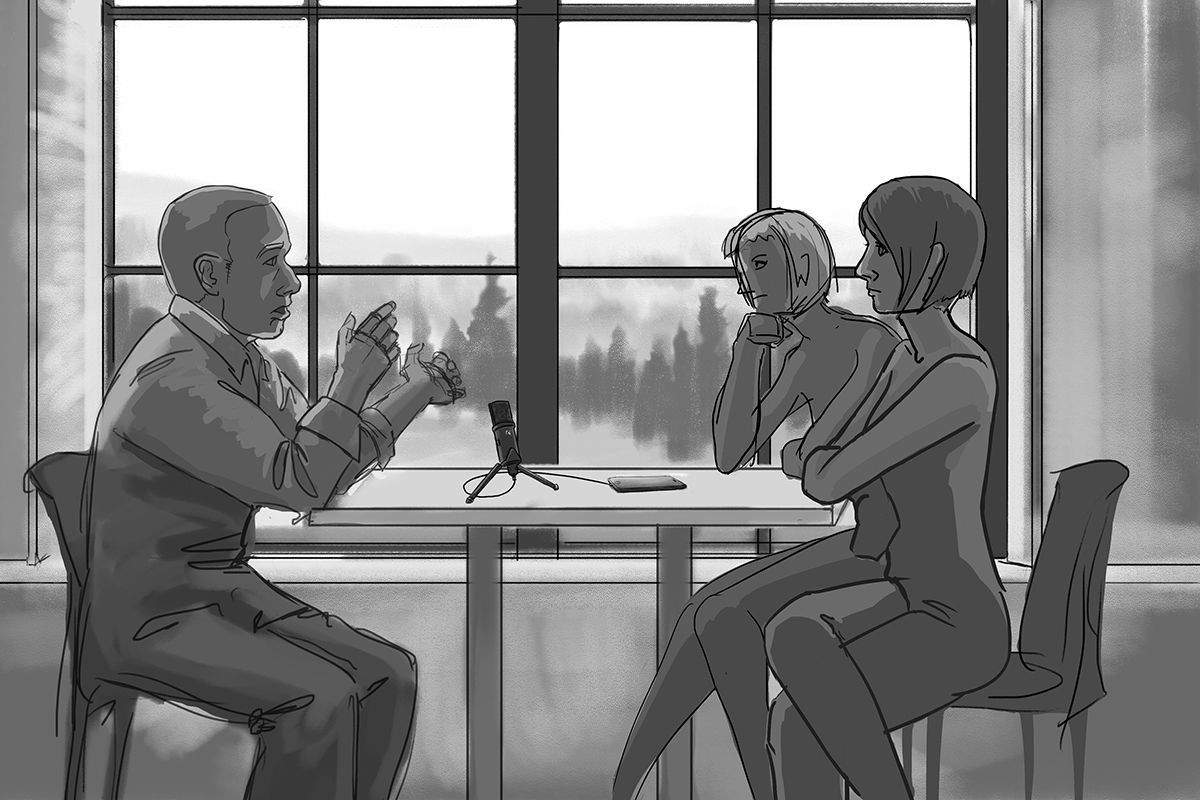
B. Rotten to the core: Ikea’s cheap chipboard furniture and high-level corruption in Ukraine
State level complicity
The illegalities witnessed in Velyky Bychkiv and the other VGSM suppliers don’t take place in a vacuum. As Earthsight’s 2018 report Complicit in Corruption documented, corruption and illegality in the timber sector in Ukraine is pervasive and occurs at all levels. More recent evidence indicates little has changed.
Information uncovered by Earthsight shows that in Ivano-Frankivsk province for example, where VGSM purchased timber from three different SFEs in 2019, top officials from the RFMB currently stand accused of colluding with SFEs and private companies to issue fake logging permits and carry out illegal logging.(101)
In neighbouring Zakarpattia, where nine different VGSM suppliers including Velyky Bychkiv are based, the head of one of those suppliers, Uzhgorod forestry enterprise, is accused by prosecutors of conducting illegal sanitary felling in a protected area, using fake documents issued with the help of the head of the regional forestry board, Valery Murga.(102a)(102b) In May 2019, police investigators on the case detained the head of Uzhgorod forestry and the deputy head of the RFMB.(103) In January 2020, former prime minister Honcharuk announced he had fired Valery Murga from office.(104) The investigation is ongoing; those involved deny wrongdoing.
Officials in these regional boards are responsible for signing off on key documentation like logging permits, annual harvesting plans, and export documents for all SFEs in the region – including Velyky Bychkiv. To what extent top RFMB officials knew of or sanctioned illegal activity in Velyky Bychkiv is not known but corruption at this level calls the legality of all the primary documents issued by these offices into serious question.
The case of VGSM and beech chairs is just one of several supply chains leading from Ikea back to Ukrainian forests. Most of Ikea’s Ukrainian raw material comes from other sources. Exploring some of these reveals how the beech chairs are no special case; indeed, other Ikea supply chains may have been dodgier still, and are linked to corruption at the very top.
Ikea and high-level corruption in the Yanukovych era
Between 2010 and 2014 Ukraine was under the control of notorious kleptocrat Viktor Yanukovych. On his overthrow in the Maidan revolution of February 2014, he left behind a vast luxury mansion whose grounds included a mock Spanish galleon and a private zoo. Evidence soon emerged that he had paid at least $2 billion in bribes during his four years in office.(105) Even before he was deposed, he used to boast to other ex-Soviet heads of state about how corrupt he was.(106) Much of the cash Yanukovych and his cronies stole from the state was laundered through shell companies in the UK, whose true beneficial owners were hidden behind further shells in offshore secrecy jurisdictions.(107)
Earthsight’s 2018 report Complicit in Corruption documented how this exact model operated with regard to the corrupt exploitation of Ukraine’s valuable forests. One of Yanukovych’s closest associates – and regular tennis partner – was Viktor Sivets. Sivets was given the plum job of running Ukraine’s forest service, a job he exploited to the full. According to a report prepared for the World Bank by a top Ukrainian forestry expert which draws on the findings of an official investigation into Sivets, during his time in charge foreign companies wanting to gain access to Ukrainian timber produced by the State Forestry Enterprises under his control were required to pay ‘marketing fees’ for every cubic metre of timber purchased into offshore bank accounts controlled by SAFR top brass.(108)
Earthsight spoke to Ostap Yednak, formerly from the timber industry, then an independent MP for several years, and currently on the Board of a Ukrainian advocacy network. He explained how the bribes worked to Earthsight. “It was evident for everyone in the market, and also to law enforcement authorities in Ukraine that not a single foreign company could access the market without paying an ‘agency fee’ or ‘marketing fee’ – which basically was a bribe – to some offshore company, or maybe bring cash to the authorities.
“It was a very cynical method used by EU companies or any buyer, whose main priority is to get the resource. How this resource is received is like a secondary question for them.”
Documents obtained by Earthsight revealed that one overseas timber firm which stood directly accused of complicity in these schemes was Austrian-owned Holzindustrie Schweighofer, whose Romanian mill was by far the largest consumer of Ukrainian logs at the time. Its Slovakian subsidiary, Uniles s.r.o., is specifically named by prosecutors as having been found during their pre-trial investigation to be one of four companies from which Sivets received illegal payments totalling €13.6 million during the period February 2011 to February 2014. The payments were sent to the Latvian bank accounts of three shell companies – two of them registered in the UK – before being routed on to the Swiss bank accounts of two Panamanian firms established by Sivets’ wife. Customs records obtained and analysed by Earthsight confirm that Schweighofer imported over 1.1 million tonnes of logs from Ukraine during the Sivets era, worth over $100 million. Around half of these were handled by Uniles.(109) Uniles told Earthsight that it only acts within relevant laws and regulations and strongly rejects any allegation that states the contrary.
During this time, Ikea was using wood from Schweighofer’s mill in Romania. It only ceased purchasing from Schweighofer in 2016(110), most likely because of separate revelations regarding illegalities relating to its Romanian timber supplies. If Schweighofer was paying bribes for its Ukrainian logs, then Ikea was in all likelihood unwittingly selling products made from that very same wood.
The global chipboard giant
Schweighofer’s vast facility at Radauti close to the Ukrainian border is shared with another Austrian timber giant. Egger, which has a turnover in excess of €2 billion a year, is the second largest producer of wood-based panels in the world.(111) These kinds of cheap chipboard panels, covered in melamine or veneer, are what is used to make most of Ikea’s furniture.
During the Sivets’ era, Egger was Schweighofer’s largest customer.(112) In what amounted to an efficient joint operation, waste from logs turned into sawn-timber at Schweighofer’s mill was used to make chipboard panels by its neighbour. Egger also imported 17,000 tonnes of logs of its own from Ukraine while Sivets was in charge at the SAFR.(113) This Egger facility was also supplying Ikea at the time. In 2014, for example, Romanian records show purchases by Ecolor(114), a Swedish-owned furniture factory in Romania which produces chipboard panel flat-packed furniture exclusively for Ikea. Ecolor supplies numerous cheap and popular Ikea staples, including the white melamine-coated Algot shelf and Stuva Grundlig kitchen drawer.(115)
While Ikea halted purchases from Schweighofer in 2016, it has continued to use wood from Egger’s mill next door.(116) And Egger has continued buying from Ukraine. Indeed, after Yanukovych’s fall, Egger’s Radauti mill overtook Schweighofer to become the largest consumer of Ukrainian wood in the world. And while Sivets’ alleged bribery scheme was ended when the regime fell, there was much still to be concerned about regarding Egger’s purchases.
Our 2018 report revealed how kilometre-long trains loaded with logs illegally exported from Ukraine in contravention of its log export ban were arriving at Egger’s Romanian mill on an almost daily basis. One third of the logs it imported from Ukraine in 2017 also originated from state forestry enterprises whose senior officials were the subject of major ongoing criminal investigations for timber-related corruption. In one of these cases, Egger’s name was even mentioned in documents filed by prosecutors in Ukrainian courts (though it was not itself accused of wrongdoing). In an echo of Sivets’ earlier scheme, prosecutors alleged in 2016 that officials at three SFEs in Zhytomyr oblast were colluding to sell timber at below-market rates to two UK letterbox companies, who were then selling it on to Egger. The case remained open in 2018.(117)
Continued complicity
Following our report, Egger commissioned a third-party audit of its supply chains from Ukraine. In January 2019 it declared that this had concluded that the legality of its wood was ‘absolutely guaranteed’ and that its due diligence systems were fully compliant with the EU Timber Regulation (which demands risk of illegality is reduced to a negligible level).(118) Ikea also investigated the Egger supply chain, using third party auditors as well as its own specialists, with full access to Egger’s internal supply chain records. They claim to have found no illegally sourced wood, though one Ukrainian supplier was blacklisted as its sub-suppliers were unable to provide documents of origin in due time.(119)
Other evidence suggests these auditors either may not have been looking very hard or had an odd way of assessing risk. There are also reasons to question the full independence of the selected auditors. For its audit, Egger hired the Swiss-based firm SGS, which was the very same company which had previously issued legality and sustainability certificates to many of the Ukrainian state-owned forestry enterprise suppliers highlighted by Earthsight as linked to evidence of illegality and corruption. It also has a track record of failing to spot serious abuses by Ukrainian companies it audits, including in Velyky Bychkiv and elsewhere.(120) Any criticism SGS had made of Egger’s purchases would have effectively been a criticism of its own auditing. In this light, it is perhaps unsurprising that it found nothing. Given’s SGS’s broader timber auditing record (see Part V), even less surprising.
Meanwhile, Egger’s claims to never have been importing logs covered by Ukraine’s log export ban were rather dramatically contradicted when an enforcement crackdown ordered by the Ukrainian Prime Minister in response to our report brought the flow of illegally exported logs to an almost complete halt, depriving Egger of 30,000 tonnes a month of raw material – enough to fill 600 railway wagons. The buried Audit Service report also confirmed that Egger’s largest supplier had been exporting logs illegally.
Though the stemming of these illegally exported logs dramatically reduced Egger’s supplies of Ukrainian timber, the company has continued to source from Ukraine. Its latest timber origin declaration – provided to Ikea – confirms that 14 per cent of the melamine-coated furniture chipboard it produced at its Radauti mill in 2019 was made with Ukrainian raw materials.(121) Fresh investigation by Earthsight reveals that these continued imports are just as suspect as before.
Fifty miles east of Velyky Bychkiv, on the other side of the Ukrainian Carpathians, is Chernivtsi, a province in the Ukrainian Carpathians we previously visited to write our 2018 report. East of Zakarpattia and sharing a notoriously porous section of border with Romania, Chernivtsi is home to the south-easternmost section of the Ukrainian Carpathians. Most of its forests are spruce and fir. When we first spoke to activists and conservationists in Chernivtsi, they told us of a ‘mafia-like’ network of corrupt forestry and customs officials, set up to launder illegal timber and ship it over the border into Romania.(122)
Chernivtsi has faced these problems for a while, as government and NGO sources show. In 2015, a Parliamentary committee was sent to Chernivtsi to investigate ‘peculiarities’ in the forestry sector at the time, particularly in Beregomet SFE, one of the SFEs in the area. It was suspected that timber suppliers had been colluding with foreign importers of timber to intentionally underestimate the quality of raw timber. An inspection by the State Ecological Inspectorate the same year exposed illegal logging, illegal sanitary felling, and violations of rules on export of timber by the enterprise.(123)
This SFE and senior officials in the provincial RFMB have been repeatedly accused by local prosecutors of colluding to organise an illegal logging scheme involving timber exports. In July 2017, Earthsight’s own field sampling in Beregomet also showed officials had been conducting unjustified sanitary felling there. The experts we hired to conduct this study were physically threatened and chased out at gunpoint by SFE guards.(124)
A few months later, Roman Cherevatyi, head of the Chernivtsi regional forestry board, was caught red-handed bribing the police tens of thousands of dollars a month to turn a blind eye to illegal logging in the SFEs under his watch, including in Beregomet.(125)
Serious charges against Cherevatyi as well as Beregomet SFE are still being investigated, with fresh evidence continuing to be presented in court.(126) Despite this, shipment records obtained by Earthsight show Egger has continued to source from them. With logs now off the menu, Egger is instead buying wood chips and sawn wood. During 2019 Egger imported 68,766 tonnes of wood from Ukraine. More than half of this wood came from Chernivtsi, and the number one supplier was Beregomet SFE. The second largest supplier was a Chernivtsi-based company called Krastok, which we found is also connected to the Cherevatyi case.(127) Altogether, our evidence reveals that Egger is importing an average of 2,700 tonnes a month from companies directly implicated in that ongoing investigation.(128)
Cherevatyi and other defendants in the case deny the charges against them. Earthsight spoke to Antac, a renowned anti-corruption NGO based in Kyiv which has looked into these investigations and attended Cherevatyi’s court hearings in 2019, to learn their significance.
“It is common for cases against high-ranking officials such as Cherevatyi to drag on for years,” Antonina Volkotrub, a senior investigator at Antac, told Earthsight. “The purpose of such delays could be that the defendants hope the statute of limitations will be reached, and the case will expire. In the Cherevatyi bribery case, proceedings have been ongoing since 2017 despite him being caught red-handed in the act of bribery by authorities. In our experience, such delays could also mean that the defendants could be trying to break the case as evidence tends to disappear over time and key witnesses may refuse to give testimonies after being pressured, or these witnesses may forget important facts with time.
“So just because the cases against Cherevatyi, Beregomet or Krastok have not reached final conclusions doesn’t mean there is not a high risk associated with these suppliers. Besides, apart from the court proceedings, we have come across numerous other red flags about suppliers in this region in the course of our research.”
One of these red flags is the buried report by the Ukrainian Audit Agency. The report, which as outlined in Part I was ordered by Ukraine’s former prime minister as part of a crackdown on illegal logging issued in response to Earthsight’s 2018 timber corruption exposé, showed that Beregomet SFE had likely forged documents to export round timber despite a ban on exporting round timber from Ukraine at the time. The report also stated that forest products from Beregomet SFE had been exported from Ukraine as fuel wood but had entered Romania as round timber in contravention of the log export ban. Earthsight’s research shows that Egger was the biggest buyer of timber from Beregomet during the period covered by the Audit agency’s checks (2016-2018).
The same audit report says the State Customs Service slapped Beregomet SFE with 8.5 million Ukrainian hryvnia ($265,470) in punitive penalties for these violations in 2018. According to the report, illegal logging that had caused damages of 25 million Ukrainian hryvnia ($780,796) had occurred in Beregomet SFE in just the first few months of 2018 alone. The Audit Agency’s report provides fresh evidence from a government body that during the time Egger was its biggest buyer, Beregomet SFE was involved in illegal logging and had breached the log export ban.
Volkotrub told Earthsight: “Ukrainian customs levied a large fine on Beregomet Forestry for selling timber with the help of forged documents to Egger in Romania. This is a very strong indication that the timber exported by that SFE was considered illegal by customs and thus can be called ‘of high risk’.”
Ikea admitted to Earthsight in November 2019 that Egger’s mill in Romania continues to be an important supplier of panels for its furniture, though it is unclear if Ecolor is among those still purchasing from it.(129) Earthsight was therefore unable to confirm which Ikea products still use Egger’s melamine-coated chipboard, but many still do, and there is a fair chance you will have heard of them.
Supplied with our findings in advance of publication, Egger stated it has “made every effort to ensure, independently of the State Forestry Resources Agency of Ukraine, that the origin of the timber supplied to it is clearly legal”. It noted that a number of third-party audits of its Romanian plant since our 2018 report, including one by Ikea, had found no major issues.

Provincial forest chief Roman Cherevatyi, arrested offering large bribes to police to overlook illegal logging, October 2017 © National Police of Ukraine
Provincial forest chief Roman Cherevatyi, arrested offering large bribes to police to overlook illegal logging, October 2017 © National Police of Ukraine
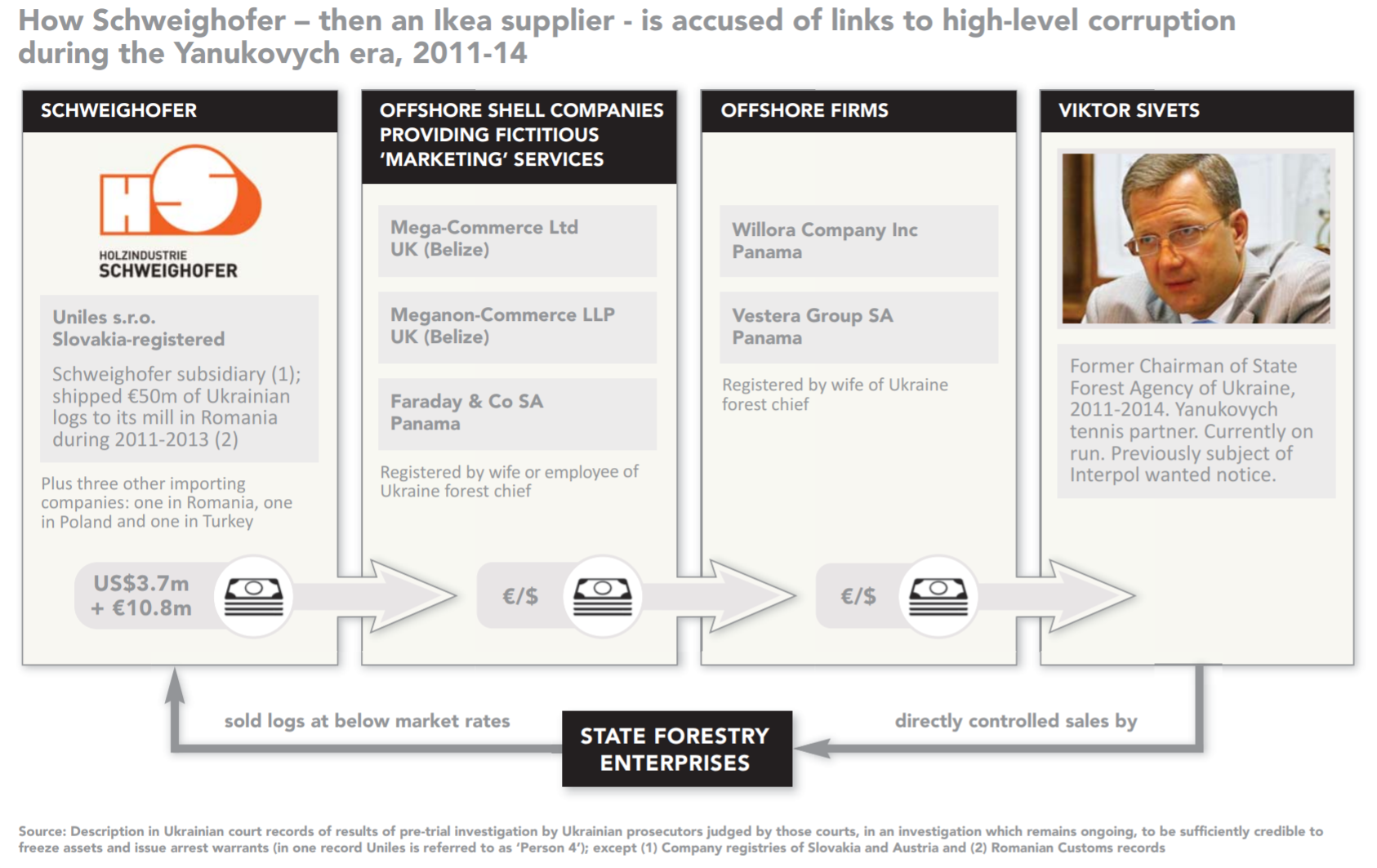
How Schweighofer – then an Ikea supplier - is accused of links to high-level corruption during the Yanukovych era, 2011-14 Source: Description in Ukrainian court records of results of pre-trial investigation by Ukrainian prosecutors judged by those courts, in an investigation which remains ongoing, to be sufficiently credible to freeze assets and issue arrest warrants (in one record Uniles is referred to as ‘Person 4’); except (1) Company registries of Slovakia and Austria and (2) Romanian Customs records
How Schweighofer – then an Ikea supplier - is accused of links to high-level corruption during the Yanukovych era, 2011-14 Source: Description in Ukrainian court records of results of pre-trial investigation by Ukrainian prosecutors judged by those courts, in an investigation which remains ongoing, to be sufficiently credible to freeze assets and issue arrest warrants (in one record Uniles is referred to as ‘Person 4’); except (1) Company registries of Slovakia and Austria and (2) Romanian Customs records
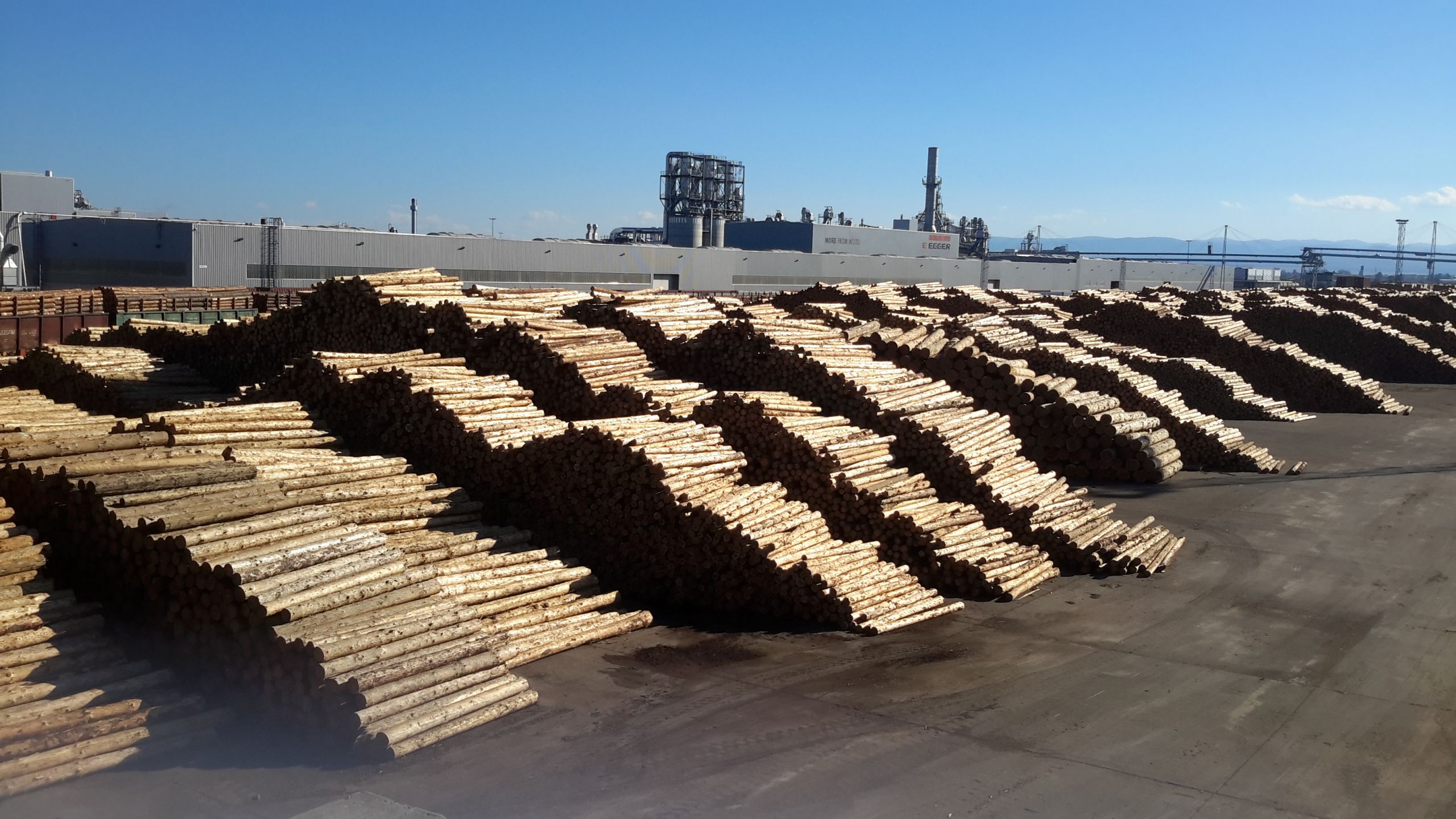
Egger's giant processing site at Radauti in Romania, close to the Ukrainian border © Nikolai Petichenko
Egger's giant processing site at Radauti in Romania, close to the Ukrainian border © Nikolai Petichenko
Part IV: Ikea and FSC - a long history of cooperation and greenwash
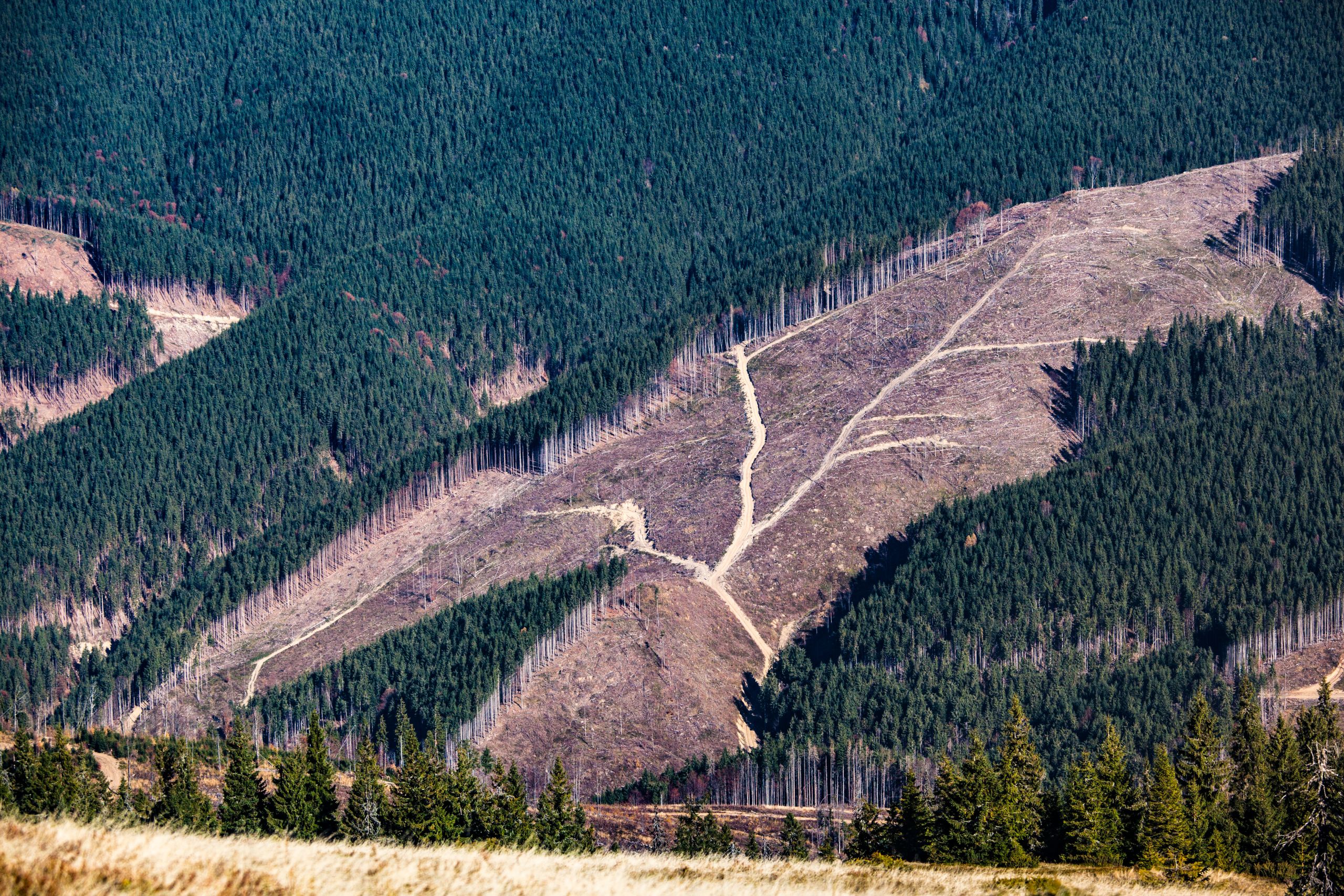
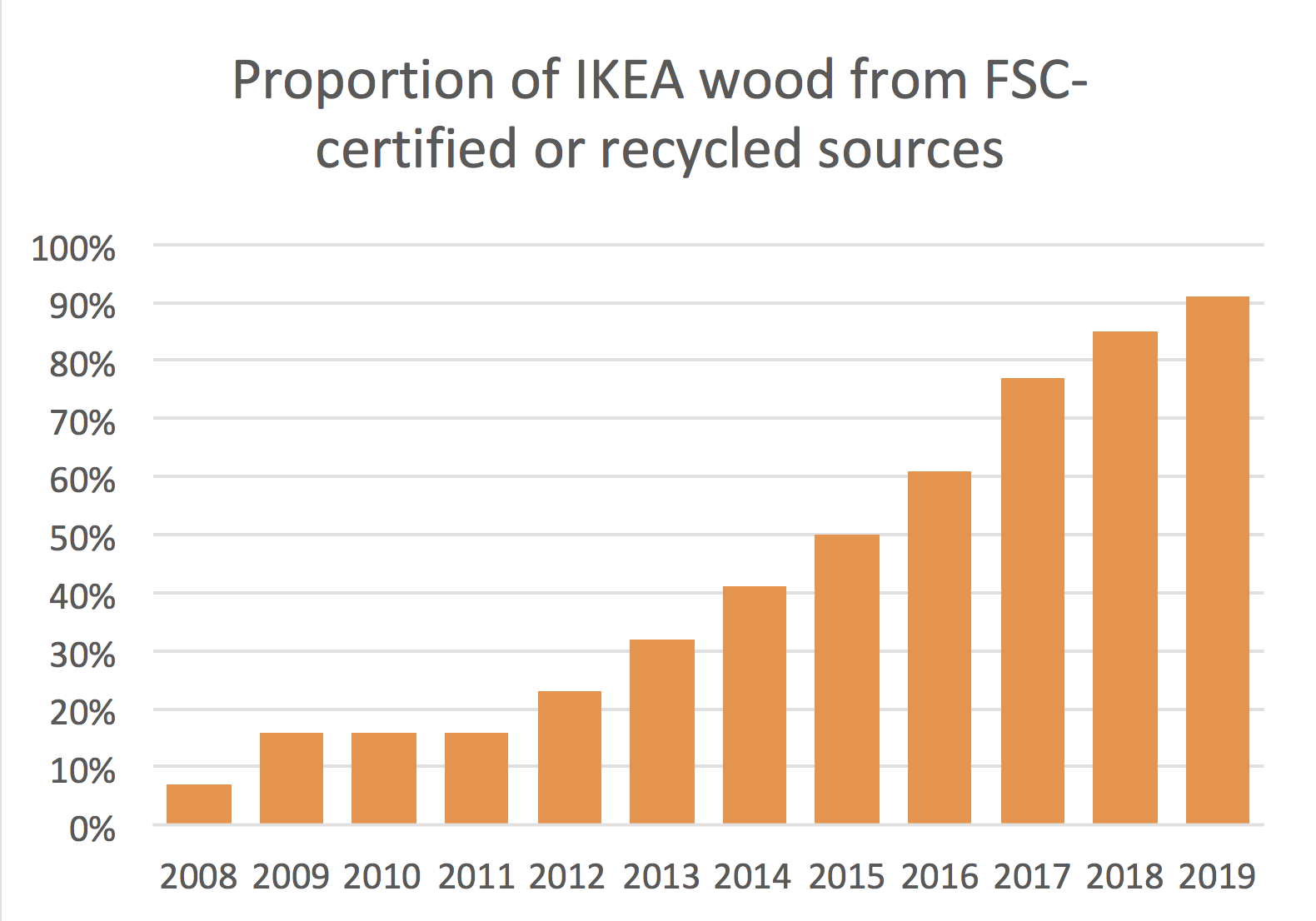
Proportion of wood used by Ikea which is either FSC-certified or recycled
Proportion of wood used by Ikea which is either FSC-certified or recycled
Greenwashing illegal timber for Ikea
As you drive out of the territory of a forestry enterprise in the Ukrainian Carpathians, it is common to catch sight of a dusty wooden sign giving its name, size and other details. Many of these signs also carry a logo, a green tree outline combined with a tick, under which are three letters: F, S, C. Contained within this logo is the explanation of Ikea’s failure to detect the problems in its supply chains.
Ikea has long recognised that as one of the world’s largest wood users, its business can have a significant impact on the world’s forests, and that therefore the company has both “the ability – and the responsibility – to influence how forests are managed.”(130) As part of its broader strategy to be what it calls ‘Planet Positive’, in 2014 Ikea committed to ensure that by August 2020 all of its timber supplies would be either recycled or proven to be sustainably produced.(131) In order to do this, it chose to rely on the Forest Stewardship Council, or FSC, the leading international green labelling system for wood and paper.
By 2019 Ikea was well on its way to approaching its target, with 91 per cent certified or recycled.(132) But for higher-risk countries like Russia, China and Ukraine, all of its wood has been FSC-certified since 2017.(133)
All of the illegally harvested timber Ikea is receiving from Ukraine is FSC-certified. Velyky Bychkiv SFE, the biggest supplier of beech for Ikea chairs, has been FSC certified since 2005.(134) Most of the other suspect VGSM suppliers mentioned in the previous chapter are also FSC certified or have been (Kutsky, home to Hutsulshyna National Park, is the sole exception).(135)
Altogether, 90 per cent of the Carpathian forests under the control of Ukraine’s state forestry agency are FSC-certified.(136) VGSM, Plimob and all the other Ikea suppliers or sub-suppliers mentioned in the previous chapter are proud holders of FSC ‘Chain of Custody’ certificates.(137) The beech which authorities found VGSM cut illegally during the silence period of 2018 left their factory carrying the FSC stamp. Most shockingly, when FSC auditors next visited Velyky Bychkiv, they either didn’t notice or chose not to mention the SEI’s damning findings, despite these being a matter of public record.(138) All of the SFE’s operations as well as the timber sold by it continue to be endorsed by the FSC seal of approval to this day.
It isn’t just breaches of logging regulations which FSC has failed to detect and prevent from contaminating Ikea. As described in previous chapters, it is now widely accepted that during the Yanukovych era, bribes were paid by overseas importers to the head of Ukraine’s forest service for all logs purchased from the enterprises under his control. This was a multimillion-dollar crime by a close associate of the kleptocratic ruler of one of Europe’s largest states. Yet many of those logs were FSC certified. FSC Ukraine representatives regularly met with the Agency led by this corrupt head to discuss forest policy and expansion of FSC-certified areas, but have said nothing about any wrongdoing by him or his agency during the Yanukovych era, either at the time or since. Analysis by Earthsight shows that 22 per cent of the logs Holzindustrie Schweighofer imported in 2013 at the height of Sivets’ scheme were FSC-certified.(139) An even higher proportion (46 per cent) of those imported by fellow Ikea supplier Egger were also FSC-certified.(140)
What is FSC?
The FSC is the world’s most popular green consumer label for wood, and universally accepted as the best global system of its kind, with standards that significantly exceed that of its key competitor, PEFC. FSC was set up in 1993 with the help of a group of environmental organisations including WWF. Ikea was one of the founding members.(141) It maintains a set of standards and procedures against which forests can be assessed and judged to be producing timber sustainably. The assessments are carried out by approved certifiers – profit-making auditing firms. To be certified, loggers need to show they comply with all relevant laws, respect indigenous rights, take measures to reduce the environmental impact of logging and avoid cutting in areas of forest with particularly high ‘conservation value’, among other things. Companies which buy and process wood from these forests need to obtain a ‘Chain of Custody’ (CoC) certificate proving that they can avoid mixing it with other wood. Products they sell made from FSC wood are then allowed to carry the FSC’s tree logo, giving them an advantage in a market of increasingly demanding and environmentally conscious buyers, where consumer country laws and government procurement policies commonly now also require relevant standards to be met. FSC-certified forests are audited once a year. A company called Accreditation Services International (ASI) is tasked with checking that the certifiers are doing a proper job. FSC is controlled by an assembly made up of both NGOs and industry, which meets every two years.
FSC’s history of failure in Ukraine
FSC’s failures in Ukraine were previously demonstrated in Earthsight’s 2018 report Complicit in Corruption, which outlined numerous cases of corruption and illegality which the organisation’s audits had failed to pick up.
Field checks conducted for WWF Germany found numerous illegal sanitary felling sites in FSC-certified forests(142); Earthsight also found that many SFEs remained certified despite their top officials being the subject of ongoing investigations into serious criminal corruption. Testimony from a whistleblower helped explain these failures. The former chief of one of the largest timber-producing SFEs in the Carpathians told Earthsight that he had found it easy to circumvent FSC checks. He described these as mostly “box-ticking exercises” and explained how it was common practice for foresters to take auditors only to ‘best practice’ logging sites specially prepared for them.(143)
In October 2018 ASI, the outfit tasked with enforcing FSC’s rules, carried out special checks in Ukraine in response to Earthsight’s damning report.(144) It did not follow-up on any of the several cases of large scale corruption or bribery documented in the report, justifying this by stating simply that voluntary standards were not designed to deal with corruption. Particular focus was placed on both the legality of sanitary felling and fraud in timber sales and exports. The ASI team visited two neighbouring FSC-certified Carpathian SFEs in Lviv province. After four days, they concluded that everything was fine.
However, as a way of testing the veracity of Earthsight’s claims, this exercise was totally inadequate. The areas assessed for legality of sanitary felling were ones which had been planted long ago with spruce at elevations where it is not native. These spruce forests are known to be especially susceptible to die-back, and sanitary felling is therefore much more likely to be legal. Yet they are quite untypical of forests in most of the rest of the Carpathians. The team also assessed almost exclusively selective sanitary felling sites, when the biggest problems with illegal sanitary felling are well known to relate to clear-cuts.(145)
The assessment of the legality of timber sales and exports was also flawed, since it was based solely on documentation provided by the SFEs themselves.
Yet warning signs of real problems continued. In an audit of an SFE in Zakarpattia in June 2019, ASI found that the certifier (Swiss firm SGS) had failed to mention in their published report the fact that the SFE’s senior staff had been accused of corruption by state authorities, despite being aware of it.(146) Yet ASI concluded that because the personnel concerned had not yet been found guilty, the FSC certificate could remain. SGS was found to have erred in not mentioning the ongoing investigation but went unpunished. In the only other ASI audit of an FSC-certified SFE since Earthsight’s report was published, meanwhile, ASI dismissed allegations by a stakeholder of illegal sanitary felling after visiting a number of sites where such felling had already been completed.(147) Yet any truly meaningful assessment of the legality of such felling needs to occur while the supposedly unhealthy trees remain standing. Once they have been cut down and carted off, there is little evidence by which to judge.
There isn’t even any real guarantee that Ukrainian wood carrying the FSC logo really came from an FSC-certified forest. Though there is no evidence of such laundering for the Ikea products Earthsight examined, a problem clearly exists. In 2019, ASI found that Ukraine’s leading charcoal producer and exporter, whose products – made from beech and other hardwoods cut in the Ukrainian Carpathians – are sold throughout the EU including in branches of Tesco, Lidl and Carrefour(148), had been systematically defrauding the system by labelling uncertified charcoal as FSC.(149) The ASI audit was triggered by an exposé by WWF and German TV station ARD.(150)
Meanwhile, consumers all over the world continue to buy everything from paper and firewood to flooring and furniture made from FSC-certified Ukrainian wood. Earthsight asked Petro Testov, a forestry expert from the Ukrainian NGO Environmental, People, Law, who has studied the problems in FSC’s operations for years, whether he thought the promises FSC makes to consumers that they are buying good wood could be trusted. His reply is sobering: “When I see FSC-logo on a product or when someone says it is so great there is an FSC-logo, I feel outrage because people are being fooled. The person is being fooled and doesn’t even know it.”(151)
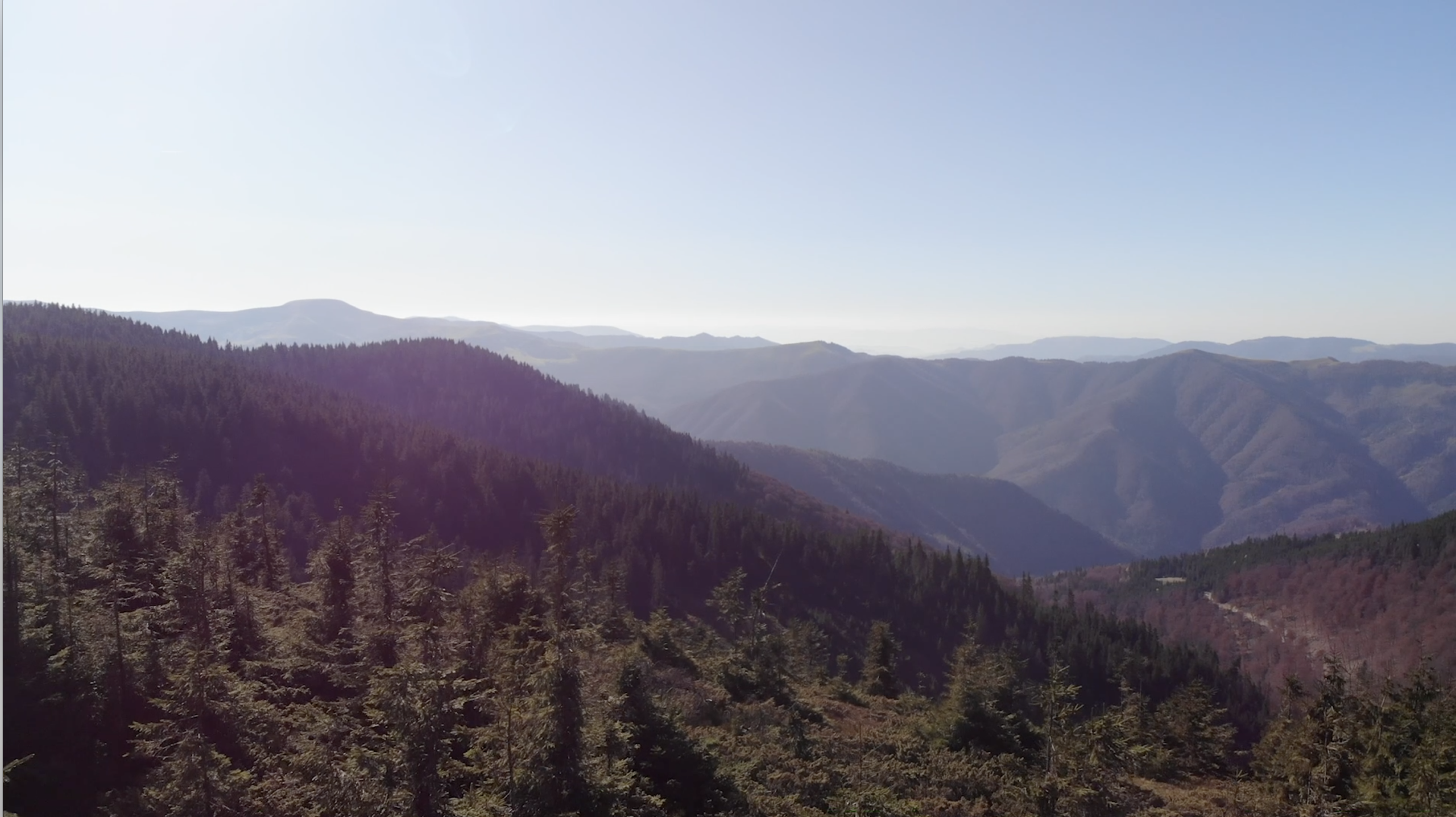

Change in area of FSC-certified forest, 2014-19; expansion has focused in countries with high corruption risk. Source: FSC Statistical Reports
Change in area of FSC-certified forest, 2014-19; expansion has focused in countries with high corruption risk. Source: FSC Statistical Reports
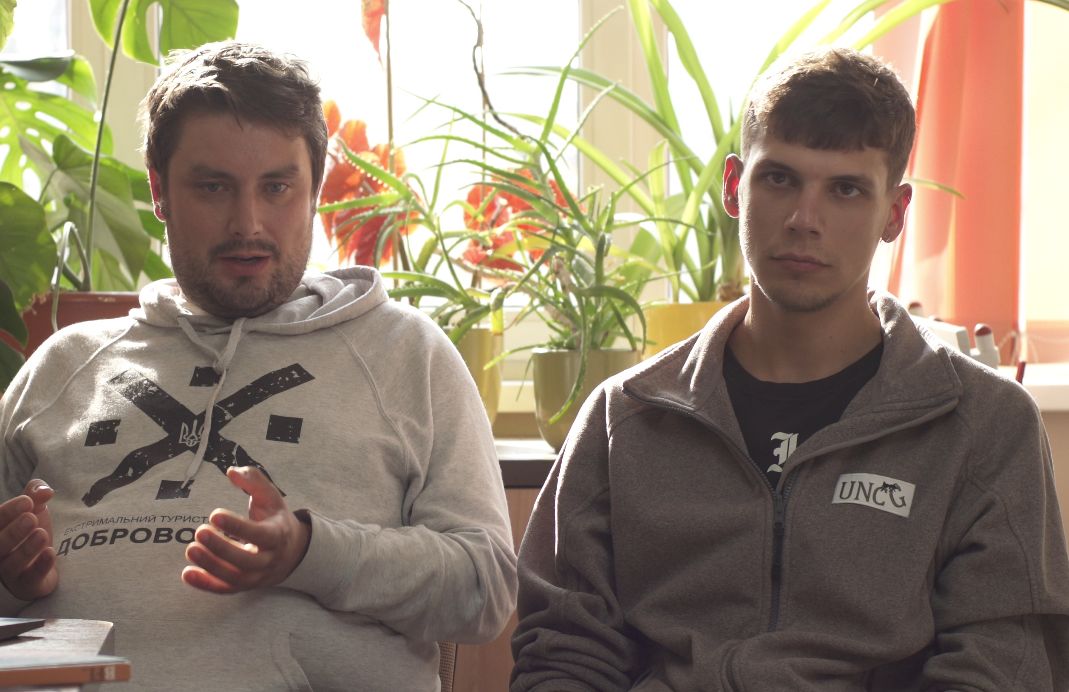
Petro Testov of EPL (left) and Yehor Hrynyk of UNCG
Petro Testov of EPL (left) and Yehor Hrynyk of UNCG
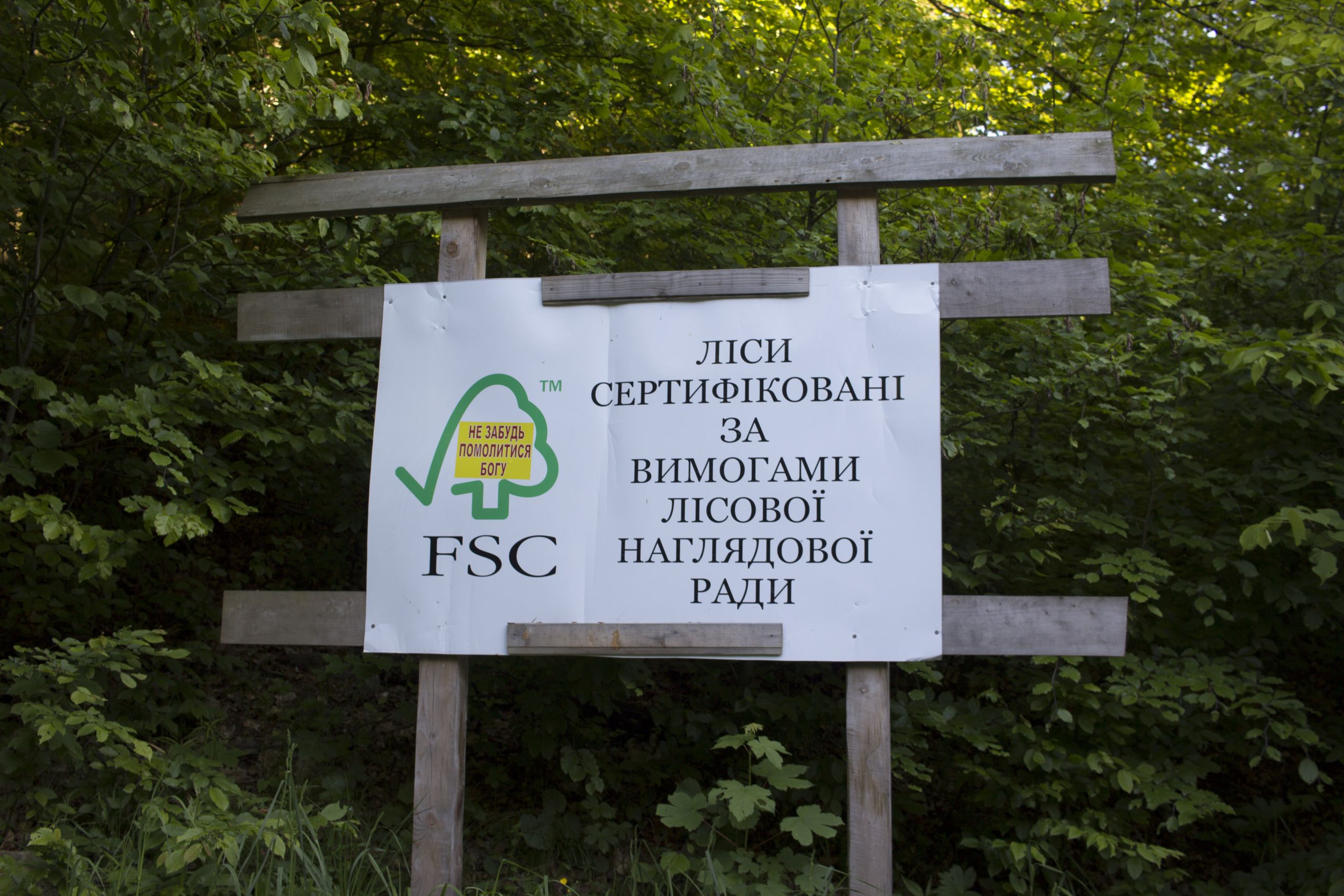
State forestry enterprises in the Ukrainian Carpathians proudly advertise their FSC status. © Earthsight
State forestry enterprises in the Ukrainian Carpathians proudly advertise their FSC status. © Earthsight
FSC and Ikea: failing nature as well as the law
The problems of FSC in Ukraine extend beyond a failure to spot illegality and corruption or poor working conditions. The core purpose of FSC certification is to ensure that logging goes beyond legal requirements in protecting the most valuable natural features of forests. That is why it requires forestry enterprises it certifies to identify and set aside specially ecologically valuable sections of forest and formulate rules to ensure they stay protected from undue damage. SGS, the certification body that gave Velyky Bychkiv its FSC certificate, further clarifies this requirement by saying in its own rules that all such particularly valuable landscapes, called “representative areas”, “shall be protected in their natural state and recorded on the map, appropriate to the scale of operations and the uniqueness of the resource.”
When Velyky Bychkiv obtained its FSC certificate in 2016, it was required by SGS to produce a list of such representative areas after mapping particularly biodiverse or otherwise ecologically valuable forest plots, and it duly outlined corresponding rules for their protection.(152) In these rules, the SFE said that it would preserve these areas “in the natural state”, adding that “no forestry operations which can change the natural state and damage natural processes are allowed there.”
Earthsight obtained a copy of the areas Velyky Bychkiv set aside for protection to comply with the FSC auditor’s rules via a Freedom of Information request and compared this to SFE logging data. The results show that far from preserving these areas in their natural state, during 2017-2019 the SFE had issued 31 logging tickets for logging in them, producing over 5,000 cubic metres of timber.
Some of this logging was conducted in 2017 on ‘virgin’ forest plots, contiguous areas of intact forest. A Ukrainian forest law, developed that same year, states that to stay classified as virgin forests, no more than five tree stumps per hectare can be identified on a given forest plot. This suggests the SFE could also be deliberately logging in virgin forests in order to have them declassified and allow expansion of harvesting operations there in future.
Ikea, FSC and corrupt ex-Soviet Europe: tied at the hip
It would be too easy to portray Ikea as the innocent victim of a failing global green scheme. The relationship between Ikea and FSC is more complicated than that.
Ikea’s 2014 commitment put huge pressure on FSC. The company had missed earlier targets because of a shortage of FSC certified wood on global markets.(153) In 2016, Ikea warned that it expected to miss its 2020 target by 20 per cent, unless FSC expanded dramatically.(154)
In order to aid that expansion, Ikea has provided both stick and carrot. It has invested hugely in FSC, both directly and indirectly. Direct investments include co-funding an FSC marketing push, and directly funding the operation of its Ukraine office. Indirect investments include a long-running partnership with WWF, where Ikea funds the global green group to promote the scheme and assist companies in obtaining FSC certificates. Ikea claims to have helped certify around 35 million ha of forest to FSC standards – almost a fifth of the total.(155)
But it hasn’t all been Mr Nice Guy. The Swedish firm made veiled threats that unless FSC delivers on the required expansion, it would be forced to also open the doors to its competitors in the wood certification industry.(156) And while Ikea is now close to reaching its target, that won’t mean the pressure is off FSC. Because Ikea’s wood needs keep growing, FSC must too.
To meet Ikea’s needs, FSC must not only expand rapidly, it must also expand in the same high-risk Eastern bloc countries that Ikea is depending on for its growing hunger for wood. Analysis by Earthsight reveals that almost all of FSC’s growth since 2014, when Ikea set its target, has been in Russia, Belarus, Ukraine or other ex-communist parts of Europe. Collectively, the area of FSC forests elsewhere in the world has actually declined. FSC is tied at the hip to Ikea, its future dependent on Ikea’s demand for it to keep certifying more and more forests in highly corrupt environments in ex-Soviet Europe. The problem is, fundamental flaws in FSC mean it is poorly placed to do this effectively.
Parties in the woods: cosy relations and conflicts of interests
Petro Testov, from Environment, People, Law and Yehor Hrynyk, from UNCG, have been monitoring FSC’s activities for a number of years. They explained to Earthsight how the root cause of many of the problems with the FSC system in the country lie in the conflicts of interests which auditors have. They outlined how closely connected FSC is with the state logging apparatus in Ukraine. The auditors are all foresters, trained in logging; almost none are specialists in biodiversity. Most work at the National Forestry University in Ukraine, National University of Life and Environmental Sciences, Ukrainian Research Institute of Forestry and Forest Melioration and other SAFR-linked institutions whose experts are also often employed by the SAFR to justify sanitary felling. Some of these part-time auditors have also been directly employed by other branches of the state forestry agency. According to Hrynyk: “The idea of FSC is: it has to be pro-business, pro-social and pro-nature. It has to balance these three issues. What we see now [in Ukraine] is that this pro-nature aspect is lacking.”
Dramatic confirmation of the close relationship between FSC auditors and senior officials of the state logging companies they inspect was provided to Earthsight in October 2019, by a forester of 10 years standing from an FSC-certified Carpathian SFE. He said once the formalities of the “dog and pony show” inspection were completed, the auditors and SFE leadership would retire to a summerhouse in the woods to party on alcohol, meat skewers and spicy ‘bogracz’ soup.
Even where auditors are intent on doing their job, the same whistleblower confirmed how easily SFE officials are able to pull the wool over their eyes. “They don’t let the inspectors go to any place they don’t want them to” he said. “Push them in a car, in a bus at once, with blacked-out windows, so the visitors don’t understand where they’re being driven. Then they’re taken back the same way.”
He explained the comical nature of how FSC requirements for worker health and safety are dealt with. “When the inspection visits take place, we turn up there looking like clowns. They give us new working clothes. They bring us drinking water which we’ve never seen before. In reality we haven’t been issued any coveralls or gloves for three years, nothing. They take those away from us the moment the inspectors leave. Everything gets collected again before the visitors even get to the gate.”
New standards, same problems
A new FSC forest management standard for Ukraine came into effect in March 2020.(157) It marks a significant improvement on its predecessor with regard to addressing failures to detect or prevent illegality and corruption in FSC-certified forests. For the first time, for example, it suggests that auditors check court registers and media reports and write to law enforcement agencies for relevant information. Doing this is only suggested though, not demanded. The standard also does not require auditors to take any particular action in response to the information thus obtained. It is left to the auditors’ own discretion to decide, for example, whether certain confirmed transgressions (such as the SEI findings in Velyky Bychkiv) are serious enough to justify suspension. Similarly, under the new standard, even if auditors were to be made aware of evidence presented in court in relation to serious allegations of corruption, a certifier like SGS could choose to ignore that on the basis that a guilty verdict had yet to be reached. There is no scope for a precautionary approach to be applied. Much of the standard also continues to rely on self-declarations and documents produced by the very same state forestry enterprises being audited.
The reality is that no standard can properly address the underlying issues seen with FSC certification in Ukraine. FSC standards are only as good as the auditors implementing them, and it is the will to implement standards that has been highlighted as the problem time and again.
Despite feeding valuable information on threatened species or incidents of destructive or illegal logging to FSC auditors for a number of years, both Testov and Hrynyk say they have been repeatedly ignored by them (though one auditing firm’s response in late 2019 was a notable exception). Some auditors have promised to follow up yet do nothing, while other auditors completely dismiss the need for civil society in the stakeholder process altogether.
Testov told Earthsight that the reason behind this is because of the heavy bias FSC auditing bodies have towards the forestry agency. “Usually FSC auditors do not act like unbiased independent observers. They act like advocates of the state-owned logging firms.
“In most cases when there are nature conservation issues that can be a subject of conflicting interpretations, they always interpret it on behalf of foresters.”
Yehor at UNCG explained how the clue to this bias lies in the fundamental structure of how FSC auditing agencies are financed – with the certifiers competing for business from the logging companies which pay them. That serves to create a ‘race to the bottom,’ driving down the quality of auditing in Ukraine:
“The problem here is that all three [FSC] certification bodies in Ukraine are privately owned. And their main source of income is state forest enterprises to whom they provide certificates, where they conduct audits. Here is the first conflict of interest.
“If we imagine a situation when between these three competing companies one of the companies becomes very strict and forces state forest enterprises to be compliant with the standard. And two other companies don’t do that. The SFEs have the right to choose which company will certify them. Of course, they will go to other companies which are not so strict, which are more mild. Therefore, the first company will lose money. Therefore, this is a market, this is business – they have to be on the same level. If one company lowers its standards, if one company becomes less strict – other companies also have to do so. This is the core principle which sometimes makes implementation of the standard impossible.”
Proof of where FSC’s interests lie can be seen in the way they have been openly interfering in forest policy in Ukraine. Rather than lobby for improvements in enforcement or transparency, they have been advocating instead for the weakening of forestry laws to make logging easier and more profitable for their clients in the Ukrainian forest agency. Many of these are the very same laws that our evidence reveals are being systematically violated by state-owned logging firms across Ukraine, with real and damaging impacts.
After Earthsight’s damning report about illegality and corruption in the forest industry in Ukraine was published in 2018, the local FSC office issued a joint statement with the SAFR and its government allies, about how best to solve the ‘issues’ with forestry in the country. This made absolutely no mention of illegality, instead placing the blame on unreasonable regulation. Rather than the removal of conflicts of interest, increased enforcement or better transparency, the statement published by FSC demanded that the ‘ecological limitations’ placed on logging by sanitary felling laws should be removed, in order to make it more profitable. They also called for Ukraine to promote further expansion of FSC certification in the country, entirely ignoring the failings in it exposed in Earthsight’s report.(158)
Their efforts appear to be working, with half a million more hectares of Ukrainian forest being FSC certified since then.(159) In October 2019, FSC once more called for environmental protection laws to be watered down, this time including limits on cutting in protected areas and controls on logging during the animal breeding ‘silence period’ season(160) – the very law we found being systematically breached by Ikea timber supplier Velyky Bychkiv SFE. If the loggers in Ukraine don’t like a particular law, they ignore it. Rather than seek to expose their illegal logging, FSC turns a blind eye. Then, with almost startling chutzpah, it lobbies to get the law overturned.
Unfortunately, this sad state of affairs isn’t limited to FSC in Ukraine. In fact, the conflicts of interest, the ‘race to the bottom’, the pandering to industry, the woeful monitoring and wilful ignorance are to be seen in FSC’s activities all over the world.
Responding to the above findings, FSC told Earthsight that it condemns illicit acts by its certificate holders. It accepted that “rules have to be followed” and acknowledged that “the ‘silence period’ is imposed on all management areas irrespective of the prevalence of animals”, but questioned the wisdom of existing regulations. For more information on FSC’s response, see Company Responses at end of report.
Part V: How FSC fails the world's forests and forest peoples
A reckoning
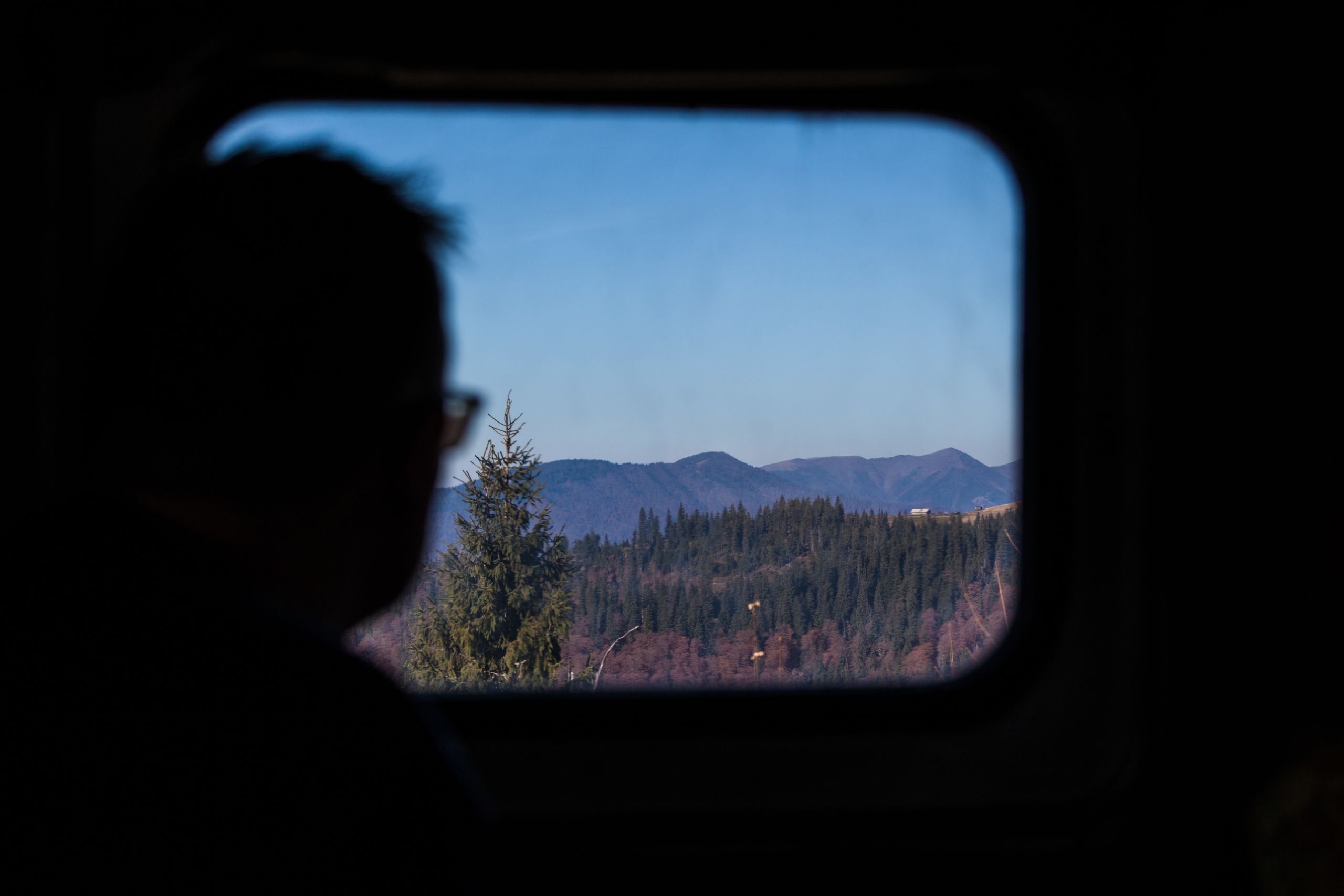
Once you start looking for it, you begin seeing it everywhere. On the back of that book you are reading. On your toilet roll or milk carton packaging. Prominently displayed on the online website of that company you bought your dining room set from. Somewhat bizarrely, you might even find it on the tags attached to the clothing you buy.(161) The cuddly tree-tick symbol of the FSC has become rather ubiquitous. Countless companies selling many thousands of different products have come to rely on it when asked about their green credentials. They brag about it to customers and investors. The wording varies, but the message is always the same. ‘We are the good guys’, they say, ‘and here’s the proof.’
Some of these companies are aware of FSC’s problems, but don’t want to be burdened with the cost of fixing them. Some are simply liars, who don’t much care whether its label can be trusted or not. Some are innocently ignorant. But all of them reach the same conclusion: job done. And that is a problem. Because FSC’s failings don’t end in Ukraine. Nor did they start there. Its failures are far broader, span the globe, have been well documented for years, and many of them are arguably much worse.
The warning signs were there very early on. In 2000, with the FSC at the tender age of seven, a group of frustrated activists from forest countries got together to share their experiences. The resulting 158-page report, published by the Rainforest Foundation in 2002, was utterly damning. ‘Trading in Credibility’ catalogued a raft of fundamental flaws in the system, illustrating them with case studies from around the globe.(162) Sadly, little changed as a result. Simon Counsell, who had been involved in the founding of FSC and as executive director of Rainforest Foundation oversaw the production of the report, was interviewed six years later. “The analysis in Trading in Credibility is, I think, as true now as it was then”, he said. “If anything, things have probably got worse.”(163)
“It is unclear whether certification has actually helped address the issue of tropical deforestation to any significant extent.”(164)
In 2006, Counsell helped set up FSC-Watch, a website which has continued to track FSC’s failings ever since. As FSC has grown, scandals have proliferated, many of them even more damning than those documented in 2002. Rampant illegal logging. Clearance of vast tracts of precious rainforest. Beatings and murder of local communities. You name it, FSC has stood accused of complicity in it.
What has changed since that 2002 report is that the steady stream of scandal and the failure of FSC to meaningfully reform have led more stakeholders to leave. In 2018 Greenpeace, another founding member of FSC, finally walked, saying FSC had become “a tool for timber extraction”.(165) Progressive industry people who had been working on the inside for years have also abandoned it. Scott Poynton, a timber sustainability expert who spent decades handholding firms to achieve FSC certification, left in 2011, calling certification “a money-making racket” which had proved “an abject failure.”(166)
Fraud and misleading claims
The final straw for Poynton happened during a visit to a wood processing factory in India, which like many other firms he had visited, had FSC certification but wasn’t actually using any FSC wood at all. This wasn’t fraud, but a fundamental flaw in FSC’s systems, its ‘chain of custody’ certificate. The internet is festooned with wood product manufacturers and retailers advertising these certificates and claiming them as proof of their sustainable credentials. This is deeply misleading, since all these documents prove is that a company is capable of keeping FSC wood separate from other wood. In fact, the vast majority of FSC certificate holders use no FSC-certified wood at all.(167) Exploiting understandable public ignorance and deeply confusing FSC rules, it is much cheaper not to bother.
FSC is feeding this misuse. It has repeatedly failed to make the simple changes to its rules which would prevent it.(168) Quite the contrary, its marketing for FSC Chain-of-Custody certification actually brags about how it can improve companies’ public image, allowing them to use the iconic FSC trademark in their marketing(169) – even though on its own, having FSC CoC is utterly meaningless. As Poynton explains, “a CoC system does not confer legality to logs. It does not confer sustainability to logs. It merely identifies logs.”(170)
FSC has a powerful incentive not to fix this problem: most of its money comes from these certificates. FSC earned over $29 million from the annual fees paid by certified firms in 2018, 78 per cent of its total income.(171) Four-fifths of this reportedly comes from chain-of-custody certificates(172), which now number over 41,000.(173) Almost a quarter of all these certificate-holders are now in China, which has seen by far the fastest growth of any country. More than 2200 new firms received FSC in 2019 – an average of six a day.(174a)(174b) Earthsight has estimated that these Chinese factories pumped almost $6 million into FSC last year.(175)
The problems with these companies are not limited to misleading marketing. They are also engaged in widespread fraud, systematically labelling uncertified wood – much of it of likely illegal origin – as coming from FSC-certified forests. In 2018, undercover journalists posing as potential buyers visited nine Chinese plywood factories of various sizes, all exporting to Europe. Seven of them openly admitted to putting FSC logos on shipments of uncertified wood. Company employees also alleged that European importers were aware of and even encouraged this kind of fraud.(176) Similar fraud has been found by undercover NGO investigators in other supply chains, even when they weren’t even looking for it. One Chinese flooring company marketing to the United States, for example, offered to put an FSC label on illegal wood flooring in exchange for a 10 per cent mark-up.(177)
These cases are almost certainly the tip of the proverbial iceberg. The FSC database lists over 6,500 Chinese firms whose FSC CoC certificates have expired or been terminated to date and a further 300 currently suspended.(178) But an absence of transparency in the FSC system means it is impossible to determine how many of these were kicked out as a result of fraud. Though FSC requires certifying bodies and the ASI which police them to publish public summaries of their audits of FSC forests, there is no such requirement for CoC certificates.
FSC has also failed to address this fraud, as a result of pressure from its industry members. Currently, FSC does not track volumes of wood as they pass from forest to shelf, making it impossible to systematically assess possible levels of fraud. To solve this, in 2013 it launched a new ‘Online Claims Platform’, where companies could report volumes of production, purchases and sales of FSC-certified wood, allowing these to be reconciled against one another and ensure no more FSC wood is sold than is harvested. FSC’s original intention was to make the system compulsory, but after a backlash from the industry lobby, they hurriedly backed down and made it voluntary. Faced with entering data likely to expose systematic fraud they didn’t particularly care about, most companies unsurprisingly chose not to bother. Due to low take-up, FSC announced the retirement of the platform in January 2019.(179) A new, easier – and still voluntary – transaction verification system was abandoned little more than a year later, again because few companies chose to use it.(180)
Illegal logging, human rights abuses and destruction of virgin forest
Even if the wood you buy from an ‘FSC supplier’ does in fact come from an FSC-certified forest, it doesn’t mean you are in the clear. There have been plentiful shocking cases of FSC-certified companies being involved in illegal logging, destruction of precious intact forests and human rights abuses.
Many such cases relate to the Congo Basin of Central Africa, whose countries are some of the most notoriously corrupt in the world. Before he became disillusioned with FSC, Scott Poynton’s firm was instrumental in achieving the first FSC certification of a logging company in Africa, CIB in Republic of Congo. In doing so, he worked closely with the country’s then forest minister, Henri Djombo. FSC became a big supporter of Djombo, describing him on its website as “a pleasant and open man” who had “dedicated his life to the service of forests and their sustainable management.”(181) At a glitzy photo op in 2015, he signed a cooperation agreement with FSC’s director Kim Carstensen.(182)
However, in 2019 evidence emerged of systematic illegality and high-level corruption by FSC’s good friend. Top executives of one of Congo’s largest logging firms told undercover EIA investigators that they had repeatedly bribed Djombo over a number of years with suitcases full of cash, in return for help avoiding sanctions for routinely violating forest laws and to illegally obtain logging rights.(183) After the EIA report was published, FSC’s glowing profile of Djombo quietly disappeared from its website.(184)
Meanwhile, studies had found increased illegal poaching of wildlife in areas FSC-certified CIB was opening up with industrial logging, and one of its log truck drivers was jailed for trafficking ivory.(185) In 2011, FSC auditors’ claims that the company’s logging was sustainable were made a mockery of after CIB admitted in a press interview that production of high-value species in its concessions had plummeted.(186) In 2016, one of the largest forest fires ever observed in the rainforests of Central Africa burned thousands of hectares of forest logged in the previous few years by another FSC-certified Congolese logging firm, IFO. A study found that the fires originated near old logging roads.(187)
Both CIB and IFO were certified by FSC despite the fact that they were involved in logging and degrading ‘intact forest landscapes’ (IFL): the last untouched tracts of forest left on the planet. Though such logging has long been known to be ecologically unsustainable, FSC has continued to allow firms logging such areas to remain certified. In 2017, an academic study found that degradation of IFL in the Congo Basin was far actually worse inside FSC-certified concessions than outside them.(188) Half a million hectares of IFL had been degraded by FSC-certified logging firms in the region up to that point.(189) Greenpeace, meanwhile, has published evidence of vast tracts of clear-cutting being permitted in intact forest landscapes within FSC-certified forests in Russia.(190) The advocacy organisation pushed for FSC to ban logging in IFL at its General Assembly in 2014, but the motion which resulted was watered down under pressure from timber industry members and was described by observers as “full of loopholes.”(191)
While FSC concessions in Republic of Congo were merrily degrading intact forest landscapes and overharvesting, those in neighbouring Democratic Republic of Congo (DRC) were engaged in far worse. In April 2011, local villagers protested the failure of DRC logging firm SIFORCO to respect earlier promises to build a school and clinic by blockading the company’s operations. The police the company called in to break up the protest went on a rampage. Several villagers are reported to have been beaten and arrested, six women including three minors raped, and property damaged and burned. One villager is reported to have died as a result of injuries sustained in the attack.(192) An independent investigation concluded that SIFORCO was indirectly responsible. It had paid the police and provided them with transport.(193) Another logging giant in DRC, SODEFOR, also received FSC ‘controlled wood’ certification in 2010 despite being involved in human rights violations as well as destruction of high conservation values. The certifier involved had failed to conduct even the most basic checks.(194)
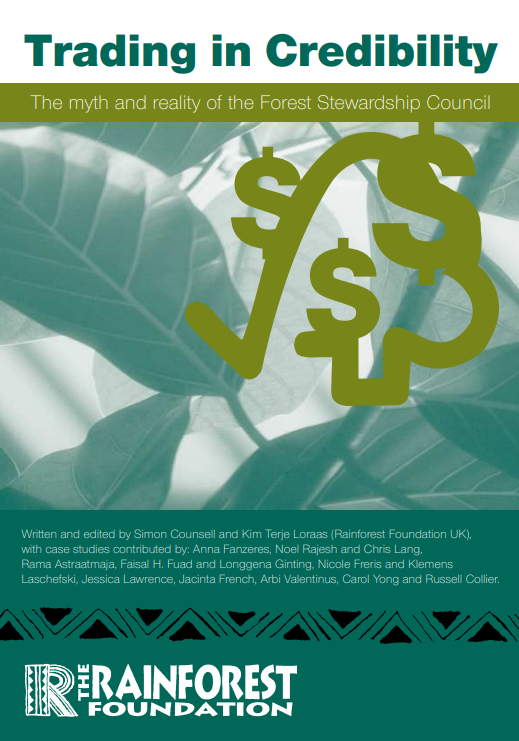
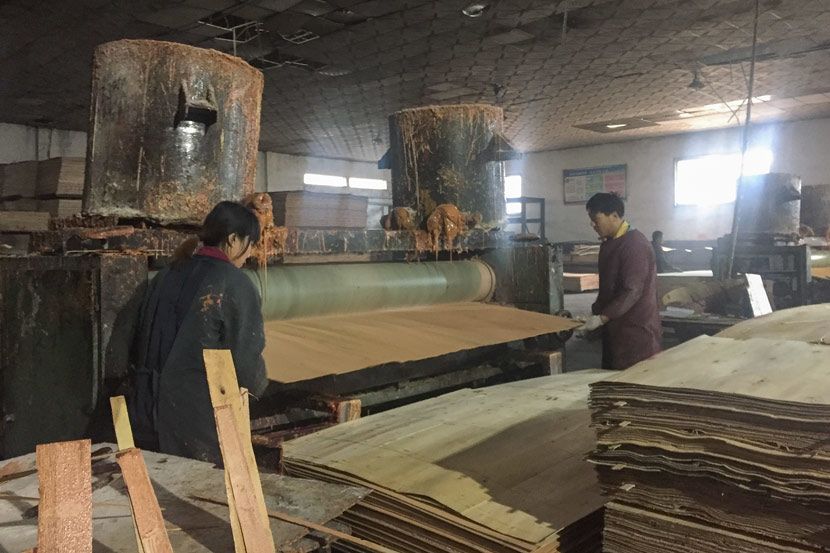
Seven out of nine Chinese plywood producers visited by undercover journalists in 2018 admitted to defrauding FSC © Shi Yi/Sixth Tone
Seven out of nine Chinese plywood producers visited by undercover journalists in 2018 admitted to defrauding FSC © Shi Yi/Sixth Tone
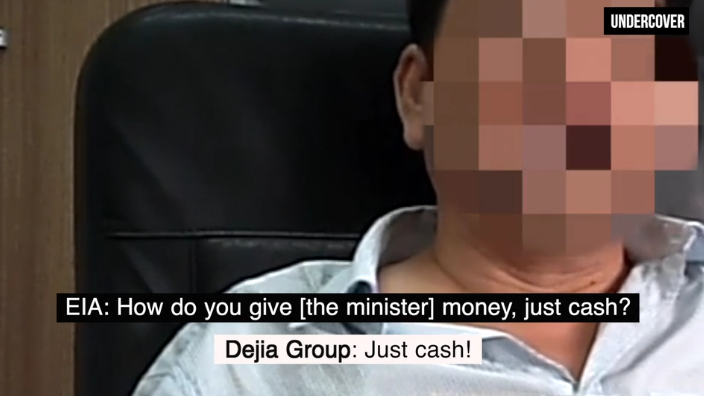
Undercover footage of Chinese logging executive in Republic of Congo alleging bribery of Minister Henri Djombo © EIA
Undercover footage of Chinese logging executive in Republic of Congo alleging bribery of Minister Henri Djombo © EIA
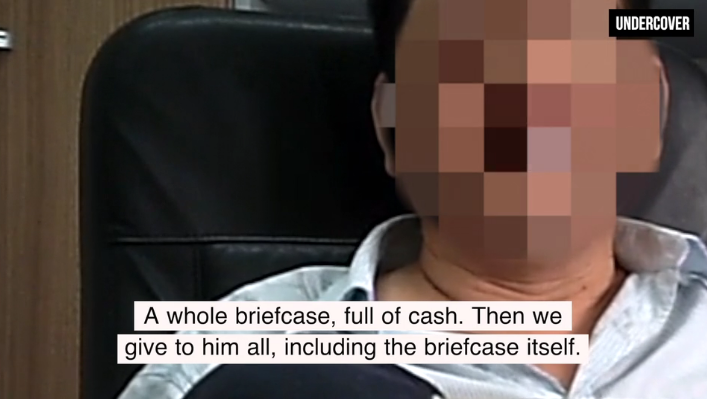
Undercover footage of Chinese logging executive in Republic of Congo alleging bribery of Minister Henri Djombo © EIA
Undercover footage of Chinese logging executive in Republic of Congo alleging bribery of Minister Henri Djombo © EIA

More recent cases from other parts of the world provide further evidence of FSC’s deep, structural flaws. FSC’s rules require it to cut all ties (‘disassociate’) with any firm found to have engaged in very serious offences, such as human rights abuses, illegal logging or clear-cutting large tracts of valuable forest. This is true even if those offences take place outside certified areas, but by a company related through ownership to the one with an FSC certificate. Recent years have seen multiple large firms ejected from FSC for breaching this and other rules, but none of them have been as a result of an FSC certifier or auditor’s own routine checks. In every case it has taken NGOs complaining about blatant and recurring evidence of illegality by certificate holders for the FSC to act.
In 2019, FSC disassociated from the Jari Group, one of the largest wood product exporters in Brazil, after an investigation by an independent panel determined that the firm had been involved in illegal logging and had violated the rights of traditional communities residing in its FSC-certified concession.(195) Accusations about the treatment of local communities had been raised with certifiers as far back as 2012, yet nothing was done at the time. The certificate was only suspended in 2015 after Greenpeace alerted FSC to the fact that an operation by Brazilian environmental police had found Jari had committed systematic fraud and timber laundering, as well as clearing jungle in a protected area to build a log port. The inspection panel report confirmed that Jari’s guilt was ‘beyond reasonable doubt’, but failed to explain how auditors had not identified and acted on the community rights violations earlier, or why their conclusions differed from those of FSC certifiers who had lifted the suspension of Jari’s certificate in 2017.
SGS, the Swiss FSC certifying body which mysteriously failed to spot the illegality at Velyky Bychkiv, has been the subject of repeated scandals over the years. In Indonesia, for example, SGS auditors overlooked plentiful publicly available information that a firm it was certifying was involved in clearcutting vast tracts of precious tropical forest. By the time FSC was forced to investigate as a result of a formal complaint submitted by Mighty Earth, an NGO, the company – Korindo – had destroyed 30,000ha – an area five times the size of Manhattan.(196a)(196b)
While the Korindo case involved the company’s wider practices, plenty of other examples of serious wrongdoing going unnoticed involve the FSC certified operations themselves. SGS was also found to have mysteriously overlooked a litany of serious issues in its certification of a logging firm in Guyana, for example. In that instance, all the failures related to the certified area.(197) More recently, as outlined earlier in this report, in 2015, explosive evidence emerged of widespread illegal logging and purchasing of illegal timber by one of Europe’s largest sawmilling firms, Austrian-owned Holzindustrie Schweighofer. The company stood accused of being the main culprit behind rampant illegal and destructive logging in Romania, home to Europe’s largest remaining tracts of intact forest. Top officials were caught on camera in a sting operation by NGO the Environmental Investigation Agency, encouraging a prospective supplier to break the law in order to deliver them more wood. Inspections by Romanian officials found 165,000 cubic metres of illegal timber which had been supplied to Schweighofer from just one Romanian county.(198)
Forced to investigate after WWF submitted a formal complaint, FSC hired an independent inspection panel which confirmed that Schweighofer had sourced from national parks, destroyed high conservation value forests and traded in illegal timber. Though not all the timber involved was FSC-certified, plenty was. The investigation found that some of Schweighofer’s own FSC-certified Romanian forests had been the subject of corrupt, fraudulent land transactions and that the timber coming from them must therefore be considered illegal.(199) Relevant court action had been ongoing for years before these forests were certified. In one case, the individuals involved had even been found guilty and jailed, yet the forest had remained FSC approved. Schweighofer’s owner had even admitted some years earlier that illegal logging was as common in FSC-certified forests as uncertified ones. This didn’t prevent his company from making “false and grossly misleading” statements implying that its FSC chain-of-custody certification somehow applied to all of its timber purchases, including the uncertified ones.(200)
Rather than investigating how its auditors managed to overlook these violations year after year, expressing contrition at cases like these, or making a real effort to learn from them, FSC bizarrely posits them as proof that its systems are working. In a section on how it goes about ‘ensuring integrity’ in its 2018 annual report, FSC claims that kicking Jari, Korindo and Schweighofer out proves how effective it is at identifying and rooting out wrongdoers.(201) But they were all actually exposed by outsiders. In fact, in every case the FSC’s own systems had signally failed to pick up blatant warning signs. It also took years for meaningful action to be taken, and FSC has bent over backwards to let the companies back in as soon as possible, claiming that the policy of association is not meant to be ‘punitive’.(202)
Even where certified companies are proven to have engaged in serious wrongdoing they have found it all too easy to hoodwink FSC and get back inside the tent. Indonesian pulp and paper giant Asia Pulp and Paper (APP) was kicked out in 2007 after NGOs exposed its involvement in clearing vast tracts of tropical forest, much of it illegally. Naively assuming that the company could nevertheless be trusted, FSC quickly began talks to readmit the firm; it was only when a journalist began digging some years into those talks that it was revealed that during the entire time APP had continued to secretly clear tropical forest through undeclared subsidiaries. Despite APP being blacklisted, one of its declared subsidiaries also managed to obtain FSC Chain-of-Custody certification and spend seven years selling FSC-certified diaries to a leading UK stationary brand before being exposed by environmental activists.(203)
In yet another damning example revealed almost accidentally during research for this report, Chinese flooring exporter Dalian Xingjia still has an FSC Chain-of-Custody certificate(204), despite being exposed in 2013 for handling illegal Russian oak cut in precious Siberian tiger habitat. Bosses from its parent company had bragged on hidden camera about their illegal logging, laundering of illegal wood and bribery of Russian officials.(205) The case led to multimillion-dollar fines for its US customer, leading flooring firm Lumber Liquidators.(206)
In 2015, authorities in Peru and the US launched a joint crackdown on the notorious timber carrier Yacu Kallpa, which they suspected of plying illegal Peruvian timber to the US. A staggering 91 per cent of all timber found on board during the bust – one of the biggest in Latin American history – was subsequently found to be illegal(207). By 2017, the US Trade Representative considered the evidence against one of the Peruvian companies whose timber was on board – Inversiones La Oroza – strong enough to invoke forest governance provisions of the US-Peru trade deal for the first time, banning the firm from exporting timber to the US. The USTR’s investigation confirmed the previous findings of NGOs, concluding that La Oroza’s exports “were not compliant with Peru’s law, regulations, and other measures on harvest and trade of timber products.”(208) In spite of all this, Inversiones still has a valid FSC chain-of-custody certificate and is allowed to sell wood with the FSC logo.(209)
“FSC certification is neither a guarantee of legality, nor of sustainability. Its main purpose now is to help market timber and to prop up companies’ value, rather than protecting forests.”
The conflict of interest at the heart of FSC
German journalists investigating FSC for a damning documentary released in 2018 visited Republic of Congo, where one source involved in certification there told them: “I wanted to withdraw the certificate of a certain company, but when I met with the boss of that company, he got so angry that I left the hotel immediately. That night I feared for my life. When I told my boss about the meeting he also got angry. He said I was no longer to inspect that forest concession. The timber companies pay money to keep their certification. We timber checkers are independent in theory, but not really. Because in practice, we go to a site, do a check, and afterward nothing changes. The companies go back to cutting down many more trees than they are allowed to.”(210)
This is the reality of FSC certification at the coal face. Certifiers are competing for business from the companies they certify, leading to a race to the bottom in standards. Staff working for certifiers who follow the rules too strictly get harassed or sacked; certification companies which do so go out of business. What NGOs have seen in Ukraine in this regard is par for the course worldwide. The likes of Counsell and Poynton have been pointing this out for years; tackling it was one of the main recommendations of 2002’s Trading in Credibility report. As Poynton said in 2015, “there really is no third party, independent auditing in certification, independent meaning no direct economic relationship between certifying body and company. Rather, certification is permeated with deep conflicts of interest.”(211)
Practical suggestions have been put forward for changing FSC’s systems to remove this fundamental conflict of interest, but they have been ignored, as the organisation ploughs forward, appearing intent only on expansion at almost any cost. When confronted by those same German documentary-makers about conflicts of interest, FSC’s only response was to stress the role of ASI in the system, the body tasked with ‘watching the watchdogs’: keeping the certifying bodies in line.(212) But ASI has very rarely exposed serious wrongdoing where it wasn’t alerted to it first by outsiders. It is also hardly independent itself, given that it is 100 per cent owned by FSC, and an important source of its funding(213), leading to yet another conflict of interest. The results of its audits of CoC certificates or certifier head offices also remain secret.
“There really is no third party, independent auditing in certification. It is permeated with deep conflicts of interest.”
Undermining regulation
FSC’s problems matter, increasingly so. The timber industry remains a major driver of deforestation and forest degradation worldwide, which is in turn responsible for 10 per cent of climate-changing emissions.(214) While most attention has now rightly shifted to the role of large-scale agriculture in driving the clear-felling of forests, degradation of forests through logging is almost invariably the first step down the road which ultimately leads to clearance. And even supposedly sustainable ‘selective’ logging can dramatically decrease carbon storage and result in biodiversity loss on a par with conversion.(215a)(215b) Where such logging is illegal or occurs in high value forests, as in the examples above, much more so.
There is increasing recognition across the political spectrum that to address the imminent threat of climate catastrophe, we need to reduce consumption. All serious environmental experts encourage a policy of ‘reduce, re-use, recycle’. Yet FSC remains stuck in an outdated mindset, happy to lobby for expansion of the logging business (as long as this expansion is certified), rather than attempting to temper this industry’s voracious appetite for new sources of timber. And it isn’t just coming from its industry members. In 2018, FSC board member and former chair Tony Sebastian was quoted in the press encouraging people to buy more virgin paper.(216) Sebastian is one of the environmental movement representatives on the FSC board. He also advocates dropping FSC’s ban on certifying wood from monoculture plantations which displaced natural forest since 1994. This is necessary to enable the notorious multinational logging giants in his native Sarawak, Malaysia, to get certification, despite having been responsible for perhaps the worst and fastest case of tropical forest loss the world has ever seen.(217)
Rather than helping forests, FSC increasingly threatens to harm them, by absorbing pressure from consumers and progressive companies, and reducing the impact of timber legality laws put in place in major consuming nations in recent years. As the investigative NGO EIA has observed, from bitter, repeated experience: “Unfortunately, in too many parts of the world, organisations such as the FSC are merely certifying the status quo. This often undermines any meaningful reform efforts to truly protect the world’s forests, by instead offering governments and companies the false appearance of good forest management and sourcing practices.”(218)
A particular bugbear for EIA is how in terms of legality, FSC’s requirements are now actually lower than those being demanded by law in major consuming markets such as the EU and US. These laws demand ‘due diligence’ from wood importers, of sufficient rigour in the EU to reduce the risk of the wood being illegal to a ‘negligible’ level.(219) But doing this requires a level of traceability, knowledge of supplier involvement in illegality and transparency that FSC’s systems simply don’t provide. FSC doesn’t require the publication of maps of the concessions it certifies, and makes no effort to track the timber which comes from them, though the technologies to do so are fairly cheap and readily available.(220)
FSC’s systems don’t reduce risk to a negligible level in theory, let alone in practice. And traceability isn’t the only reason. While governments and consumers increasingly follow the ‘precautionary principle’, FSC takes the opposite stance. The disassociation cases above are the rare exceptions. In the 27 years of the FSC’s existence, having issued 42,388 firms with Chain of Custody and a further 1,726 with ‘forest management’ certificates(221), it has opened investigations into a grand total of 13 companies(222) – less than 0.02 per cent of the total. In Ukraine, it has refused to take action when FSC-certified state logging firms stand formally accused by authorities of serious corruption and illegal logging, claiming that it can only act once a guilty verdict has been reached.(223) Its much-heralded Policy for Association also includes an onerous level of proof. Even if the ‘preponderance of evidence’ is that an FSC-certified company is guilty of heinous crimes like massive illegal logging and rights abuses, they cannot and will not disassociate.(224)
Laws like the EU Timber Regulation (EUTR) and the US Lacey Act have the potential to transform wood markets worldwide, but this potential is being increasingly undermined by FSC. Though its systems don’t actually ensure compliance, most companies and enforcement officials treat them as if they do. These laws have driven a massive surge in FSC certification. The area of FSC-certified forest in Ukraine, for example, doubled in the five years after the EUTR took effect.(225) Pretty much every firm importing tropical wood into the US and Europe now proudly advertises its FSC certificate, even if most of its wood isn’t certified. Nearly every case of breaches of these laws uncovered by NGOs in recent years has involved FSC-certified wood or FSC-certified companies. Driven in part by these laws, FSC now encompasses around a quarter of the world’s industrial wood production(226a)(226b), and likely a much higher proportion of the wood imported and sold in the US and Europe.
FSC is also taking the place of meaningful reforms in forest countries. The EU has been working for years with tropical timber producer countries to implement key improvements to forest governance, like increasing transparency, allowing civil society a role in decision-making, clarifying laws and implementing technology to trace wood to its source. The EUTR was meant to help encourage these countries to play ball, by blocking access to the lucrative EU market to those who don’t. Yet its efforts are stalling in many countries, and FSC is partly to blame.
In Gabon, where the EU has been trying to implement a relevant bilateral agreement for a decade, the government instead announced in 2018 that it would be demanding all its logging concessions to be FSC certified by 2022. Neighbouring Republic of Congo, which the EU has also been working with, is rumoured to be considering following suit. FSC said it wasn’t consulted by the Gabonese about the decision, but that it ‘strongly supported the ambition shown by the government’.(227) The entire forest estate in Belarus – an important Ikea supplier where high-level corruption “occurs with impunity” and bribes are common practice(228) – is already FSC-certified.(229)
Rather than address this problem, both FSC and Ikea are lobbying for changes which would make it worse. They are pushing for FSC-certified wood to be given a ‘green lane’ under the EUTR, effectively making it exempt, either in principle or in practice.(230a)(230b)

Korindo clearing © Mighty Earth
Korindo clearing © Mighty Earth
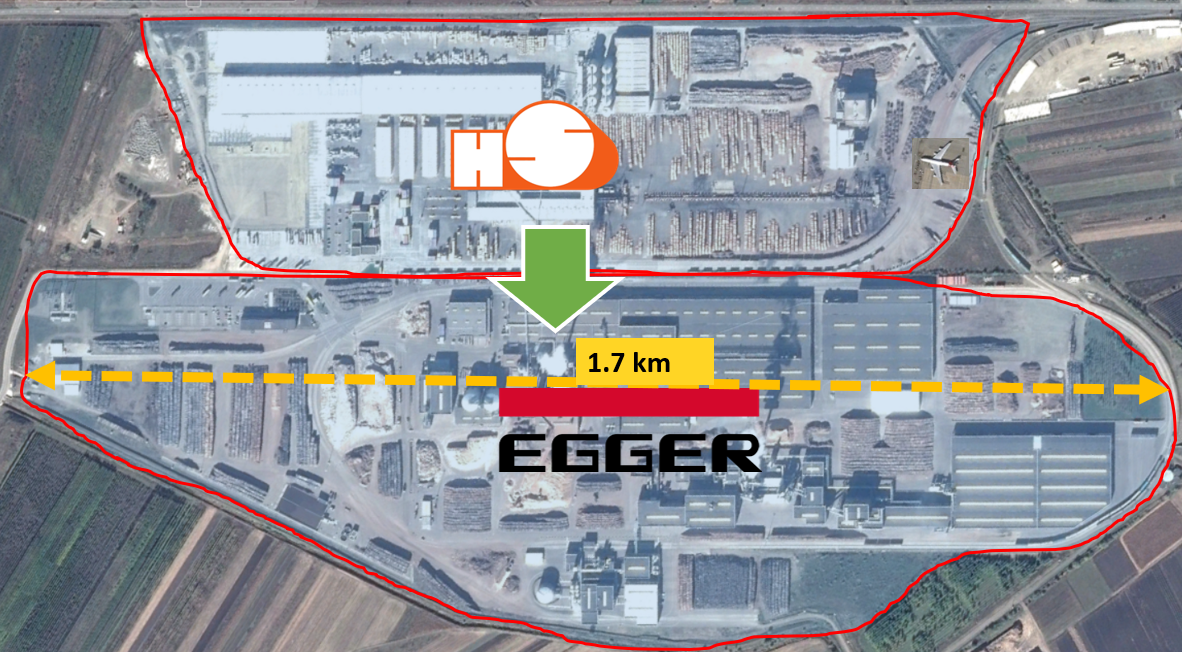
This vast mill (see overlaid jumbo jet for scale) close to the border in Romania is the largest importer of Ukrainian wood in the world. Schweighofer, which runs the northern half, was sourcing large volumes of illegal wood from Romania and Ukraine at a time that it was also supplying Ikea. Egger next door continues to import highrisk FSC certified wood from Ukraine, much of which ends up in Ikea products
This vast mill (see overlaid jumbo jet for scale) close to the border in Romania is the largest importer of Ukrainian wood in the world. Schweighofer, which runs the northern half, was sourcing large volumes of illegal wood from Romania and Ukraine at a time that it was also supplying Ikea. Egger next door continues to import highrisk FSC certified wood from Ukraine, much of which ends up in Ikea products
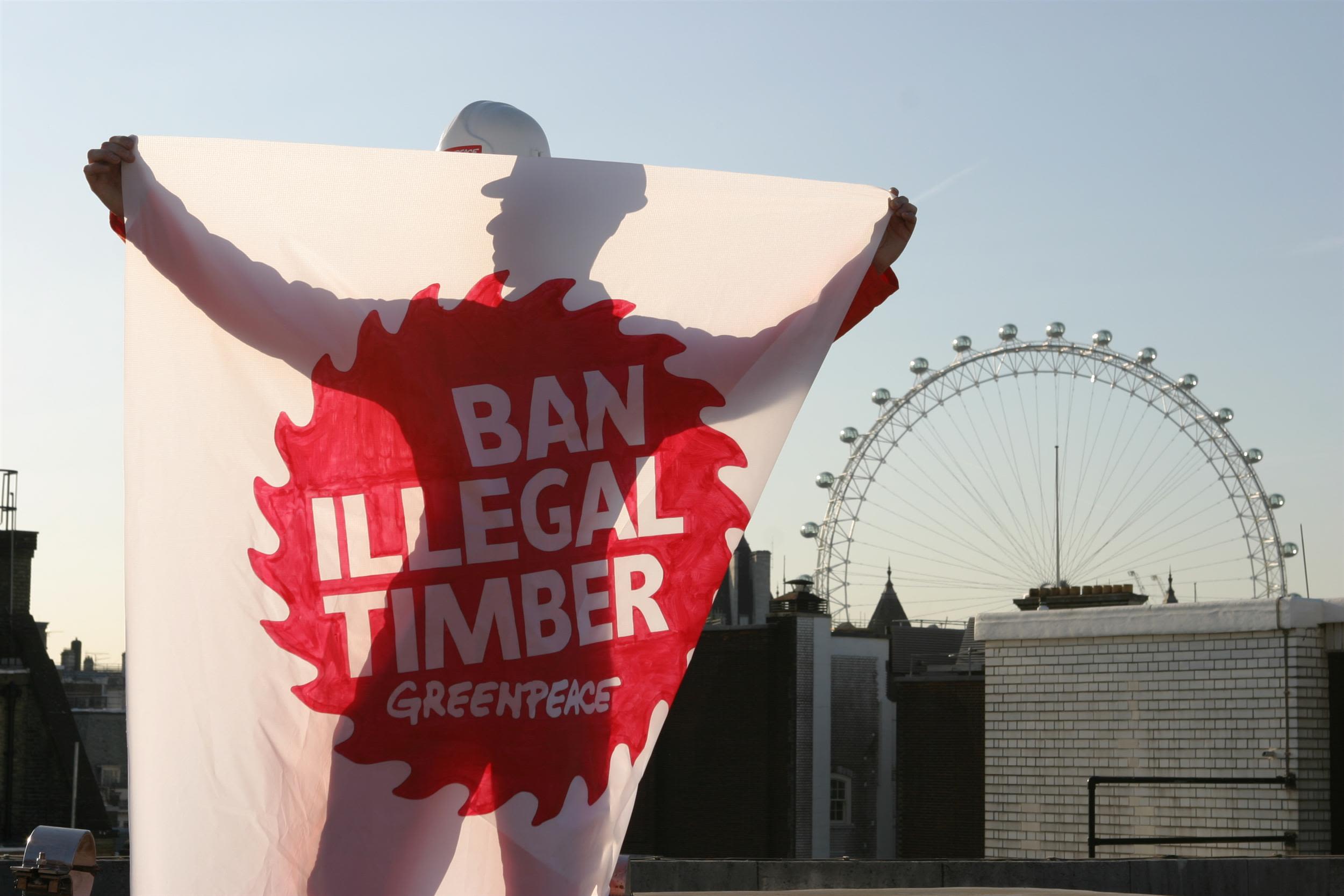
Greenpeace protest in London calling for the EU to ban illegal timber, 2006 © Sion Touhig/Greenpeace
Greenpeace protest in London calling for the EU to ban illegal timber, 2006 © Sion Touhig/Greenpeace
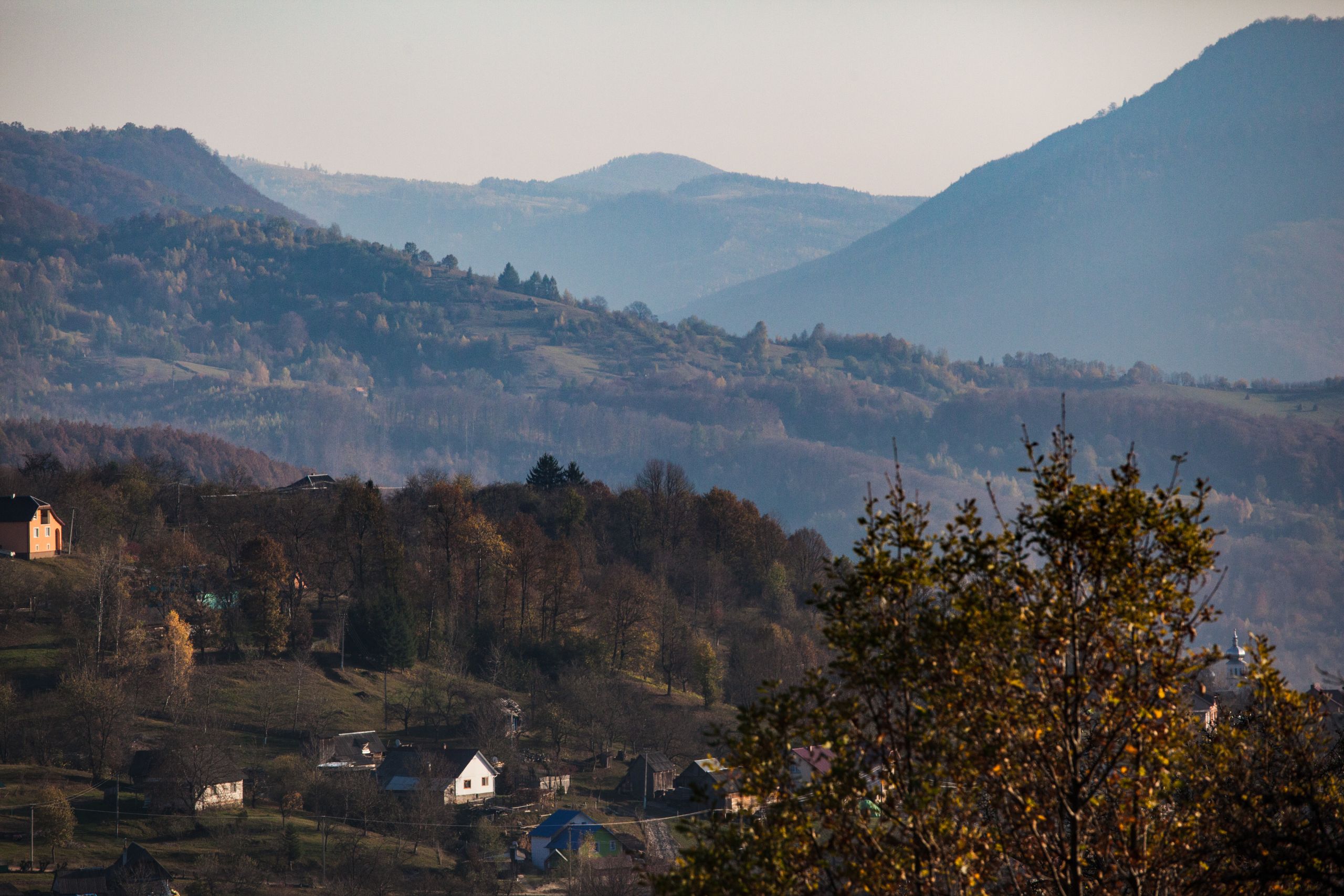
View of Velyky Bychkiv © Earthsight
View of Velyky Bychkiv © Earthsight
Part VI: Conclusions and Recommendations

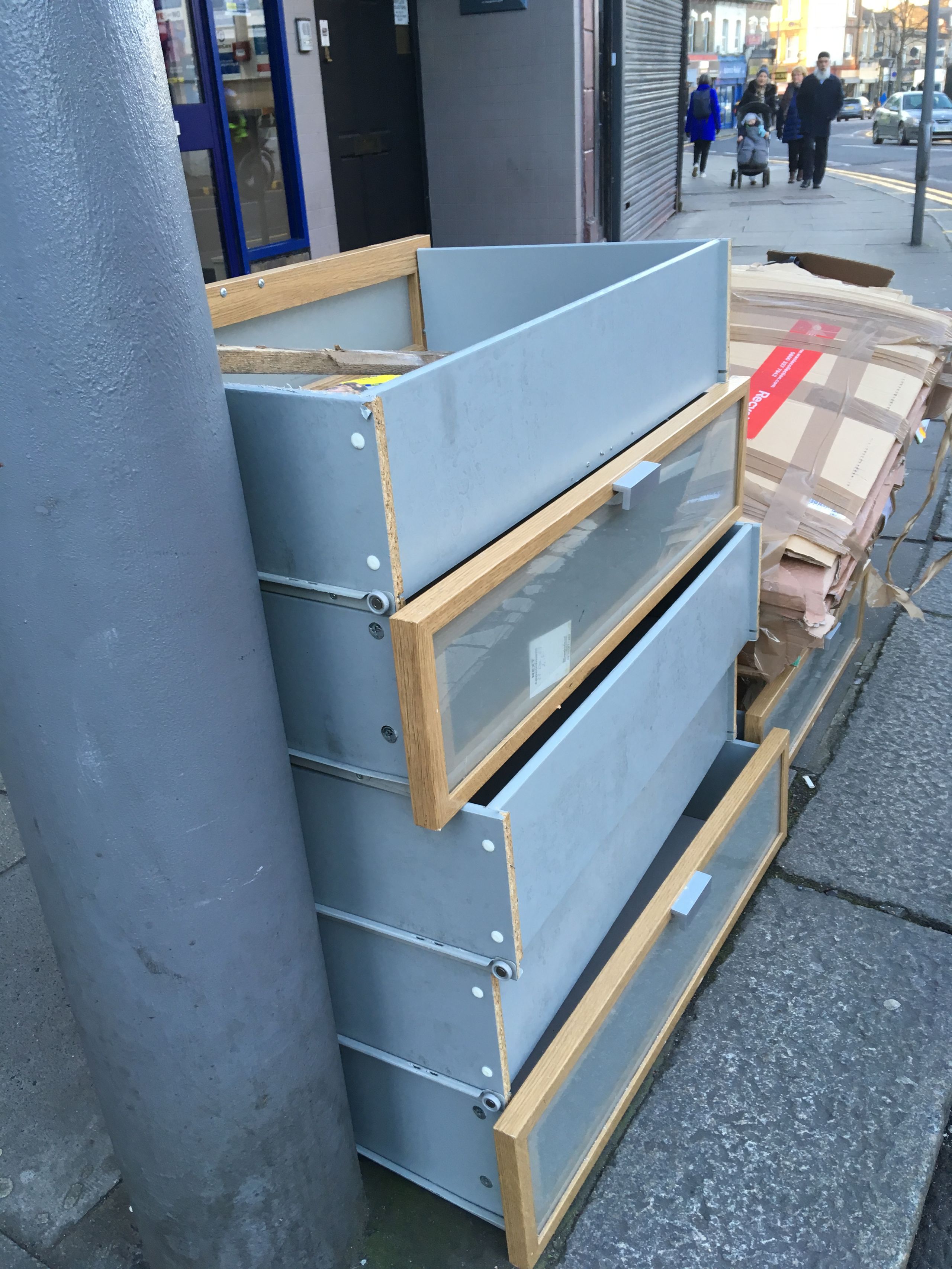
Fly-tipped Ikea wooden furniture on the streets of London, February 2020 © Earthsight
Fly-tipped Ikea wooden furniture on the streets of London, February 2020 © Earthsight
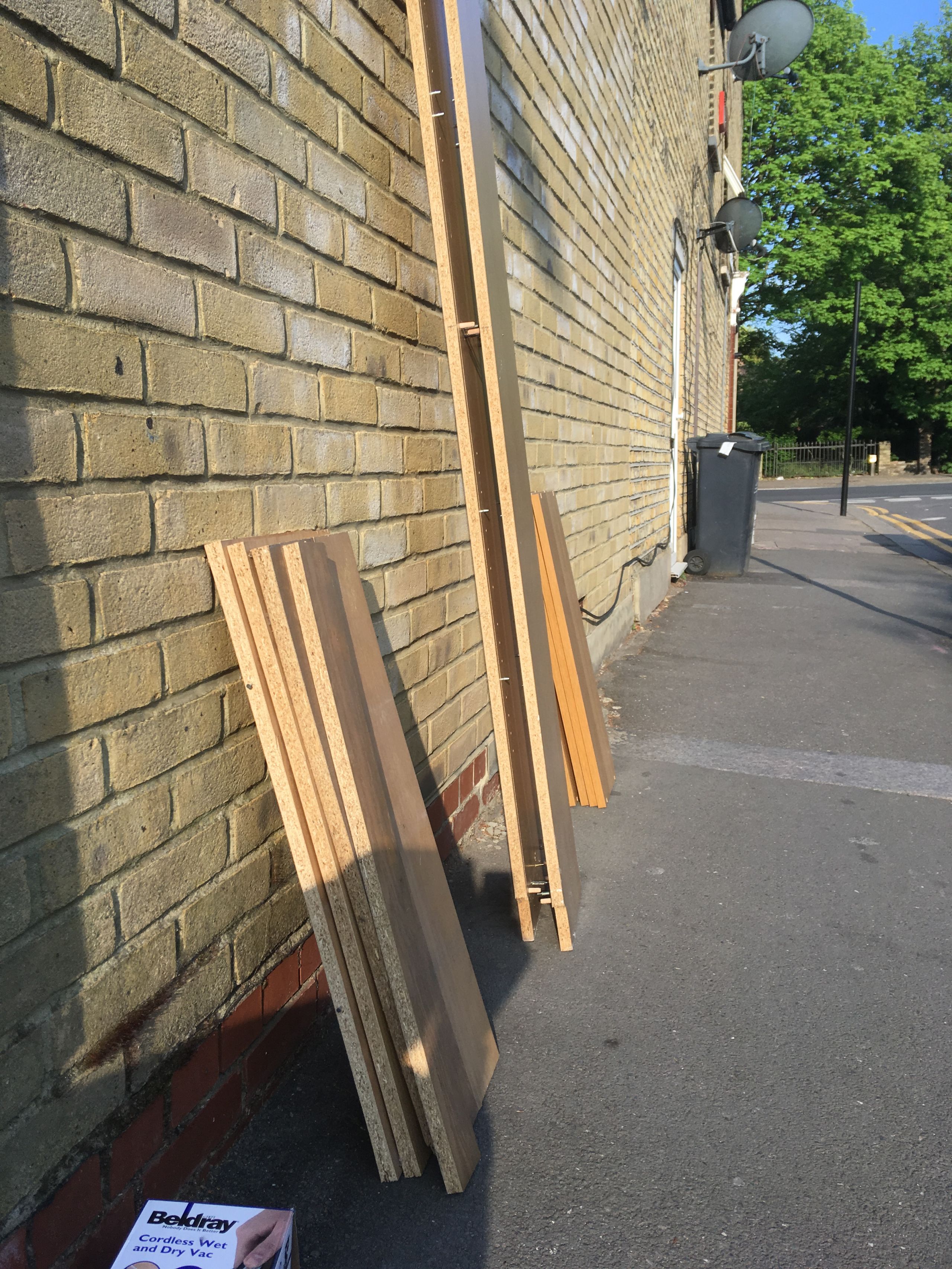
Fly-tipped Ikea wooden furniture on the streets of London, April 2020 © Earthsight
Fly-tipped Ikea wooden furniture on the streets of London, April 2020 © Earthsight
How can the best be this bad?
The main actors profiled in this report are far from the worst in their respective fields. IKEA has a more progressive wood procurement policy than any of its competitors. It has funded nature protection projects in Romania, Ukraine and Russia, including the production of the first maps of old-growth and virgin forests. It has even financed NGOs to monitor illicit logging.(231)
Other green wood labels have poorer standards, less transparency and more timber industry-influence than FSC. Its biggest competitor, PEFC, is almost comedic in its inadequacy. French TV journalists managed to get certificates from it for a car park and a nuclear power station.(232) Earthsight found it bizarrely claiming that charcoal made from ancient trees being bulldozed in jaguar habitat in Paraguay counted as ‘recycled’.(233)
Even Velyky Bychkiv is probably better managed and less egregious in its law-breaking than plenty of other state forestry enterprises in the Ukrainian Carpathians. Ukraine, meanwhile, has a vibrant civil society, a ‘woke’ population, truly free elections and transparency in many areas of government which would put plenty of rich Western countries to shame. The situation in other big FSC-certified Ikea supplier countries like Russia and Belarus – which have none of these things – is probably worse. It is just harder to prove.
But if organisations like IKEA and FSC are the best of their kind yet remain this bad, something fundamental clearly needs to change.
The consequences of cheapness
It has been said that Ikea’s real genius hasn’t been its Scandinavian chic or clever flat-pack designs. Its genius has been in making furniture disposable.(234) Ikea’s ‘fast furniture’ business model is contributing to a throwaway culture which can only ultimately result in greater and greater pressure from consumers on the world’s forests (see section on Fast Furniture). Earthsight has discovered that Americans, for example, are throwing away 40 per cent more furniture per capita today than when Ikea arrived on their shores. Almost none of this is recycled.
Earthsight’s investigation shows that aside from encouraging excessive consumption and waste, Ikea’s relentless pressure on prices has other consequences. Like many brand behemoths in the retail sector, Ikea uses its near-monopolistic position to drive down costs by making its vast pool of contractors compete for its business. It makes sustainability demands on them too, but in reality price always comes first. Hoodwinking Ikea on sustainability might be risky for a supplier. But refusing to meet their price demands is practically suicidal. When Irina Matsepura, boss of VGSM, was urged by her accountant to charge IKEA more, she told him: “the money [Ikea owner Kamprad] manages is an amount far greater than the budget of Ukraine. When he offers a job, you either agree or you don’t.”(235) Forced to choose or face bankruptcy, compromising on the environment is a no-brainer.
To be a truly good citizen, Ikea would need to change its business model, increase its prices, and sacrifice profits and growth in order to do so. Instead, Ikea’s latest ruse is a pie-in-the-sky program to use returned goods as raw material for new ones. But this has failed to make the tiniest dent in its accelerating demand for fresh trees. It is also gradually increasing its use of recycled wood, but its consumption of virgin wood continues to rise (see Fast Furniture section). Such steps also do not address the climate impacts of the re-processing. Far from seeking to move away from it, Ikea is doubling down on fast furniture. Its new CEO’s declared intention is to pursue cheapness like never before.(236)
The growth and environmental consequences of ‘fast furniture’
In 1996, IKEA called on the British public to ‘chuck out your chintz’. In a memorable TV advert, people were shown flooding out of their houses, dumping their furniture in a skip and heading off to IKEA’s sunlit uplands for furnishings new. Given the growth of environmental consciousness since, it is not a marketing strategy the company would be likely to use today. Yet it reflects the consequences of IKEA’s pioneering “fast furniture” model as much now as it did back then.
Any city dweller in Europe or North America will by now be familiar with the sight of bedraggled IKEA furniture fly-tipped on street corners (see photos above). As commentators have noted, IKEA’s real genius has been in making furniture disposable.(237) As the company has grown, so has furniture waste (see graph below). In 2016, US consumers alone threw out more than 11 million tonnes of furniture, nearly double what was binned a quarter century earlier, when IKEA was just taking off.(238) Only part of this can be explained by a growing population: measured per capita, furniture waste is still up almost 40 per cent.(239) Eighty per cent of this furniture goes to landfill; most of the rest is burned.(240) Brits, on the other hand, are now reckoned to be discarding a shocking 22 million pieces of furniture every year.(241) One study found that almost half of this furniture was either undamaged or easily repairable.(242) More than 70 per cent of the furniture being chucked is made of wood.(243) Some studies indicate that landfills in the UK could soon overflow as a result.(244) This waste matters. A new chest of drawers has a carbon footprint 16 times higher than its second-hand equivalent.(245)
IKEA has recognised that there is a problem. In the last couple of years, it has piloted schemes for renting out furniture and for exchanging and then refurbishing or recycling used items.(246) But take up has been poor.(247) It is also increasing the use of recycled wood, though this still represents less than a fifth of its consumption(248), and its growth is failing to keep up with the growth in Ikea’s total wood use.(249) Its overall business model of bargain basement prices and relentless growth continues to encourage a throwaway culture. Its most iconic products, including the Terje folding chair featured in this report, and the Poang armchair, also once made in Ukraine, keep getting cheaper and cheaper and more and more disposable.(250) In February 2020, IKEA’s new CEO Jon Abrahamsson Ring announced his desire to broaden its range of the very cheapest items(251) – the ones most likely to be binned.
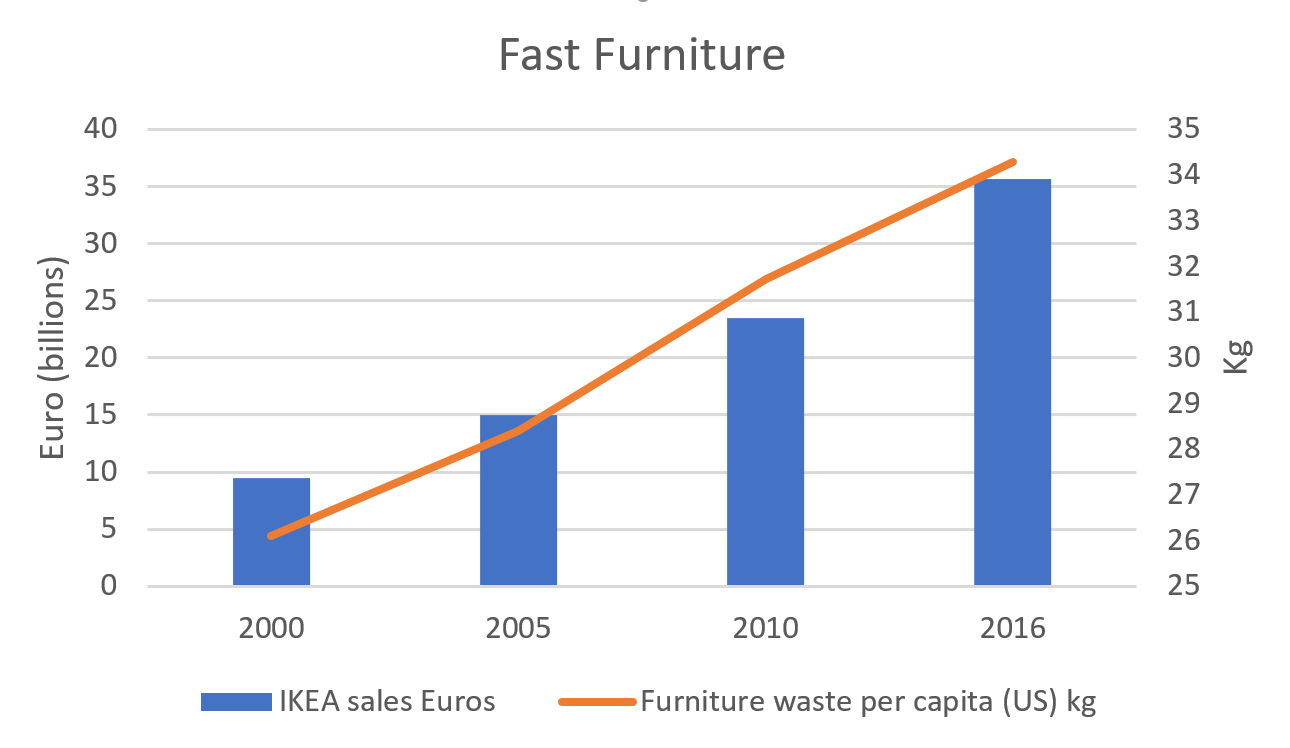
As Ikea's sales have grown, so has furniture waste. Sources: US furniture waste figures in tonnes from US Environmental Protection Agency, converted into per capita figures using World Bank population data for relevant years; IKEA sales revenues from IKEA reports
As Ikea's sales have grown, so has furniture waste. Sources: US furniture waste figures in tonnes from US Environmental Protection Agency, converted into per capita figures using World Bank population data for relevant years; IKEA sales revenues from IKEA reports
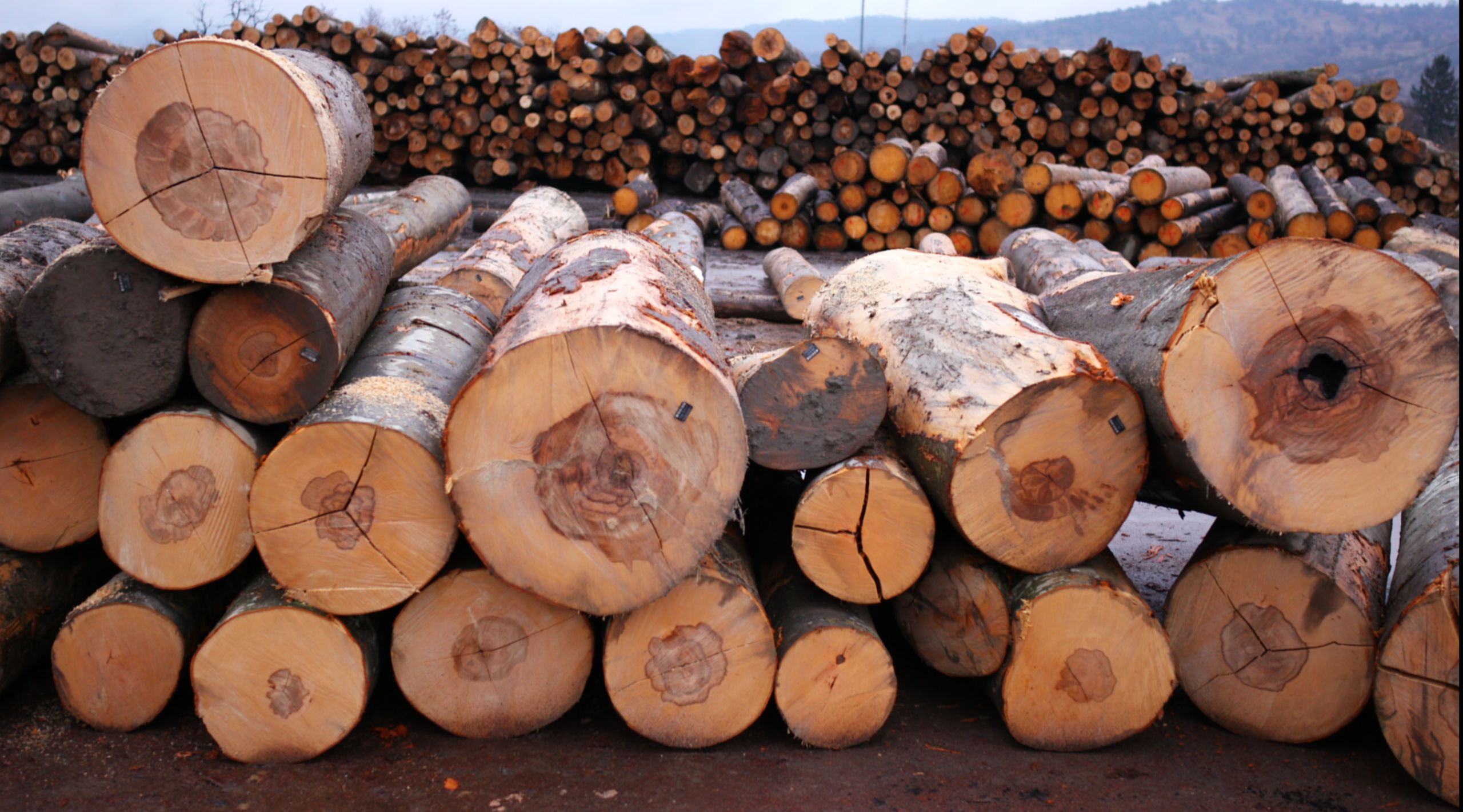
Logs waiting to be processed at VGSM © Jeremy Bristow
Logs waiting to be processed at VGSM © Jeremy Bristow
The least Ikea should do
Short of radically changing its business model, there is still a lot more Ikea could and should do to address the problems highlighted in this report. But it still needs to think big if it is to get to the root of them.
Ikea’s stated goal is for its business to be ‘circular’ by 2030. But while this includes a commitment to make its products recyclable, it does not include a commitment to use only recycled materials to make them. Instead, Ikea’s policy assumes that FSC-certified wood is ‘renewable’, and therefore already in line with its goal.(252) Once it reaches its aim of 100 per cent FSC virgin wood, as it is likely to by the end of 2020, it will consider its job done. But this is a false assumption. To be truly circular, Ikea must increase its ambition, seeking to eliminate the use of virgin wood altogether, starting with that originating from natural forests.
So long as it continues to use virgin wood, Ikea must do more to minimise the impact of this on people and the planet.
The implications for Ikea in this report are broad, and so the solutions must be too. Ikea cannot solve its problem by simply dropping VGSM, Plimob or Velyky Bychkiv as suppliers, or no longer buying Ukrainian wood. Arguably they shouldn’t even do that, at least in the medium term. These companies are important employers in one of the poorest areas of Europe. They are also arguably victims as much as villains in this story. Ukraine needs to be able to sell timber and collect taxes on it to fund its development. The case studies in this report are not bad apples in an otherwise good bunch: they are examples of more systemic problems almost certainly repeated many times in many other places. Ikea consumes almost ten times as much wood from Russia as it does from Ukraine and relies on the same flawed FSC systems to ensure those purchases are legitimate. It buys five times as much from Belarus.(253)
Ikea cannot currently rely on FSC to mitigate the impacts of its business on forests. It cannot even rely on FSC to ensure its wood was legally sourced, or avoid its money reaching the pockets of corrupt officials. But it also cannot solve its problem by moving to another green label. Environmentalists are united in their disdain for FSC’s competitors like PEFC and SFI, which they dismiss as greenwash.(254) Indeed, the available evidence indicates that were they to allow wood from these other schemes then the risk of driving the worst abuses would increase.
Ikea must instead act swiftly to clean up its supply chains, using stronger standards and more rigorous and truly independent audits of its own, particularly in high risk countries. But it can have an even greater impact by persuading FSC to do better itself.
Reforming FSC
Though some of the supposedly environmentalist members remaining in the FSC are also complicit (see section: The Revolving Door, regarding WWF), the main reason for its abject failures is pressure from the industry lobby. Before its departure in 2018, Greenpeace bemoaned what it described as the ‘red sea’ of voting cards waved en masse by the industry members at FSC conferences, blocking any attempt at meaningful reform.(255)
Civil society groups have proved unable to make FSC change, either from the inside or from the outside. If it is to modernise and meet the challenges of the 21st century, the timber industry it serves needs to make it do so. And no-one has more influence than Ikea, by far the world’s largest consumer of FSC-certified wood, and one of its biggest supporters and donors.
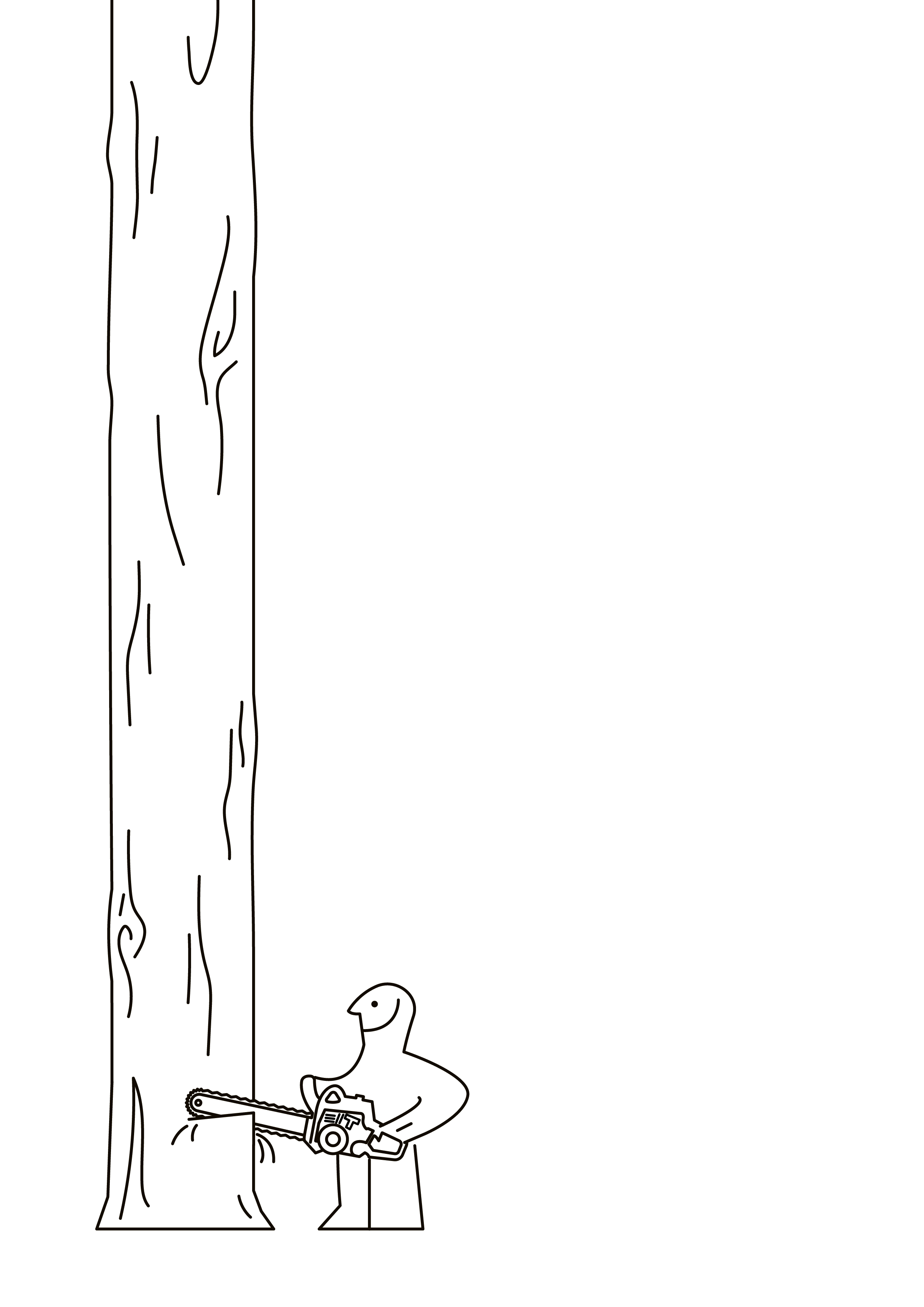
The revolving door: How WWF’s support for FSC is damaging the planet
Between the world’s largest wood buyer and the world’s largest green label for timber lies another behemoth. WWF, the world’s largest conservation organisation, helped found FSC and is its most vocal supporter. It is also a long-time partner of Ikea. The departure of other big-name environmental groups like Greenpeace has failed to trigger meaningful change at FSC, in large part because it has the unwavering support of WWF. As long as WWF backs it, FSC will still have the credibility it needs to remain relevant. As long as Ikea and other giant wood buyers back it, it will still have the money.
The three organisations have become closely connected, and not just in terms of philosophy. Their staff are also often one and the same. Steve Howard, the man who as IKEA’s sustainability chief was the architect of its FSC-focused wood purchasing policy, was previously employed by WWF. While there he was in charge of lending its panda logo to timber companies in exchange for promises to improve their environmental practices(256) – promises they all too often failed to keep.(257) He also previously chaired FSC’s operation in the UK.(258) Kim Carstensen, the current chief of FSC, previously spent over 20 years at WWF.(259)
Same people, same out-moded philosophy, same failure to accept change. This has real consequences. If WWF hadn’t so vociferously pushed a flawed green label as a solution, then Ikea might not now have illegal wood on its hands.
FSC is a membership organisation, one member one vote, and WWF’s influence – like Ikea’s – is theoretically limited. But soft power is far more important. If WWF were to walk, it would destroy what is left of FSC’s credibility. The whole house of red cards might then collapse. And that is not something any of its industry members want. It is just possible they will accept real change to avoid it.
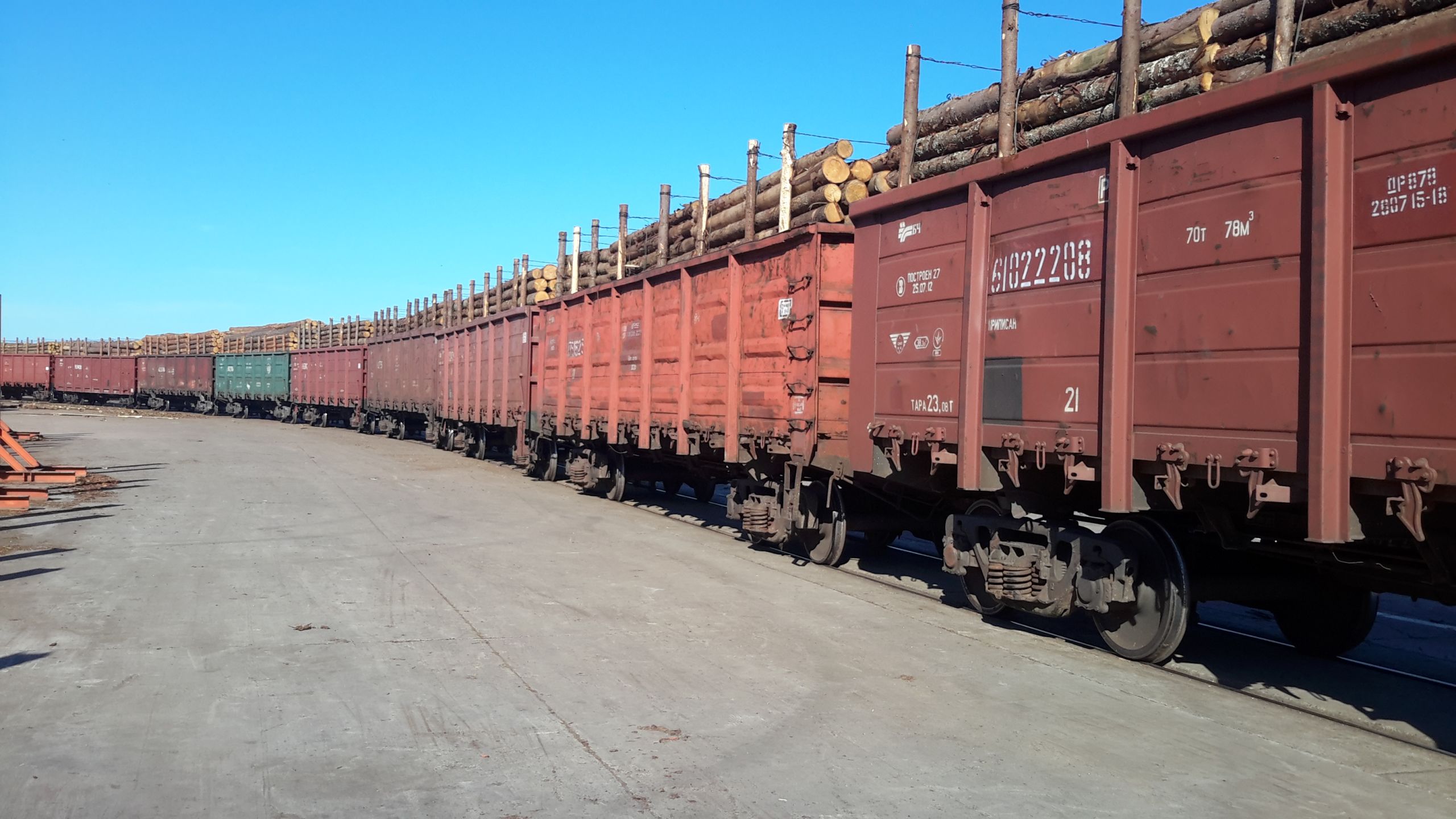
Wagons with timber head towards the Romanian border from Ukraine © Nikolai Petichenko
Wagons with timber head towards the Romanian border from Ukraine © Nikolai Petichenko
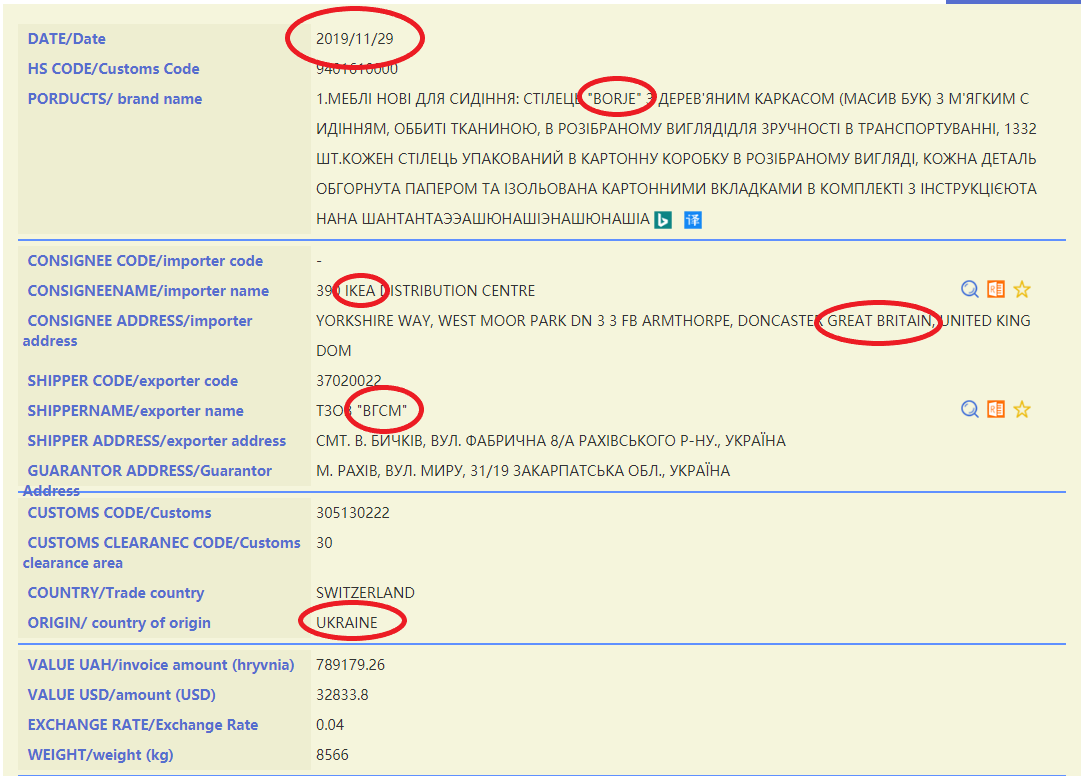
Shipping record showing export of VGSM-made Borje chairs to IKEA UK, November 2019 © Earthsight
Shipping record showing export of VGSM-made Borje chairs to IKEA UK, November 2019 © Earthsight
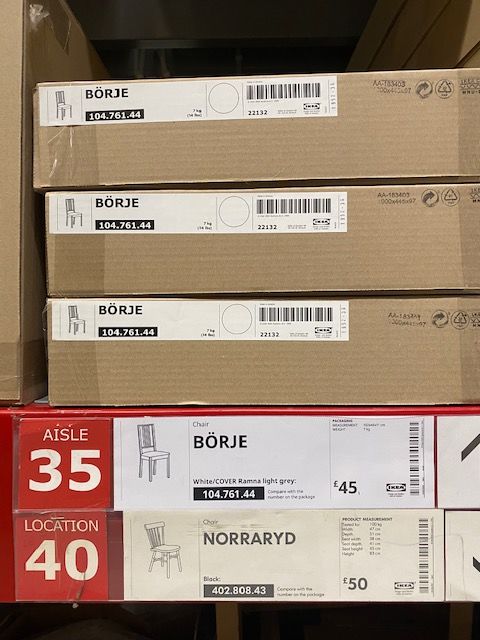
Beech chairs made by VGSM on sale in UK © Jeremy Bristow
Beech chairs made by VGSM on sale in UK © Jeremy Bristow
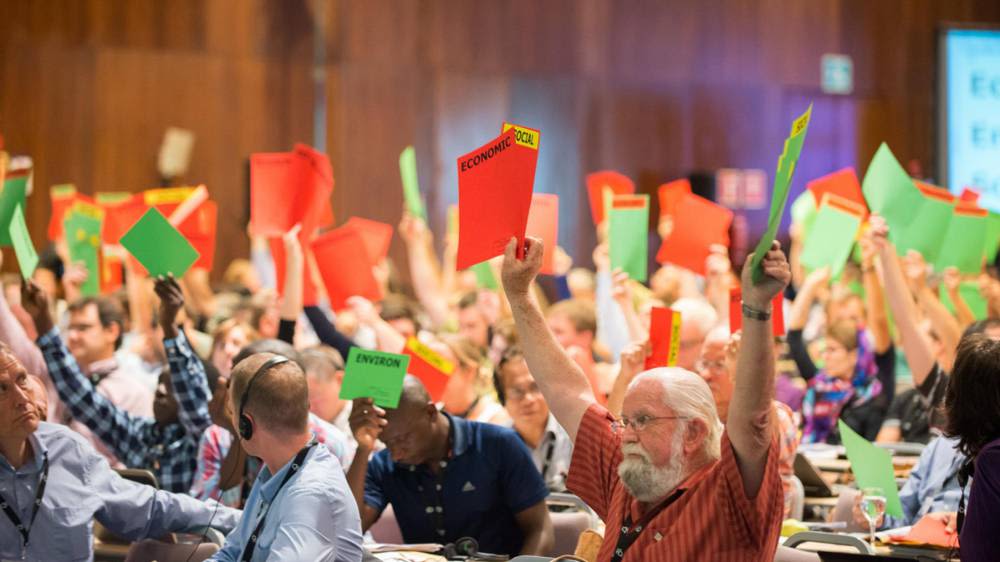
Members of different FSC factions vote on a motion © WWF Russia
Members of different FSC factions vote on a motion © WWF Russia
Both Ikea and WWF have promoted incremental improvements to FSC over the years. But they have failed to use their full power to push for the fundamental changes which would make it fit for the 21st century. Instead, their vocal support for the organisation makes those changes less likely to occur. Ikea must make clear to FSC and its fellow industry members that if it is to keep supporting and bankrolling the green label, systemic change is required. It must set a timetable for that change, and be willing to walk away if there is no real progress. In its response to Earthsight’s results (see Company Responses), Ikea noted that FSC is a membership organisation – one member, one vote – and that its influence is therefore limited. But that is to ignore the huge soft power it has.
There are many individual actions which FSC needs to take, most of which environmental groups have been demanding for many years.
It must ban the use of its name and logo in relation to the ‘chain-of-custody’ certificates it issues. It must impose a mandatory traceability system to ensure non-FSC wood cannot continue to be so easily laundered into FSC supply chains. It must make the resultant data public, enabling outsiders to check it for themselves. It must address the self-defeating system where certifiers compete for business from those they are meant to assess, by reforming its structure so that entities seeking FSC certificates no longer pay certification bodies directly. It must improve transparency, including requiring the publication of information on audits of chain-of-custody holders, as well as how its members voted when proposals are made for change. It must adopt a much more precautionary approach to risk in relation to the most egregious behaviour, shifting the burden of proof on to the loggers and timber firms, especially in high-risk countries. It should pro-actively look for evidence of breaches of its policy of association, not rely on NGOs to find it. It must recognise its limitations and be willing to call a halt to certification in the most lawless, high-risk environments.
But above all, what FSC needs is a radical shift in its philosophy. FSC is wedded to a perverse neoliberal logic that to save trees, you must cut them down. It is an argument which runs in the face of the evidence. But even if it were right in the longest timescales, in an era of climate emergency, where science is telling us we have as little as 12 years to save the planet, it is little short of madness. It must publicly recognise that pushing for ever growing and new sources of timber is fundamentally incompatible with its own original goals, as well as with any idea of sustainable growth in an era of climate emergency.
FSC is enabling the bad guys to keep being bad, by undermining efforts to end illegality and corruption, while at the same time it is also diminishing the good, by assuaging consumer concerns and genuine desire to do the right thing emanating from companies like Ikea, including promoting the cutting down of fresh trees over recycling.
FSC doesn’t just need change. It needs to be reborn. It is by no means certain that it is capable of this. But there is no organisation with more power to force it to do so than Ikea, apart perhaps from close partner WWF. Though many of its most progressive original supporters have long since walked away in frustration, if FSC looked willing to change many would return. And if it proves unable to reinvent itself, fast, then truly conscientious consumers, governments and companies must look beyond it.
Enabling action by governments
The failure of the wood industry to regulate itself shouldn’t be surprising. More than forty years of effort by campaigners to address the negative impact of the goods we buy – everything from blood diamonds to clothing made with slave labour – have provided a stark lesson. Trying to get companies to do the right thing voluntarily – whether out of good-heartedness or to ensure consumers keep choosing their products – doesn’t work. What is needed is action by governments. Laws demanding transparency regarding timber harvesting rights and beneficial ownership, for example. Well-funded, independent enforcement of forest laws. Functioning anti-corruption agencies and courts. Regulations in consumer countries demanding that imports of timber and wood products, or other products driving deforestation like beef, are traced to their source and proven to have been legally or sustainably produced.
For forests as for other issues, this lesson is being gradually learned. Pioneering laws in the US and EU already ban illegal wood from overseas. Consumer country regulations on other forest-risk products like beef and soy are also being considered. Better designed regulations, improved enforcement and greater transparency have yielded real positive impacts on forests in some countries, reducing the pressure on them from consumer demand. The real danger of the failings exposed in this report is that Ikea, FSC and their cheerleaders at WWF are undermining those efforts by maintaining the fiction that all is well.
In Ukraine, for example, the reforms needed in the forestry sector to address illegality and corruption and reduce the environmental impact of logging are clear. Local NGOs and international forestry experts are of one voice on what needs to happen. But so long as it can hide behind FSC certification and thus retain access to the EU market, there is insufficient incentive on the government to take the necessary steps.
EU governments are also feeding this failure. Under pressure from the powerful wood industry lobby, they are refusing to allow issuance of guidance on the EU Timber Regulation (EUTR) which is honest about FSC’s shortcomings in ensuring wood imports are legally sourced and therefore compliant. New guidance on Ukraine which takes into account the lessons from Earthsight and others’ revelations has been stalled in the European Commission for nearly two years as Member States debate the content. The latest indications are that it will not follow the evidence or the spirit of the law, but instead go easy on Ukraine (and the billion-dollar European firms dependent on its wood) provided the government promises additional reforms. Going easy on Ukraine will mean going easy on FSC, but there is no sign that promises of action by FSC are also being demanded.
Even if the EUTR were implemented fully, it would not be enough. The law itself has some crucial flaws which must urgently be addressed. Chief among them is that many wood products are exempt. This includes wood chairs. Much of the wood being imported into the EU from VGSM by Ikea and Plimob is not covered by the EUTR. Right now, these companies can import wood chairs made from stolen trees and get away with it scot-free. Ikea can help here too. Rather than lobbying for EUTR to be watered down with a green lane for FSC, the Swedish giant should be lobbying for it to be strengthened, by closing this loophole.
Ultimately, this report’s story is about much more than Ikea, Ukraine or even FSC. It is about what the world must urgently do to prevent wood consumption destroying nature and the climate. The actions above are a good place to start.
Company Responses
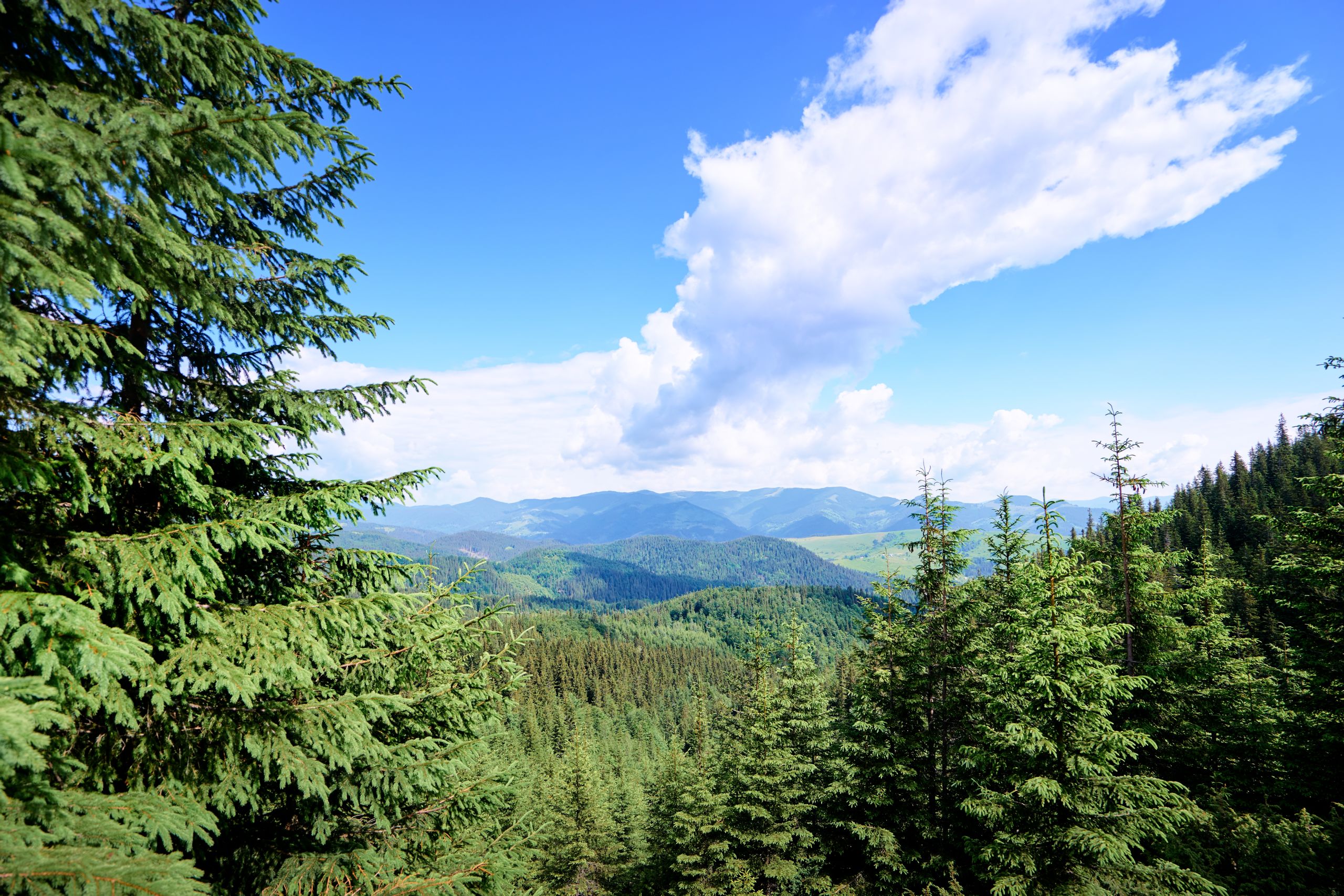
In advance of publication of this report, Earthsight sent a summary of its findings to the main companies named, to give them an opportunity to comment. Their responses are summarised below.
In their response to our findings, Ikea stated that they do not accept illegally logged wood in their products, and “work proactively to install measures to verify supplier compliance with legality”. They state that they take further measures than usual in countries like Ukraine to ‘strengthen due diligence’. Ikea told Earthsight that it had approached ASI (the FSC entity tasked with compliance) to request them to investigate our findings. With regard to influencing FSC, Ikea state that “FSC is truly a stakeholder driven organisation and IKEA is only one stakeholder in that process”, and reiterate that they “strongly believe that FSC is currently the most robust and credible forest certification available”. Regarding their level of wood use, Ikea stated that it has ‘an ambitious agenda to grow our recycled wood segment’ and also seeks to minimise waste and use raw wood material as efficiently as possible. It noted that the wood consumption figures cited by Earthsight include recycled material.
With regard to the breaches of the silence period regulation, Ikea claims that the restrictions on sanitary felling during this time relate only to those locations identified as animal breeding sites, that 6206 hectares of Velyky Bychkiv SFE had been identified as such and that no sanitary logging had been allowed there. Earthsight disputes Ikea’s interpretation of the silence period law, which contradicts that of Ukraine’s own State Ecological Inspectorate, prior formal guidance issued by Velyky Bychkiv SFE itself, and that of FSC Ukraine. Ikea nevertheless recognised that the wide application of sanitary felling in Ukraine can ‘potentially lead to its misuse’ and that this needs to be addressed. They state that they intend to contact the Government of Ukraine to address the need for reform.
FSC accepted that Ukraine’s problems include corruption and law enforcement failures, making it a difficult environment. It stated that it “condemns illicit acts by its certificate holders” and that “where these are identified or reported, they are investigated, and [if proven] the certificate is suspended or terminated, or […] the certificate holder is expelled completely from the FSC system”. It stated that it is already working to improve supply chain integrity and engagement with stakeholders in Ukraine. While it accepted that “rules have to be followed”, and recognised (unlike Ikea) that “the ‘silence period’ is imposed on all management areas irrespective of the prevalence of animals”, FSC also questioned the wisdom of existing regulations on sanitary felling, including EIA and silence period requirements.
When presented with our findings, VGSM stated that the silence period logging prohibition in the wildlife law is ambiguous, and no penalties are specified for breaches of it. They claim that the SEI report did not include penalties for the violation of it in 2018. They claim that Velyky Bychkiv SFE has a list of breeding sites for wild animals and do not allow logging on these sites. They also deny breaching other laws. VGSM claimed that its activities and that of Velyky Bychkiv SFE did not constitute ‘illegal logging’ but were the result of ambiguities and inconsistencies in forestry laws and regulations. VGSM nevertheless committed to ‘improve our activities in accordance with [the wildlife law]’ in response to Earthsight’s findings and committed henceforth to ‘eliminate the problem of harvesting in a period of silence’. VGSM denied purchasing from sixteen other SFEs. For timber from the SFEs specifically named in the report, VGSM stated that these purchases either did not take place, or if they did the wood was not used for Ikea products.
Responding to Earthsight’s findings, Plimob confirmed that it imported beech parts from VGSM. It said all its own and its suppliers’ actions were legal and followed “the principles of a sustainable business the least harmful for the environment [sic]”.
In its response to our draft findings, Egger stated that all wood imports from Ukraine are verified for EUTR conformity, with “audits [internal and third party] carried out all the way to the forest to ensure traceability and eliminate mixing risks and illegal logging”. It states that its efforts go beyond FSC certificates and checks conducted by EUTR authorities. It notes that Ikea has also audited its Romanian plant and found no major nonconformities.
Egger stated that it has “made every effort to ensure, independently of the State Forestry Resources Agency of Ukraine, that the origin of the timber supplied to it is clearly legal”, and that it strongly condemns any form of corruption or grievances within this state authority. It stated that it is “interested in ensuring that the state authorities in Ukraine work in accordance with the law and supports the demand for strict legislation and all regulatory measures needed to create legal certainty and transparency”, but stressed that “private companies cannot compensate for a lack of the rule of law”. It said it had sent an official letter to the State Forestry Resources Agency of Ukraine and asked them to comment on the allegations we raised against the institution and its staff.
Earthsight would like to thank all those who assisted with the research behind this report, especially Nashi Groshi Lviv, Ukrainian Nature Conservation Group (UNCG), Environment People Law (EPL) and Anti-Corruption Action Centre (ANTAC). Earthsight would also like to thank its funders. The content of this publication is the sole responsibility of Earthsight and cannot in any way be taken to reflect the opinions of our partners or funders. Illustrations: Sara Santini and Matt Hall for Earthsight

